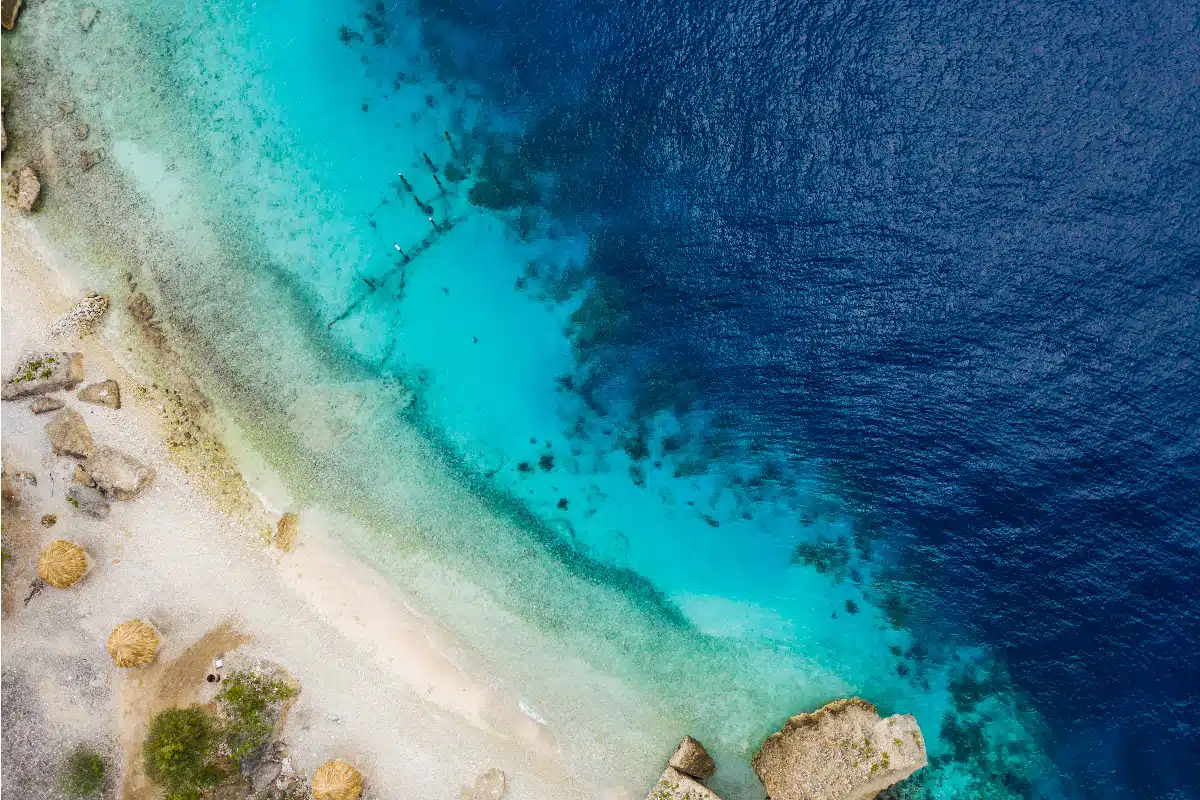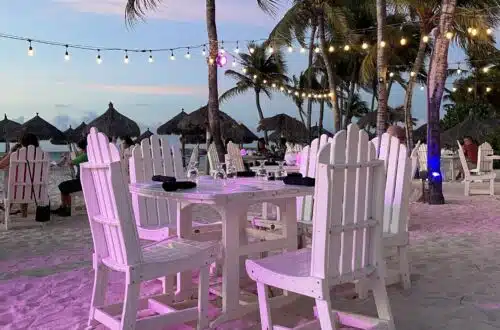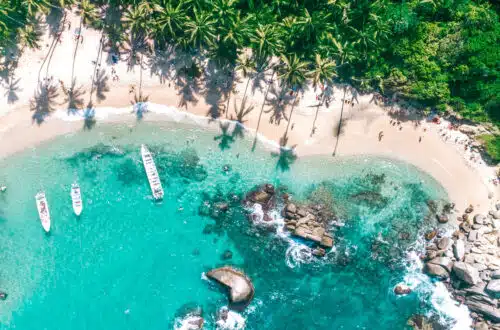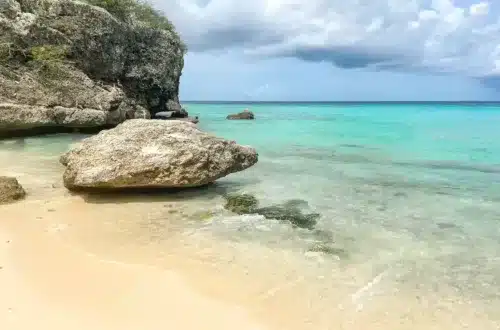The Ultimate Curacao Travel Guide (2024 Updated)
Are you looking for the ultimate Curacao Travel Guide? Then I got you covered!
Curacao is a small island located roughly 65 km off the coast of Venezuela in the Caribbean Sea. Being part of the Dutch Kingdom, Curacao combines Caribbean charm with European influences and deserves the reputation as a hip, vibrant, and colorful summer paradise.
Pristine white sandy beaches, lush green rain forests, and a bustling, vibrant capital city make Curacao not only a paradise for young people but in my opinion also the perfect spot for a honeymoon or romantic travel destination for couples.
Navigating the island without a comprehensive travel guide can be quite tricky. To make the planning a bit easier for you, I have gathered all the information I could get for this guide.
Having spent more than 20 weeks on this island this year with my husband, I have been able to create the most in-depth Curacao travel guide, featuring fun excursions, exclusive beaches, and the cutest restaurants on the island.
Let’s get to it!
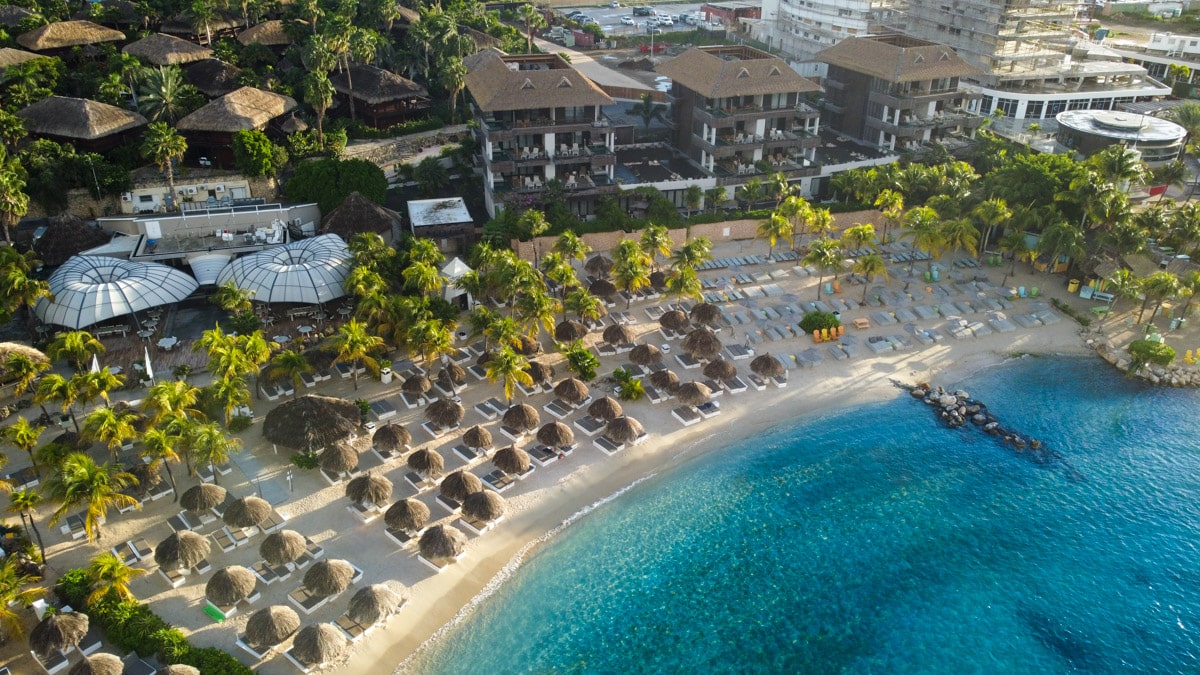
This post may contain affiliate links. As an Amazon Associate, I earn a small commission from qualifying purchases at no additional cost to you. Read my disclaimer for further information.
Things You Need to Know Before Visiting Curacao
☀️ There are four different languages spoken on the island: Dutch, Papiamentu, Spanish, and English.
☀️ Curacao has its own currency, the Netherlands-Antillean Guilder (shortly NAFl, ANG, or f). However, most places also accept US Dollars. In some places, the Euro is accepted as a currency as well.
☀️ The tap water is safe to drink in Curacao, however, it does not taste very well in my opinion
☀️ The most common voltage in Curacao is 127 V and 220 V
☀️ The word Curaçao is pronounced as “Cure-ah-souw”
☀️ Curacao is part of the ABC-island chain, together with Aruba and Bonaire
☀️ The name Curacao comes from the Portuguese word “coracao”- which translates to “heart“. The locals refer to Curacao as Kórsou.
☀️The city of Willemstad is a UNESCO World Heritage Site, especially the inner city and the harbor have great historical value
☀️ There are about 60 culturally important plantation houses on the island, they were built in the 18th and 19th century
☀️ The population of Curacao is 160.000, whereas in Aruba only 110.000 people live, in Bonaire only 22.500
☀️ Curacao is home to the biggest Carnival celebrations in the entire Caribbean, it lasts for about 2 months
☀️ Spending at least one week in Curacao is recommended
☀️ Curacao is relatively expensive.
☀️ Citizens of most countries do not need a Visa to travel to Curacao (e.g. USA and Netherlands). Check the Curacao Entry Requirements for more info.
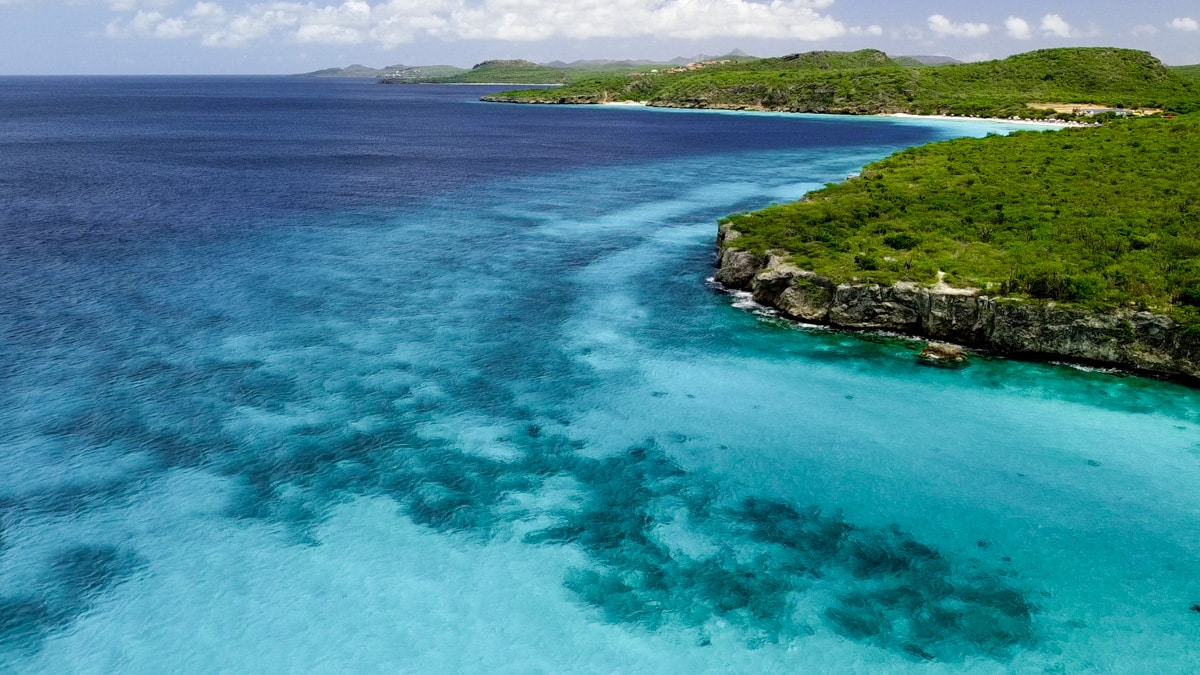
Important Words in Papiamentu
In order to communicate well in Curacao it can be good to know a few words in Papiamentu. Here are some of the most used words in Curacao that could be handy to know.
Bon Bini na Korsou – Welcome to Curacao
Bon dia – Good morning
Bon nochi – Good evening
Kon ta bai? – How are you?
Hopi bon! – Really good!
Mi ta bon, kon ta ku bo? – I am fine, how are you?
Mi tin un pregunta – I have a question
Por fabor – Please
Masha danke – Thank you very much!
Ayo – Goodbye
Dushi – everything is simply dushi (:
Best Time to Visit Curacao Island
You can nicely visit Curacao throughout the entire year. The island is sunny and warm with an average of 31°C (87,8°F) year-round. Read about the best time to go to Curacao to plan the perfect vacation.
There is no such thing as a heavy rainy season. But October, November, and December are often associated with small rain showers.
The showers are usually very early or very late in the day and very localized. Visiting Curacao during these months is not a problem at all, the showers quickly disappear and very rarely affect the day.
Curacao is outside the hurricane belt of the Caribbean Sea. This means, that during the hurricane season between June and December, there is less wind than usual, which makes the weather feel warmer than normal.
Having been here during all the different times of the year, I suggest visiting from May to November. That is considered off-season in Curacao.
This means fewer crowds and cheaper airfare and accommodations. Most of my experiences featured in this Curacao Travel guide will be even lovelier without crowds there so make sure to book off-season.
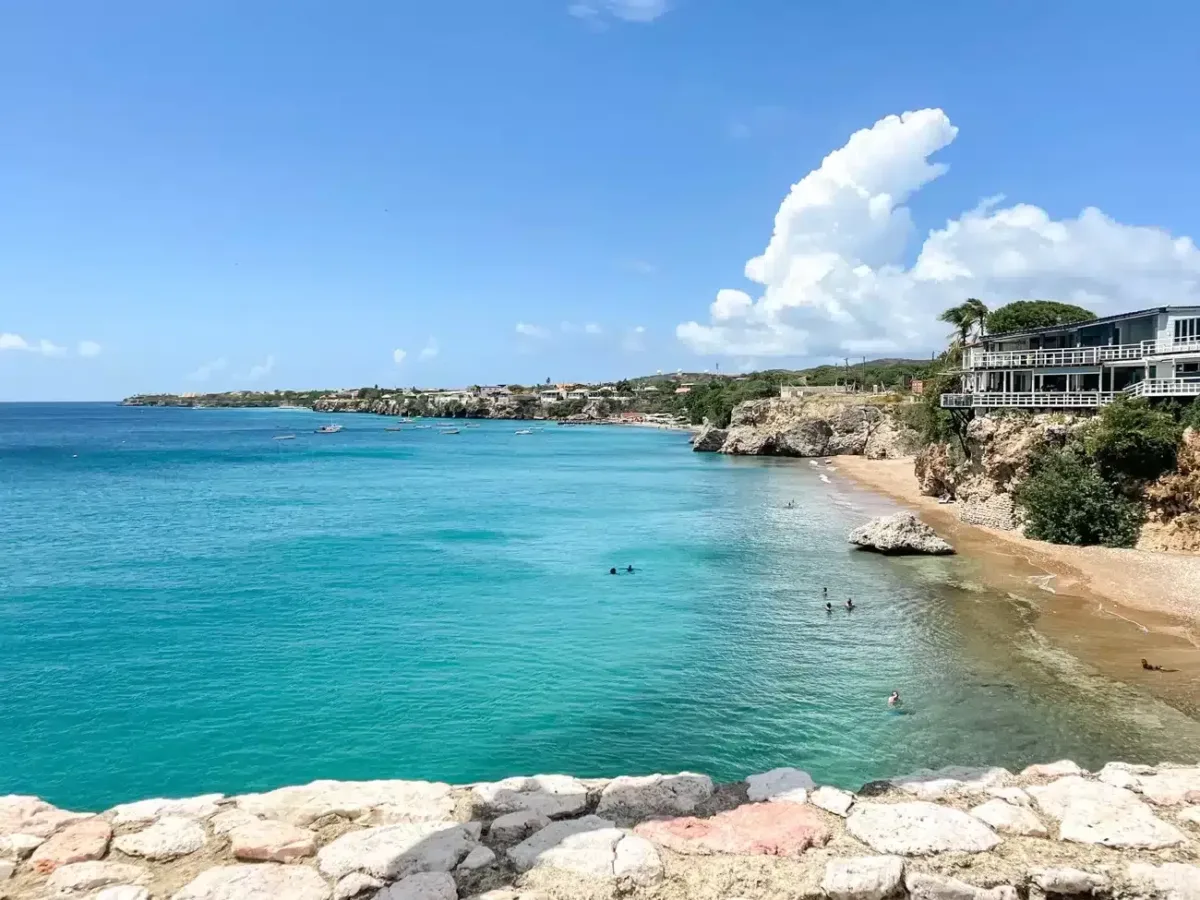
How to Get to Curacao
For traveling to Curacao you have two options, arriving via airplane or cruise ship. Depending on where you arrive, you have different options on how to get around the island.
Arriving Via Airplane at HATO Airport
Curacao has one airport, Curacao International Airport, also known as HATO (see on picture below). The island paradise Curacao has become quite easy to reach from abroad. 25 airlines offer direct flights from North and South America, Canada, and Europe.
KLM is currently operating two direct flights per day from Amsterdam Airport. There are also multiple flights daily from New York JFK, Miami, and Newark.
Within the Caribbean, smaller airlines, like Divi Divi Air and EZ Air operate between the islands. It is an especially easy commute between the ABC islands. There are multiple flights between the islands every day.
HATO Airport is quite far off the beaten track (as you can see on the map below). You will most definitely need a rental car or an airport transfer to reach it.
Taking a cab from HATO to your accommodation is possible, although I urge you to be mindful and research the price beforehand. Cab drivers in Curacao will likely try to rip you off. Try the app Curacao247 for a good taxi service.
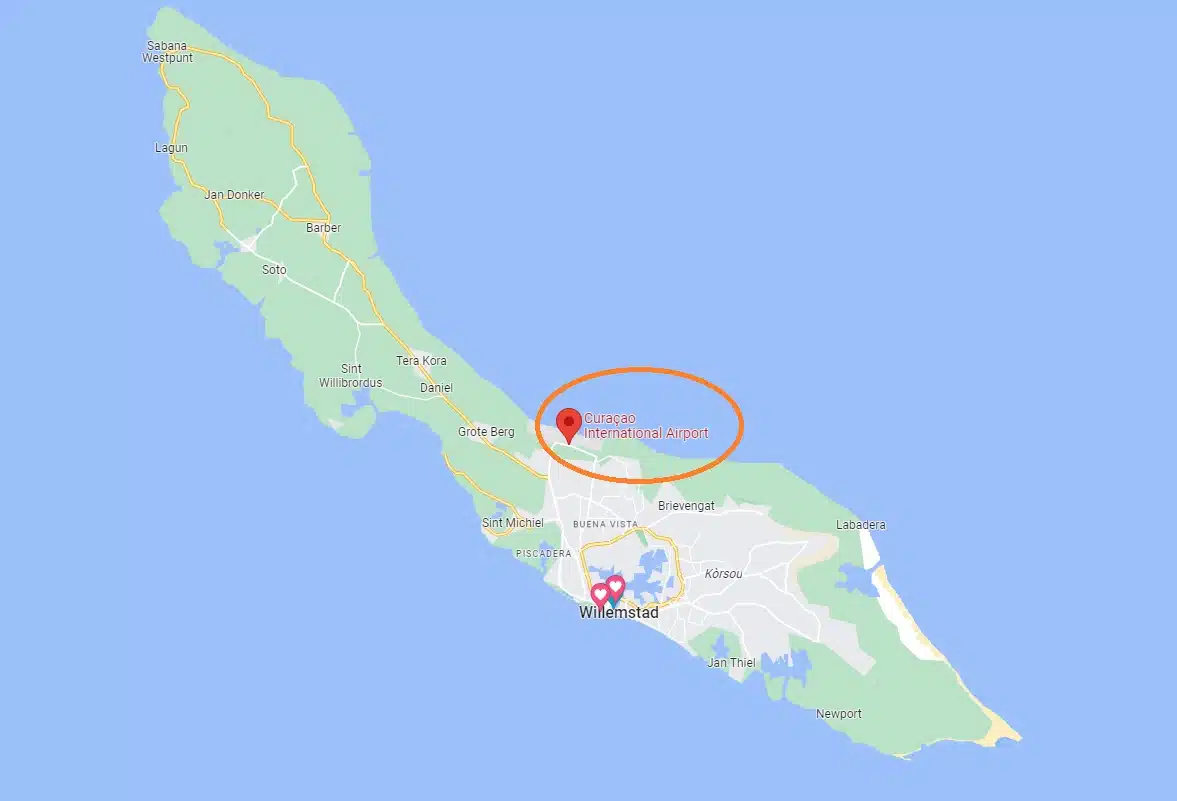
Arriving with Cruise Ship
Many bigger cruise lines offer Willemstad as a stop on their Caribbean itineraries.
Cruise ships dock on one of the two main terminals in the middle of Willemstad. Sometimes they also dock on the third, smaller terminal.
The main attractions of the city are within walking distance. You don’t need any transportation from the Cruise Port if you wish to explore Willemstad.
For visiting a beach from the cruise port, I recommend a rental car or a booked excursion. There are many things you can do in Curacao on a cruise.
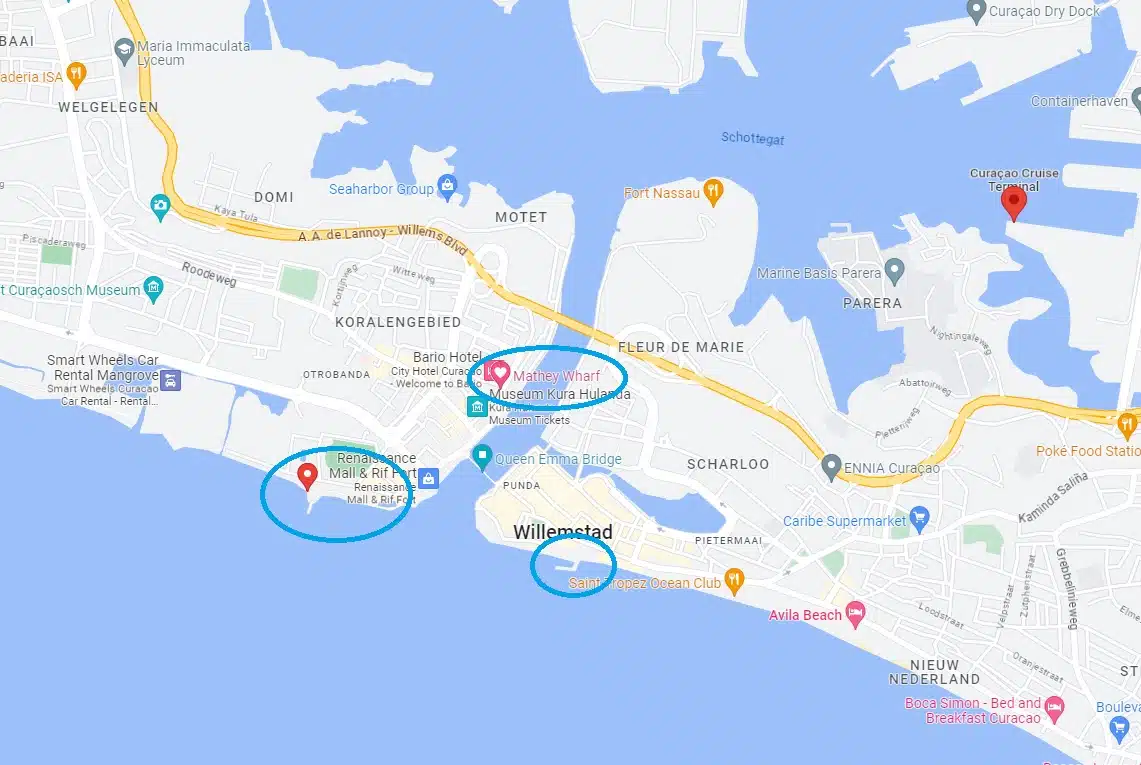
How to Get Around in Curacao
Upon arrival, you will be asking yourself how to get around the island.
I strongly recommend getting a rental car at the airport for your stay. The best way to experience Curacao is to explore off the beaten track.
Many of the famous beaches can only be reached by car (public transport is not great on the island). The beaches are also quite far away from each other. Taking a cab will become very expensive over time. Parking is free almost everywhere on the island.
Fuel is not too expensive in Curacao. However, most gas stations have a weird prepaid system in place. It requires you to walk up and pay a random amount of your choice with your credit card. If you do not use all of it, you have to walk back over to make them give credit.
Traffic is quite insane at times, and there are many accidents on the road. Make sure to always be careful on the road. Many locals do not exactly stick to all the traffic rules.
The road signs used in Curacao are mainly the same as the Dutch road signs. However, the traffic rules were being set up like American traffic rules, so it can be quite confusing.
There are many things to do in Curacao that definitely require a car.
Where to Stay in Curacao
Figuring out where to stay in Curacao is easier said than done. The island might be very small, but there is a huge variety of different neighborhoods with completely different vibes.
Luckily, there are many great areas to stay in Curacao. If you are looking for a dive resort in Curacao, look no further.
While most guides out there tell you to stay in Jan Thiel Beach, I suggest you can do better. Jan Thiel Beach is basically a much warmer version of the Netherlands, and therefore 100 % touristy.
To help you with the choice, I have compiled a list with a couple of my favorite hotels and neighborhoods to stay in for this Curacao Travel Guide.
All of these properties offer an authentic, luxurious, and most importantly a fun holiday experience.
Willemstad Punda/Pietermaai
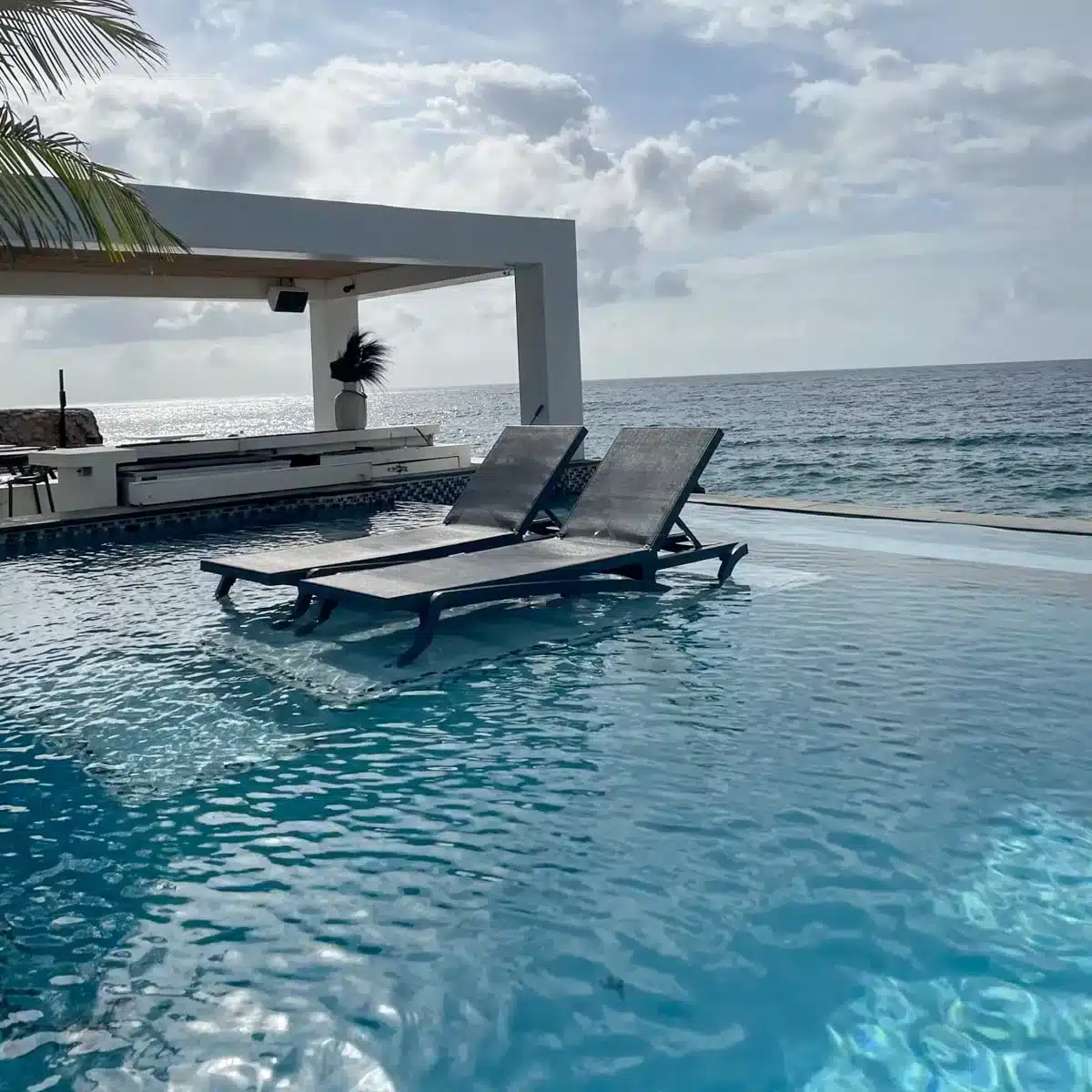
Saint Tropez Boutique Hotel & Ocean Club
- Pietermaai District
- Fancy Boutique Hotel
- 24 Unique Rooms
- Stunning Infinity Pool
- Delightful Restaurant
Willemstad is a great area to stay in Curacao. Staying in Willemstad is ideal for younger travelers, digital nomads, and culture enthusiasts.
Punda is one of the most famous neighborhoods on the island. This part of the city is home to the famous Handelskade, the collection of picturesque, colorful houses near the water. Punda is also the center of attention in Curacao and is close to many great attractions and renowned restaurants.
A couple of footsteps away from the Punda district is the neighboring, Instagram-famous Pietermaai district. This is commonly referred to as the SoHo of Curacao, filled with great restaurants, fancy ocean clubs, and offering great nightlife.
During the evenings, the Pietermaai district turns into a vibrant center of activity – during daytime, it is much quieter than Punda and offers a great area for a romantic stroll through the alleys surrounded by rainbow-colored houses.
For more info about Willemstad check my ultimate Willemstad guide!
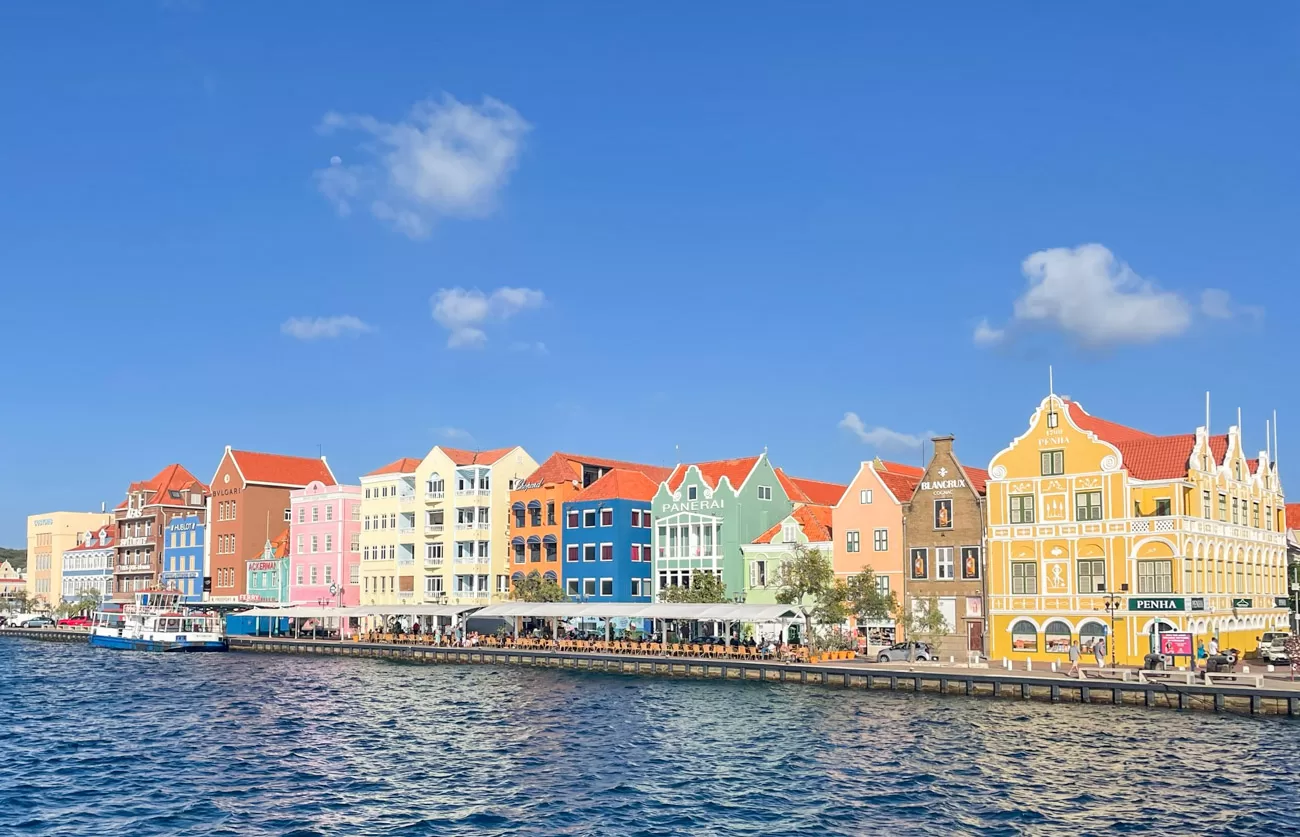
Outside Willemstad/Piscadera Bay
Baoase Luxury Resort
The Baoase Luxury Resort is one of the most romantic and luxurious accommodations on the island. With only 23 extravagant rooms and suites, it is at the same time super quiet and exclusive. The motto of the resort is to give a Balinese feeling while providing luxury without limits and high-end service.
The resort is also home to one of the most unique and extravagant fine cuisine restaurants on the island. They even offer private romantic dining experiences for honeymooners and lovebirds.
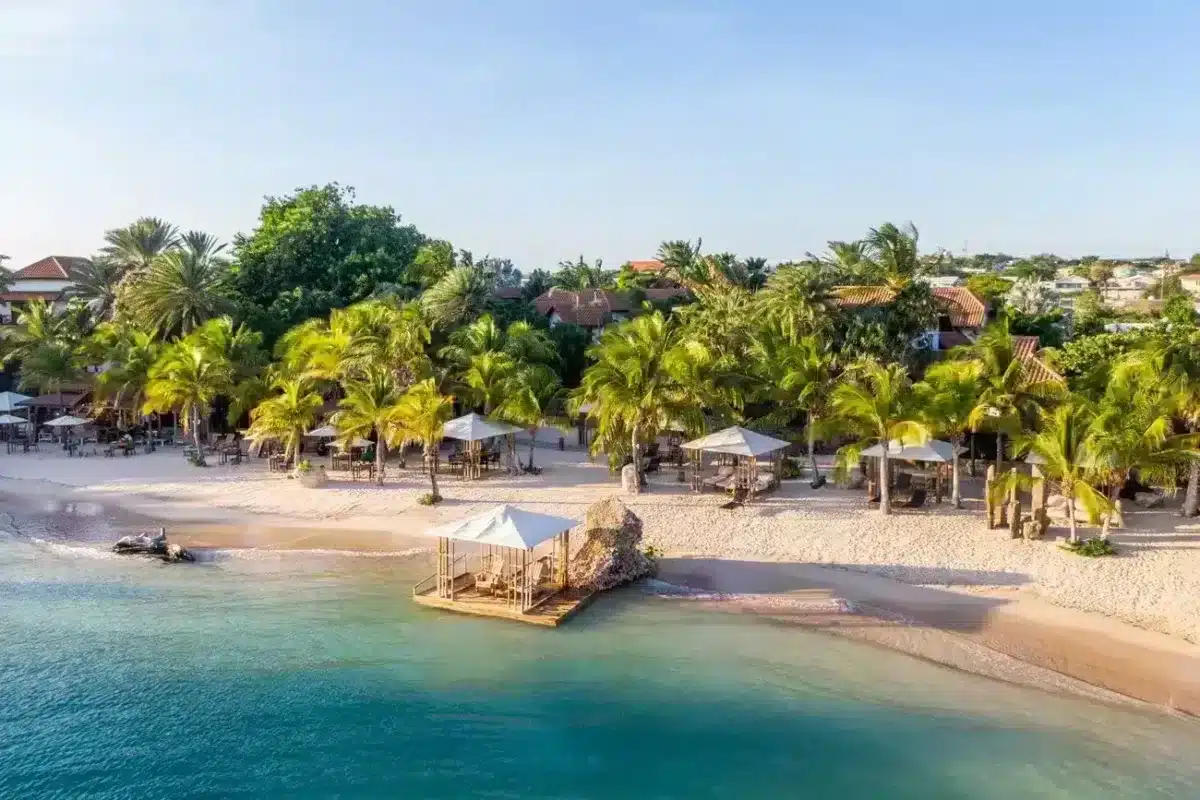
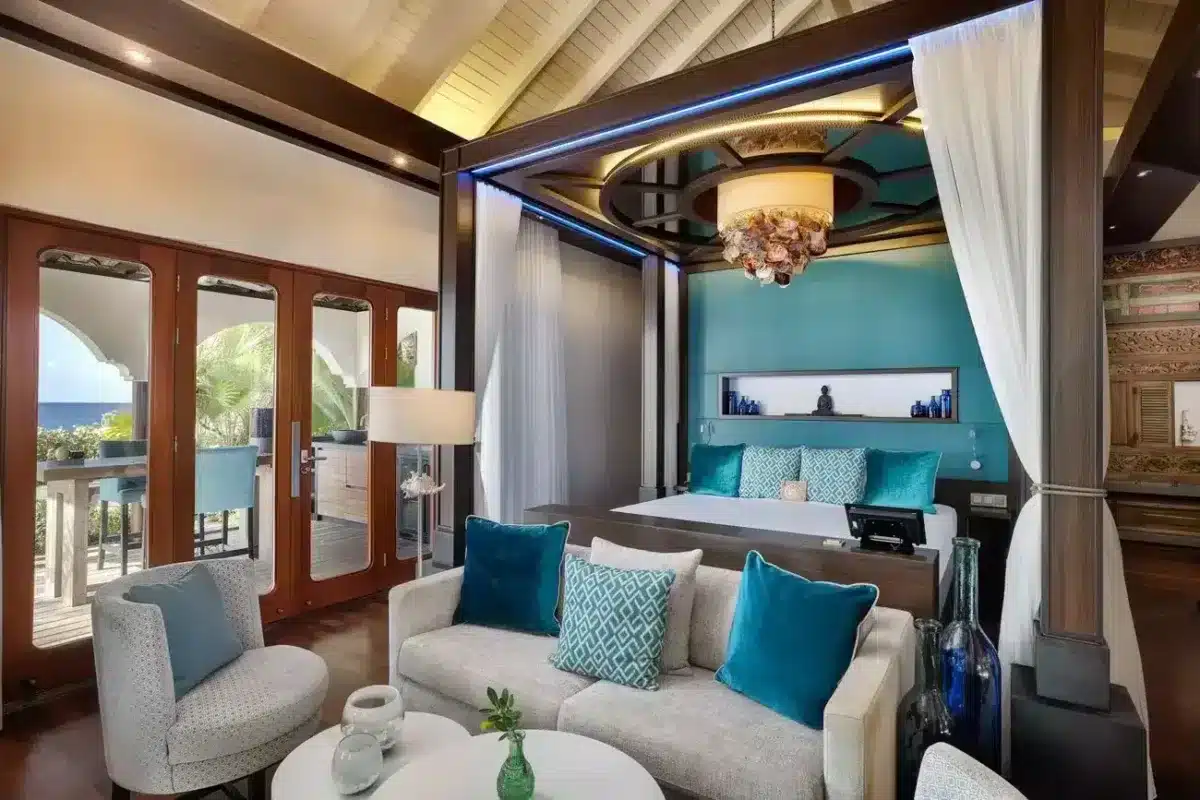
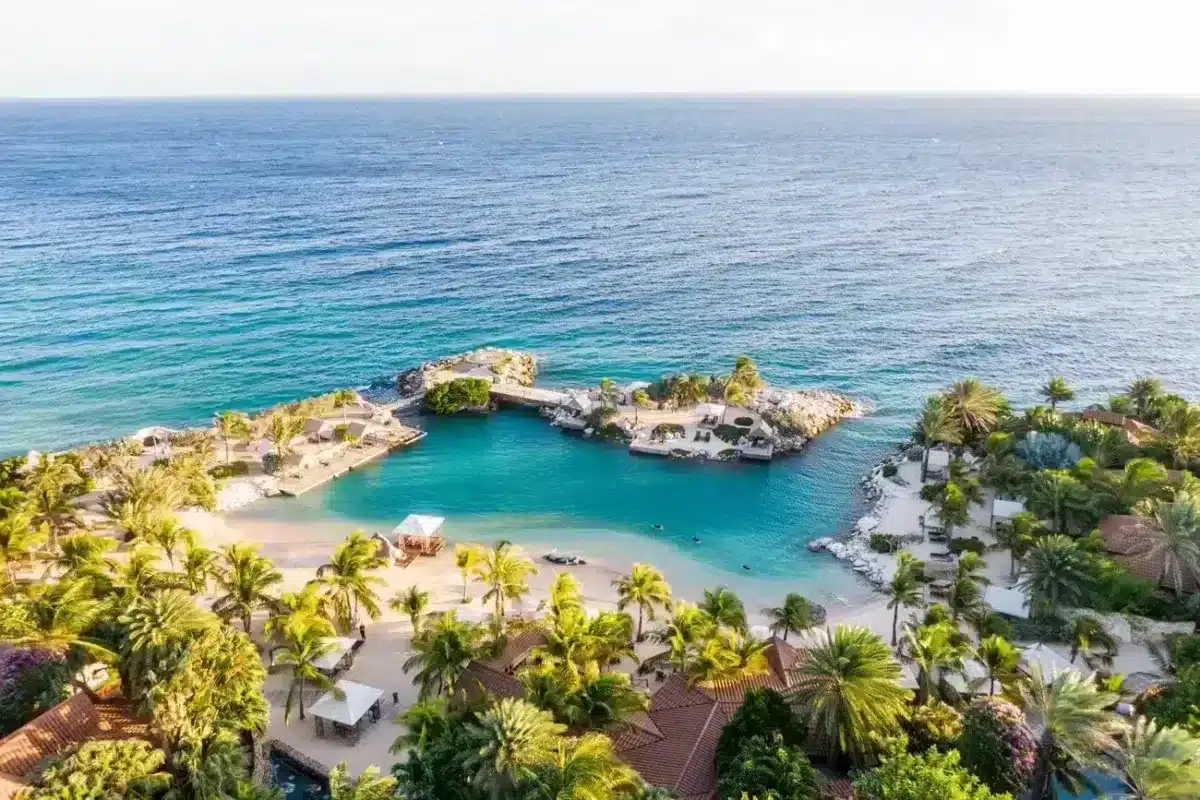
Acoya Curacao, Resort, Villas & Spa
For everyone interested in spending more time on the island, Acoya is the perfect place to stay. Acoya has the most spacious and well-equipped villas on the island.
Most villas have private pools and all of them are equipped with a fully functioning kitchen including all utensils you might need on a longer stay. We have stayed here for more than 10 weeks this year and were supplied with everything we could possibly need on this stay-cation.
Acoya also has a great restaurant called La Lagoon, which offers high-end fusion cuisine with an authentic Curacao twist. Furthermore, you can find a beautiful spa and a fitness room on the premises.
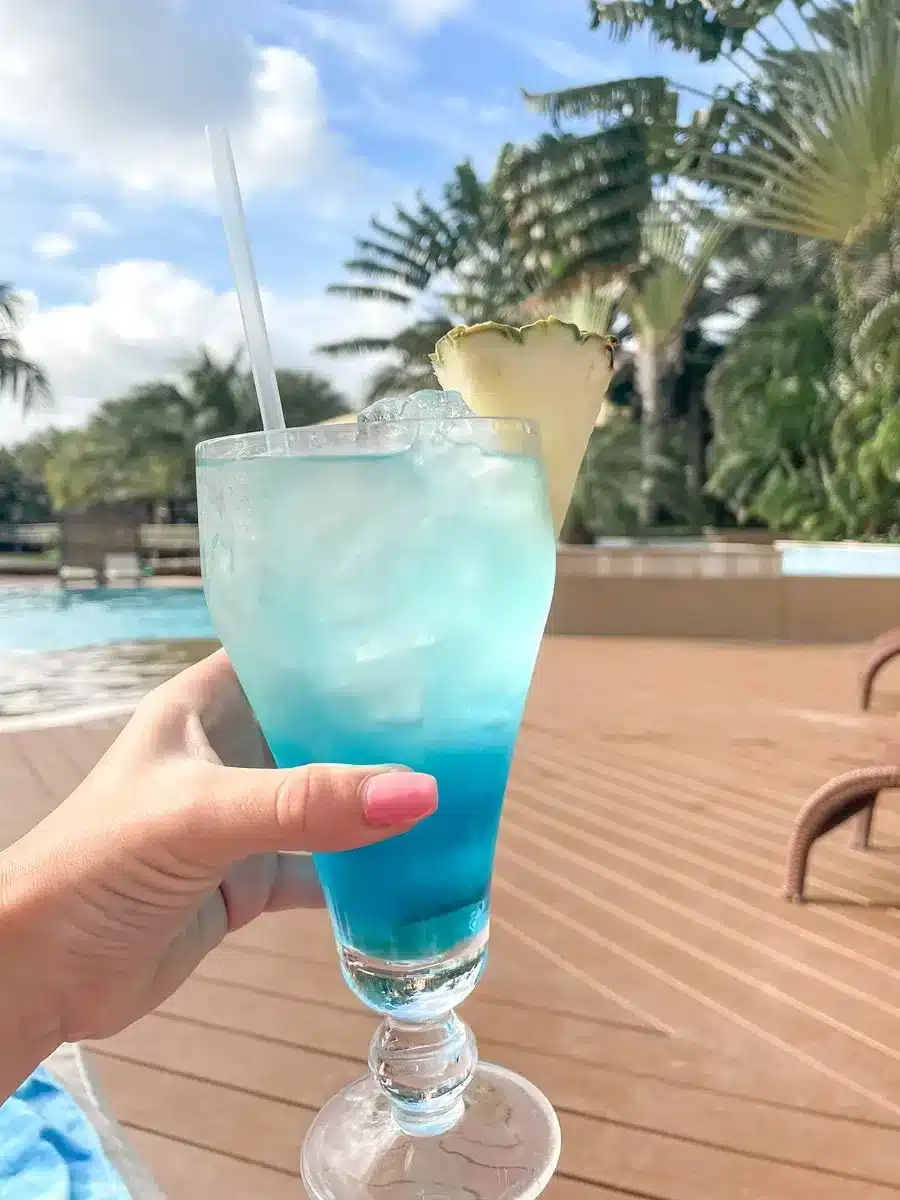
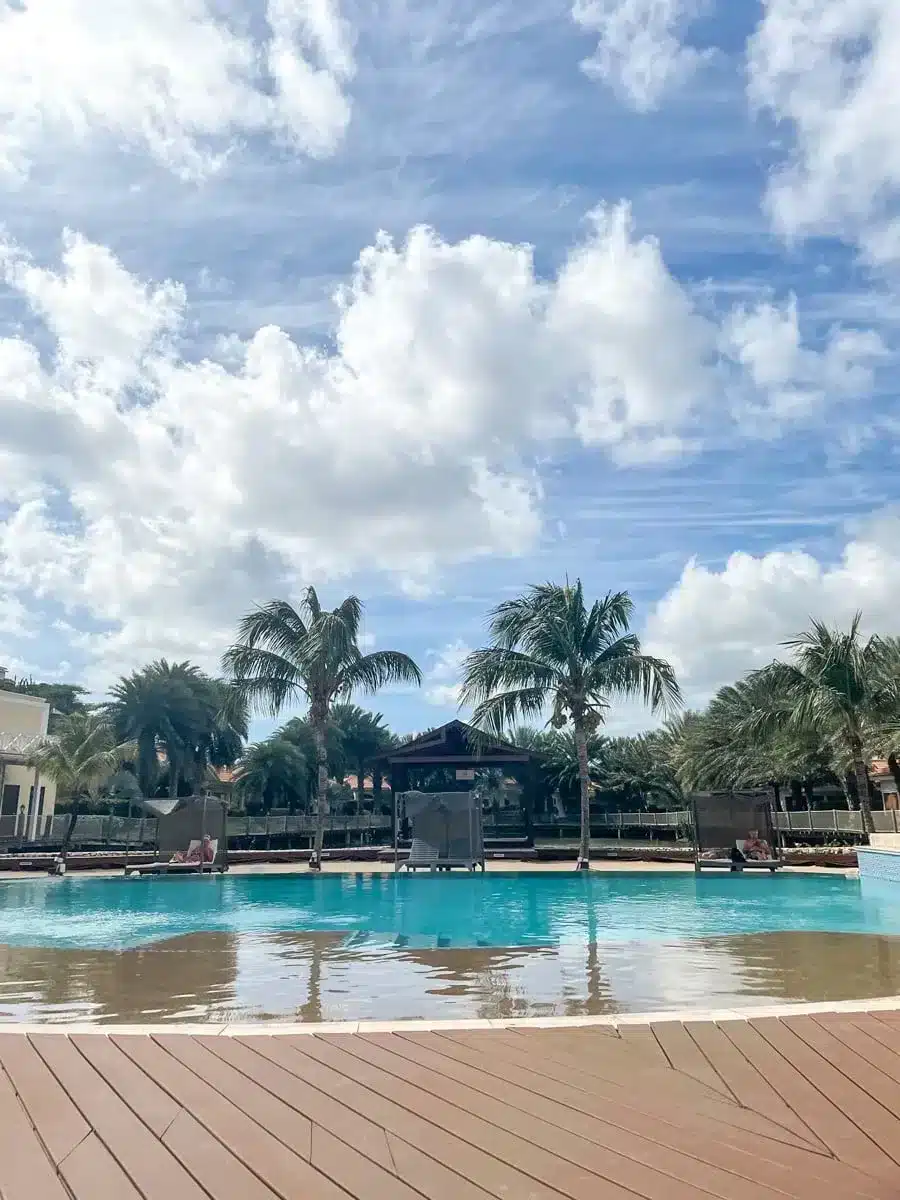
Playa Lagun
The beautiful Playa Lagun is a small, secluded beach nestled in between two cliffs. It is located roughly 30 minutes outside Willemstad by car. Playa Lagun is a famous snorkeling spot on the island since it is a great spot to visit sea turtles.
We have stayed in Playa Lagun many times before, and we find it to be the most peaceful spot on the island. From the cliffs, you have a stunning, unobstructed view of the ocean. This is also the best place on the island to see the sunset because it is very quiet and romantic.
However, it is still a relatively non-touristic area. There is a great small restaurant as well as a dive school, but you will not find much else there. It is very closely located to some other beautiful beaches, such as Kleine Knip Beach and Playa Grandi.
Lagun Ocean Resort – Best AirBnB Curacao
Apart from the dive school apartments, there is very little option for accommodation in Playa Lagun: The Lagun Ocean Resort and the Lagun Blou Resort. Both are gated communities that consist of small and mid-size houses that can be rented.
We have previously stayed at the Lagun Ocean Resort, which also has a small swimming pool and some great outdoor seating arrangements. We prefer the Lagun Ocean Resort over the Lagun Blou Resort because it is within walking distance of the romantic little restaurant Bahia.
The houses are usually stretched out over two stories with a terrace both upstairs and downstairs. Make sure to book a house with an ocean view, since this is one of the most beautiful places to take in the clear blue water on the island.
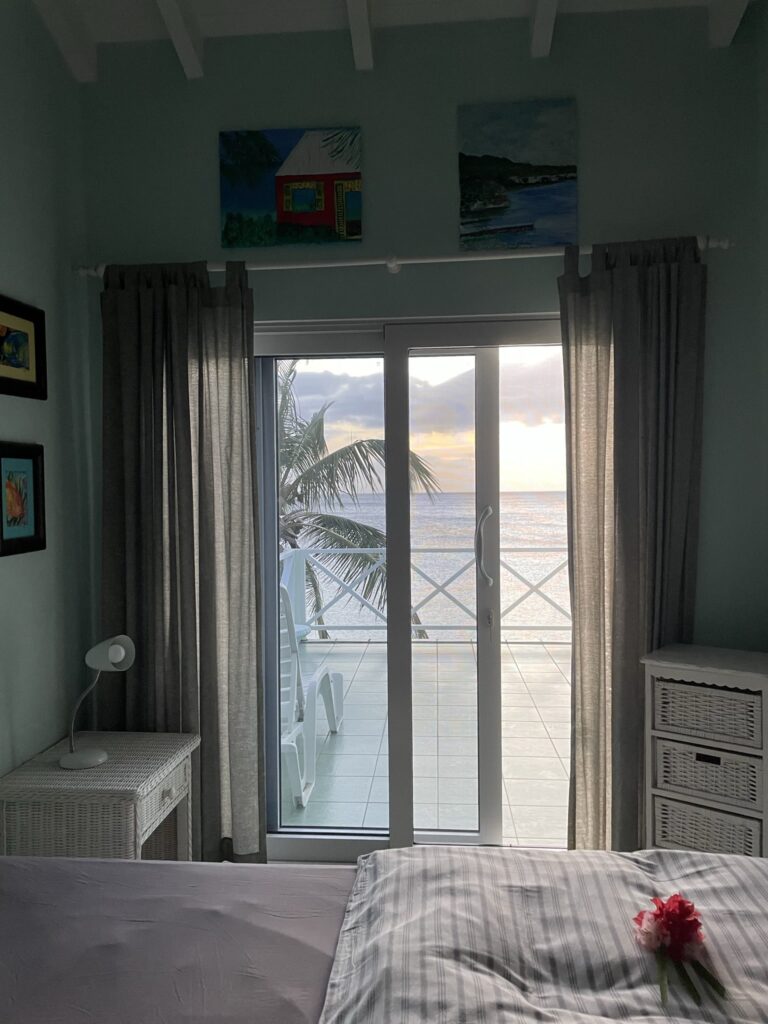
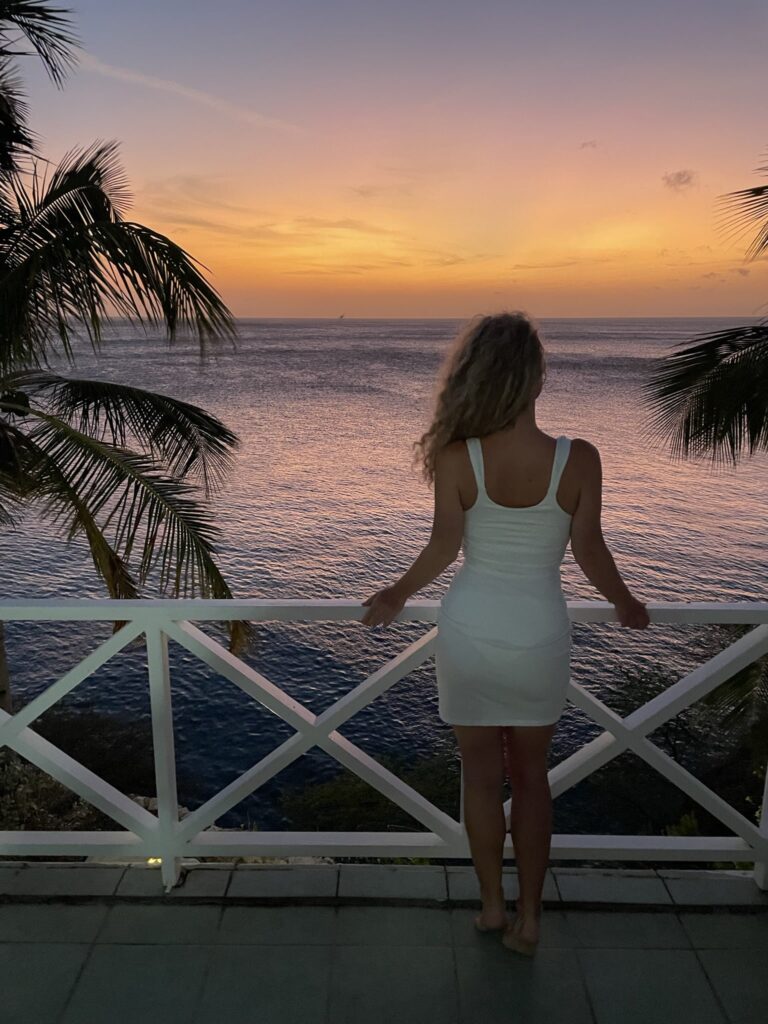
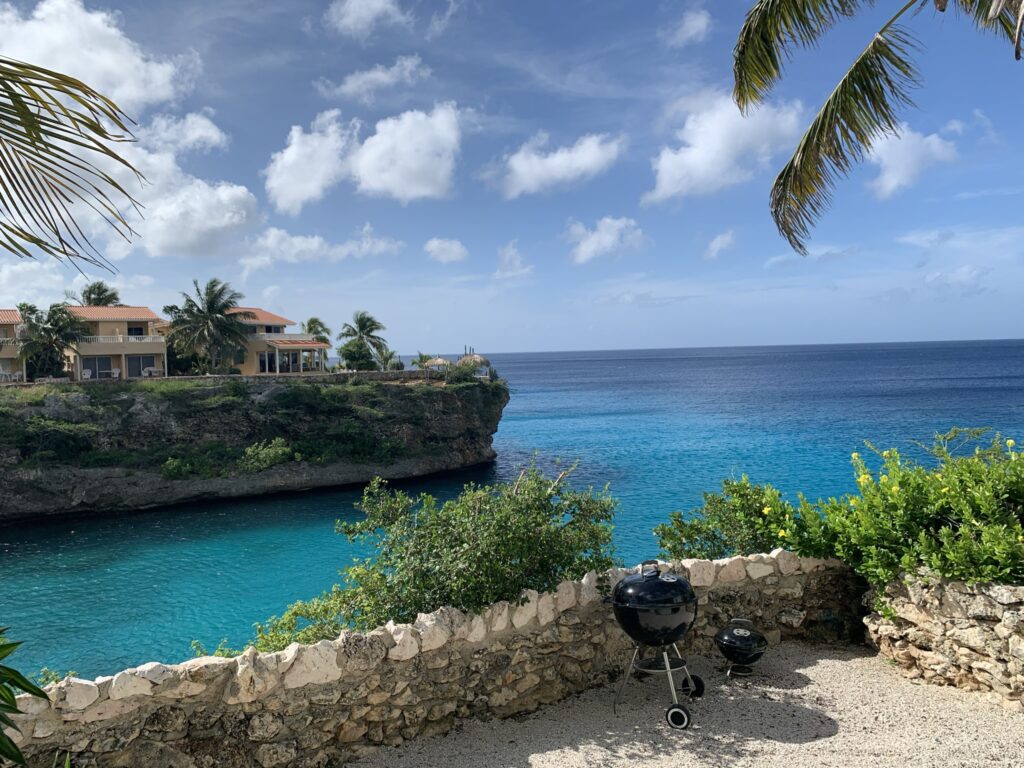
The Best Beaches in Curacao
According to Curacao officials, there are roughly 38 different beaches on the island, and I most definitely believe that. Wherever you go on this island, you will be able to find beautiful small bays tucked away and endless white sandy beaches.
Choosing which beaches to go to can be quite a challenge. I have compiled a list of my favorite beaches. They are all suitable for couples, honeymooners, and young people looking for a nice place to relax for this ultimate Curacao travel guide!
Of course, I have also included beaches for water sports, diving, and snorkeling.
Curacao Beaches Map (Interactive)
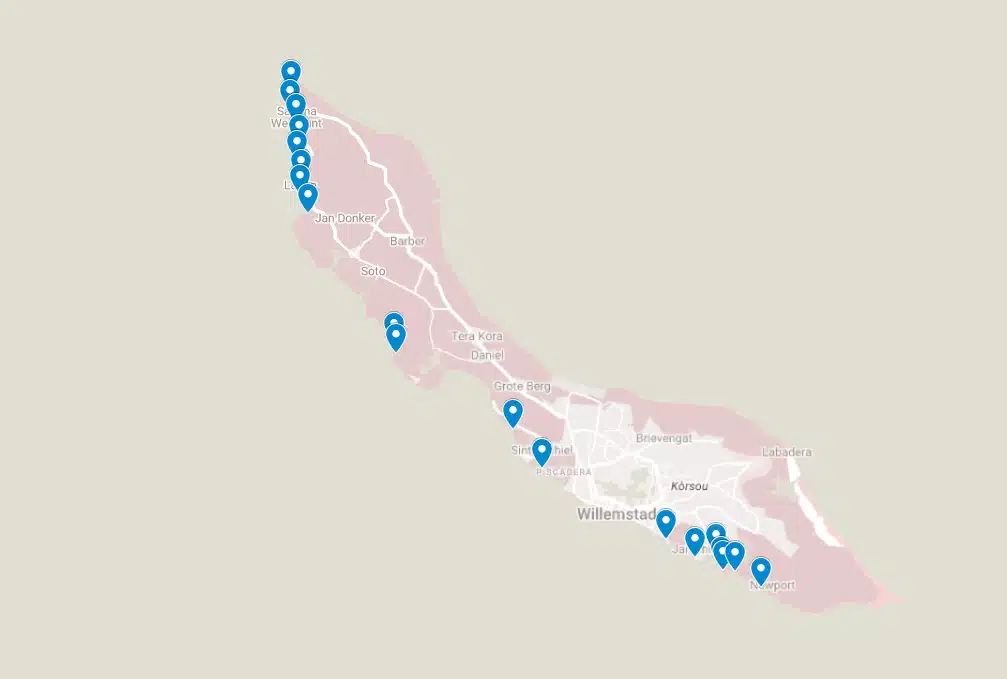
Playa Porto Mari
My favorite beach on the island is Playa Porto Mari. The area is known for being “the beach, where nature comes first”. And this could not be more true.
Two cute pigs, called Willy and Woody, live close to the beach. On special days, they will join the vacationers and enjoy a nice bath in the ocean or get a tan in the sun.
The restaurant close to the beach is called Willywood (after the pigs) and serves delicious fish, burgers, cocktails, and much more. There is a small takeaway bar in the restaurant, that offers cocktails and coffee to go!
For everyone who is not only interested in swimming and enjoying some nice food, there is a small driftwood painting workshop that is available every day from 11 in the morning. Talk about a cute, self-made souvenir! The instructor is a very nice local who helps out the not-so-artsy people and also shares a great deal of knowledge of the island!
Playa Porto Mari is great for scuba diving in Curacao.
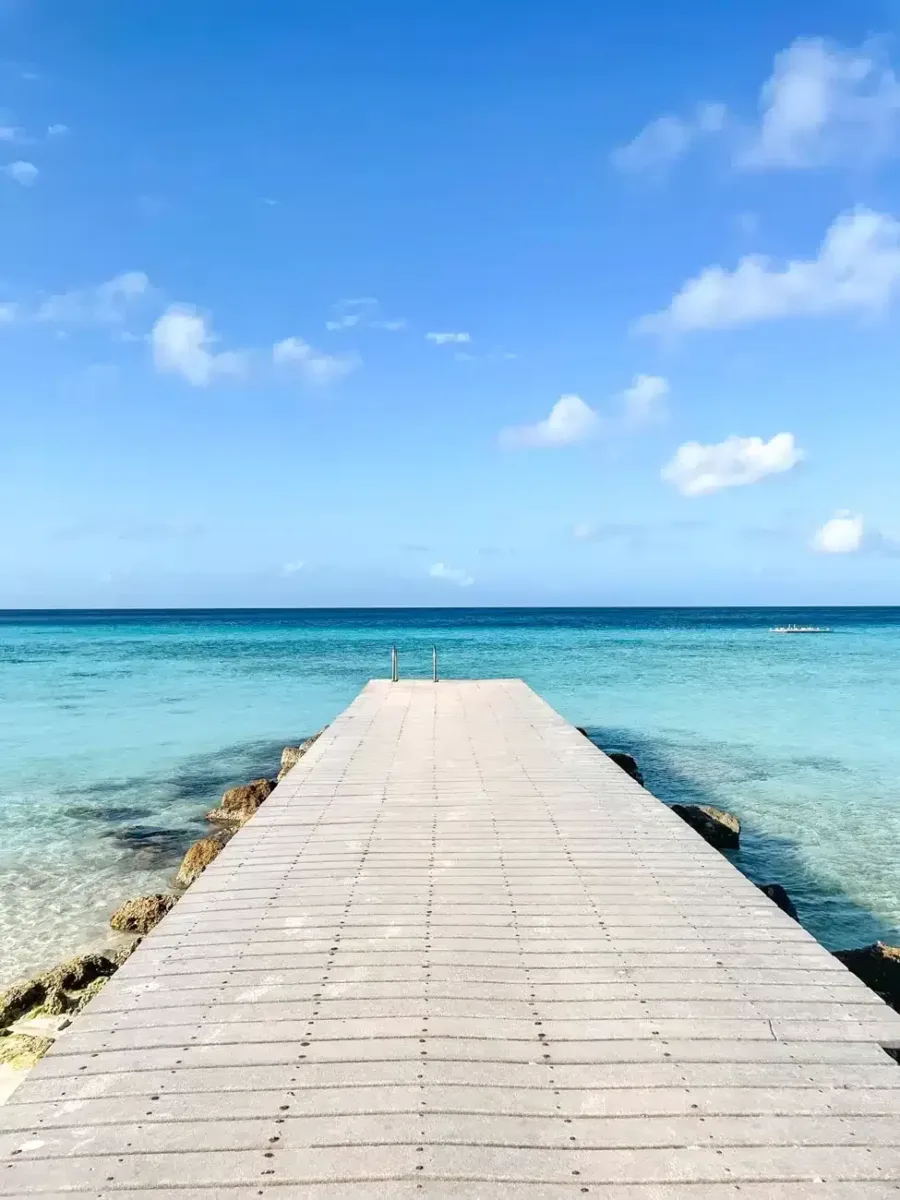
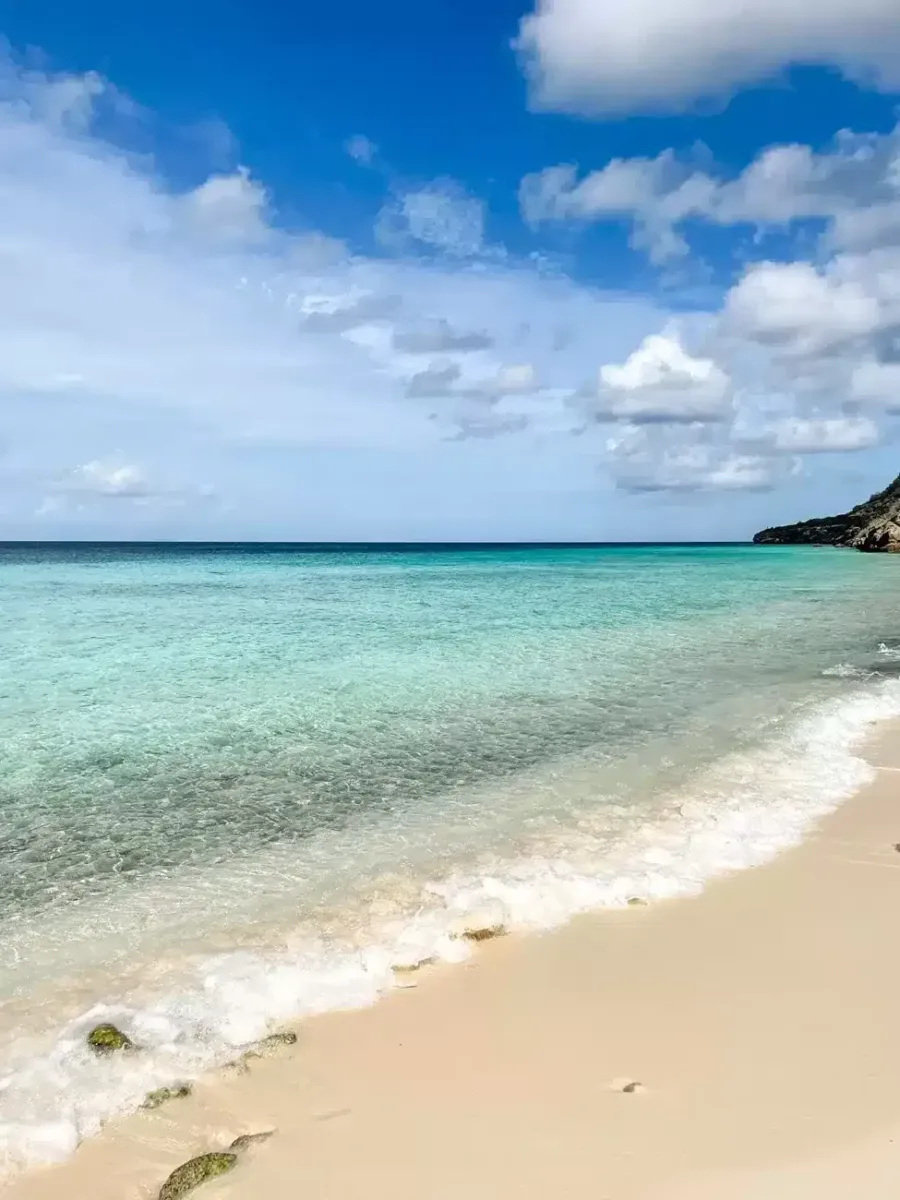
Cas Abao Beach
The Cas Abao beach is very similar to Playa Porto Mari, minus the pigs. It is also a fully-serviced beach, with a restaurant, massages, and tanning beds for rent. This beach is a true gem on the southwest coast of Curacao, with its turquoise waters and white sands.
Cas Abao Beach was recently voted as one of the 21 best beaches in the world by National Geographic. And I agree with that statement.
My favorite thing to do at Cas Abao beach is definitely snorkeling. The big cliffs on both sides of the beach are surrounded by a wide variety of fish and corals.
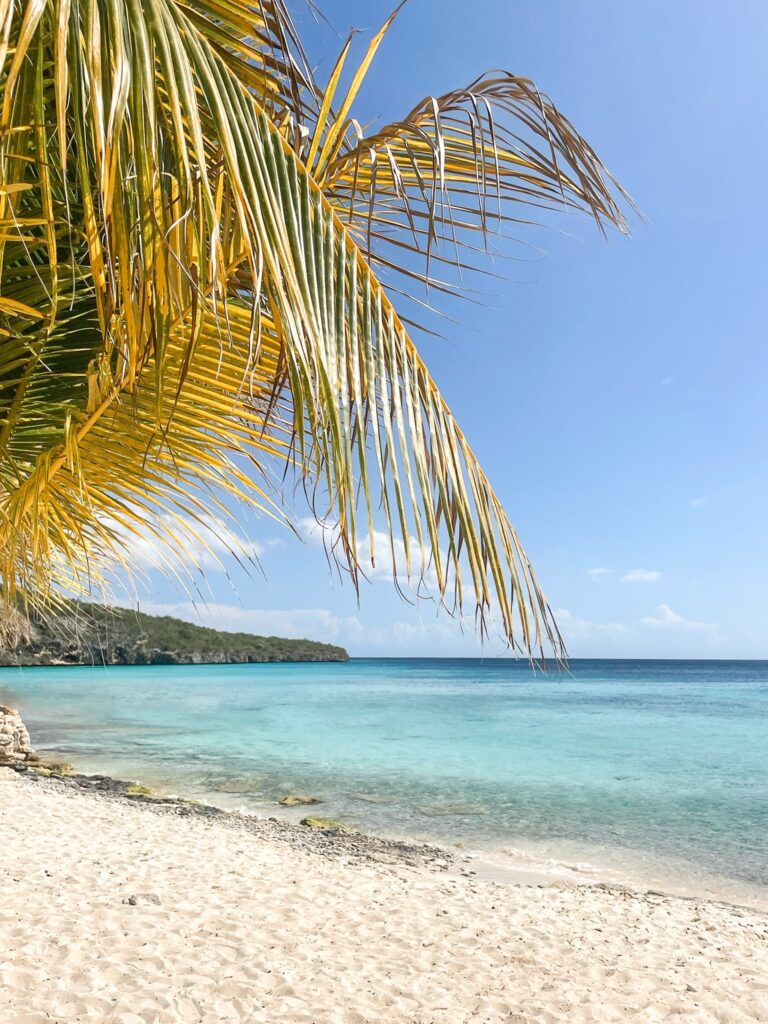
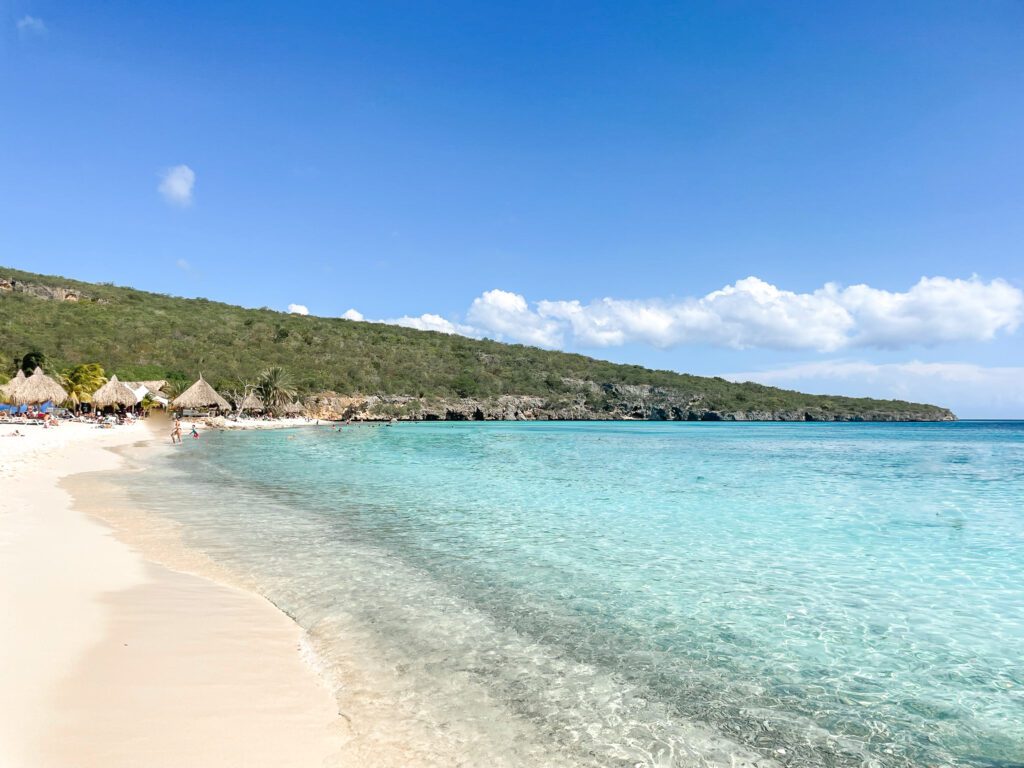
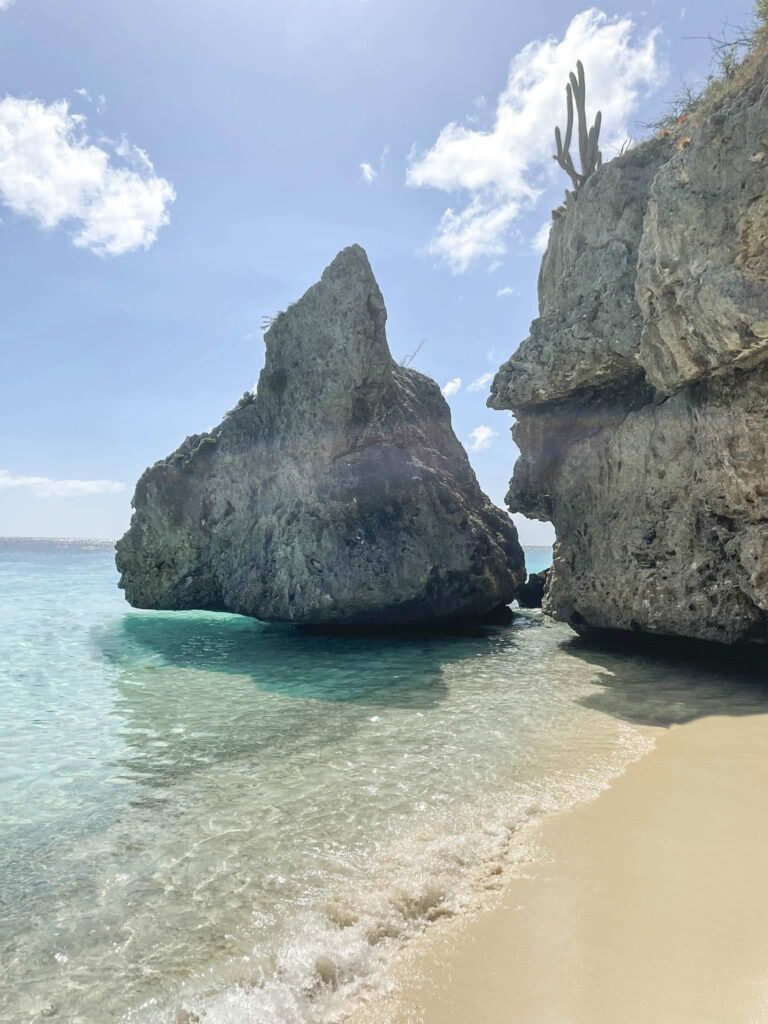
Playa Lagun
Beautiful Playa Lagun is not only a great place for snorkelers but also a beautiful little oasis far away from the big crowds. It is usually very quiet on this beach, so you can take a quiet nap on the beach, swim with turtles, and have an ice-cold cocktail at the sweet little beach restaurant.
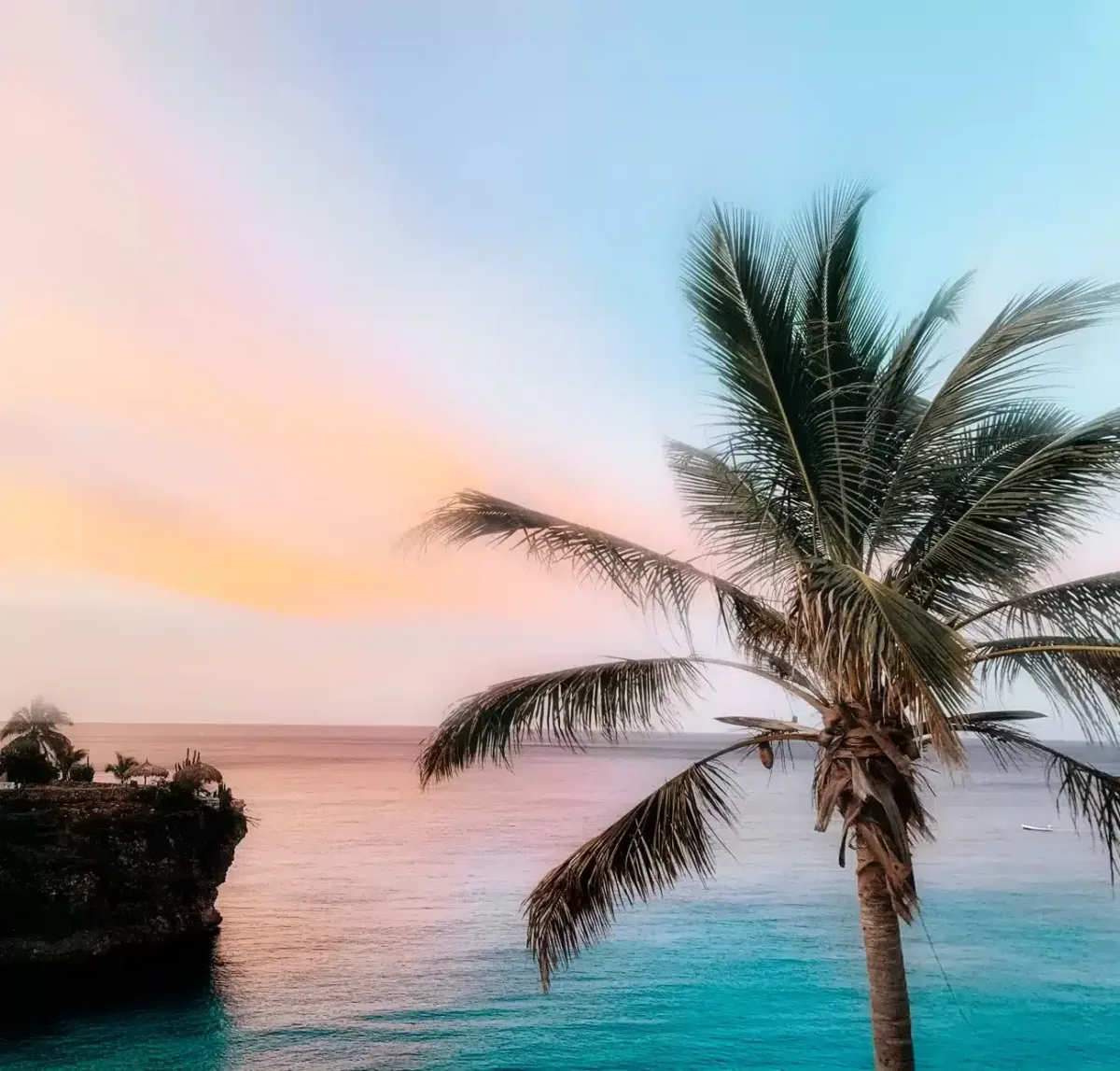
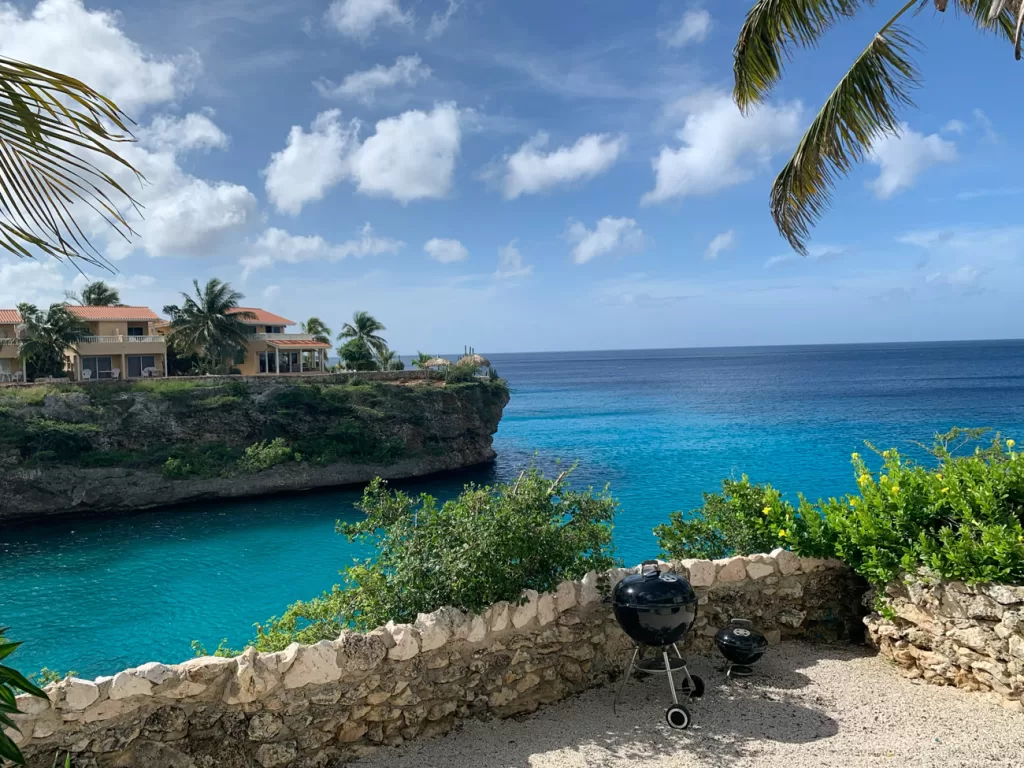
Mambo Beach
This is the most lively beach apart from the very touristy Jan Thiel Beach. The funky is home to many beach clubs that serve you all kinds of food and drinks directly to your beach chair.
There is also a small mall attached to the beach, where you can buy beautiful swimwear, handmade jewelry, and much more. In the mall, you will also be able to find a great selection of restaurants.
Mambo Beach is a great spot for some fun times! Most beach clubs play some nice ambient music that gives amazing holiday vibes. The water is super clean and because of the protective stones a bit further out, it is also super safe to swim there.
Our favorite beach club at Mambo Beach is Cabana Beach.
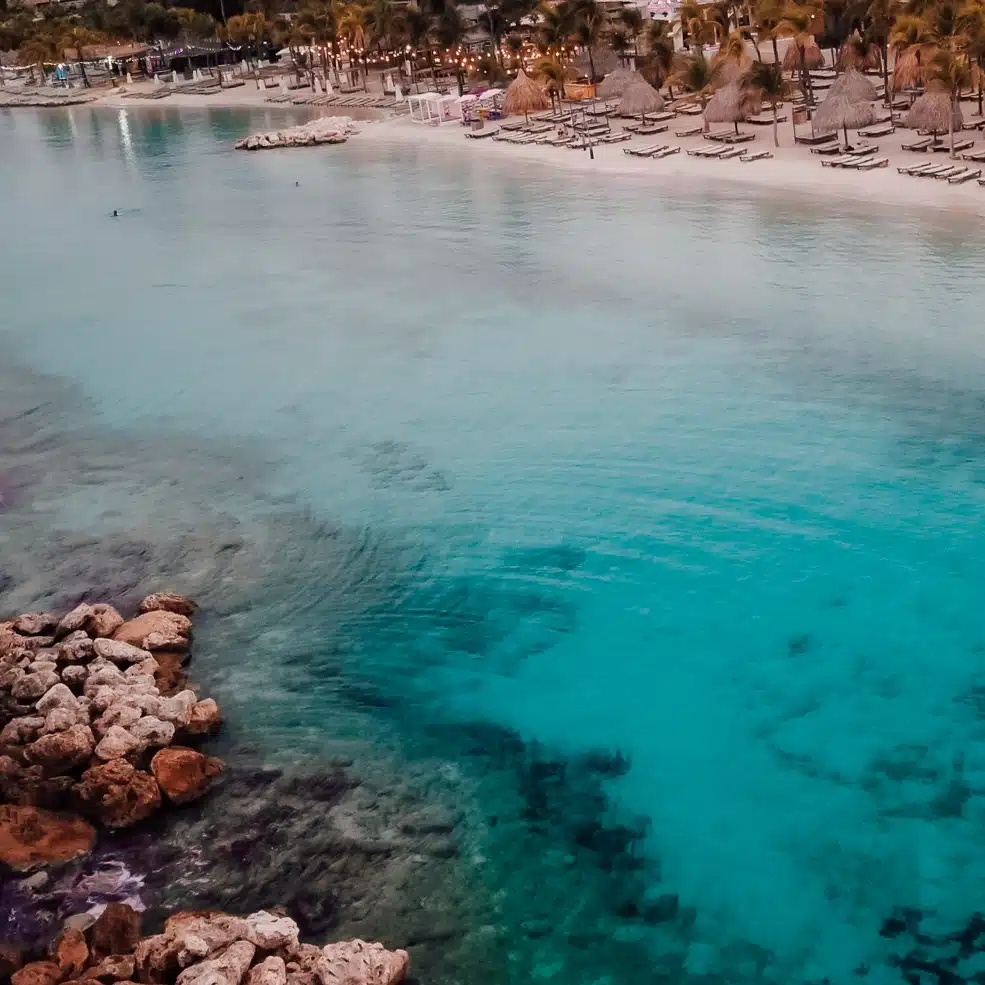
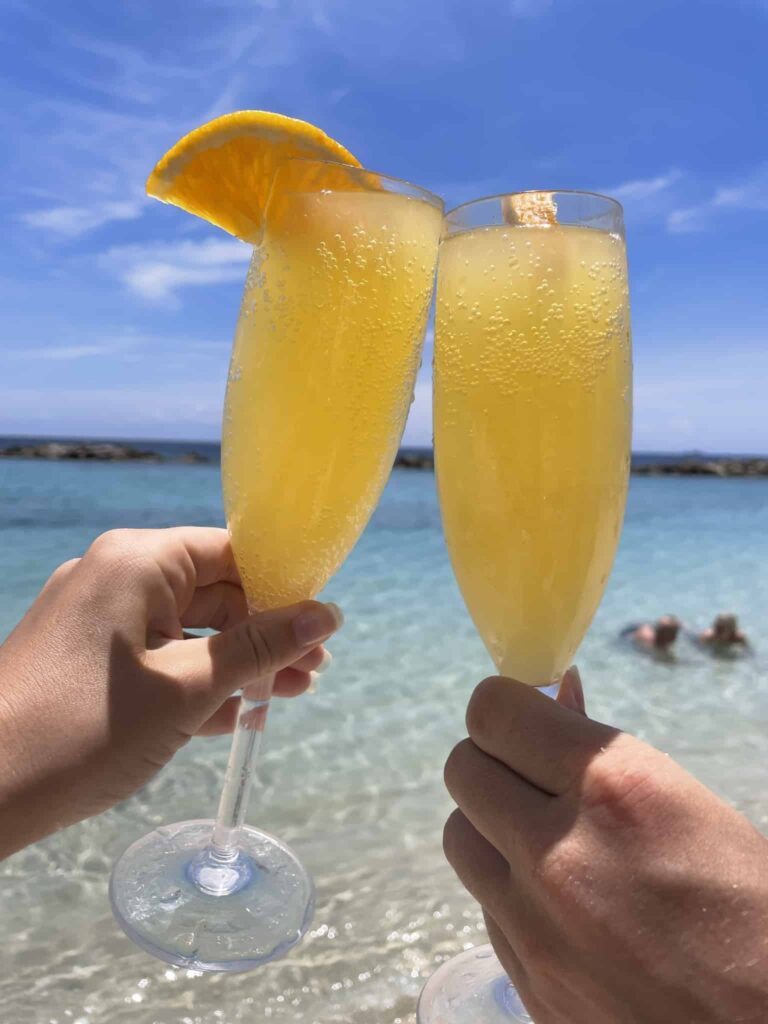
Playa Gipy – Curacao Travel Guide Hidden Gem!
My last but not least favorite beach is Playa Gipy! This small paradise can be found all the way in the western part of the island, close by the Watamula Hole.
It is by no means easy to reach, since it requires off-road driving, walking on the cliff, and climbing down some rocks.
But in any case, it is 100 % worth the visit. Playa Gipy is a small, secluded bay that is usually not on the tourist’s radar. With any luck, you will have the entire bay for yourself, just like we did.
This is surely the most romantic spot on the island and this Curacao Travel Guide is one of the only places where you can find directions to this spot. For directions and more info head over to my Playa Gipy Guide.
If you only refer to one of my Curacao travel tips – then it should be this one!
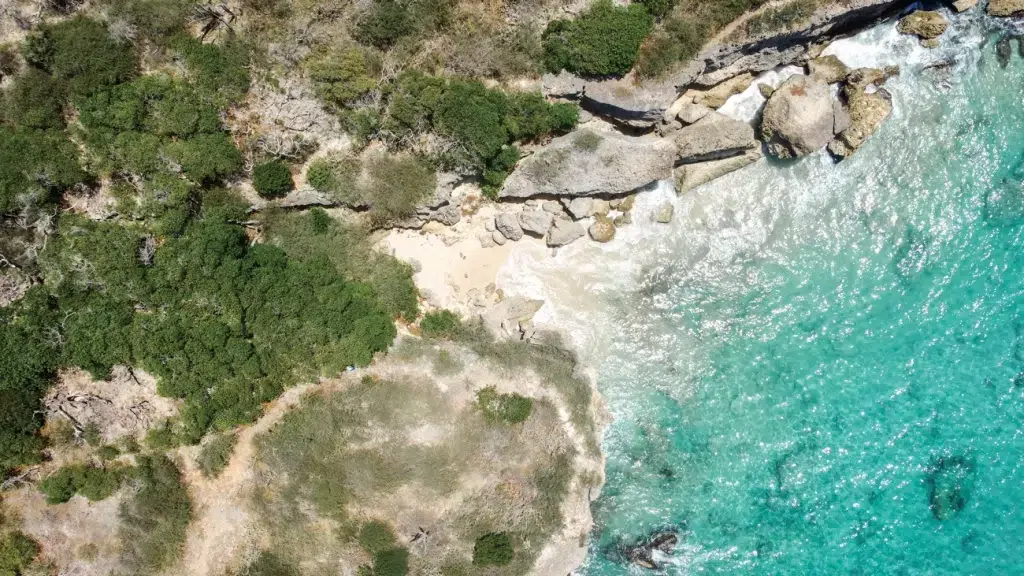
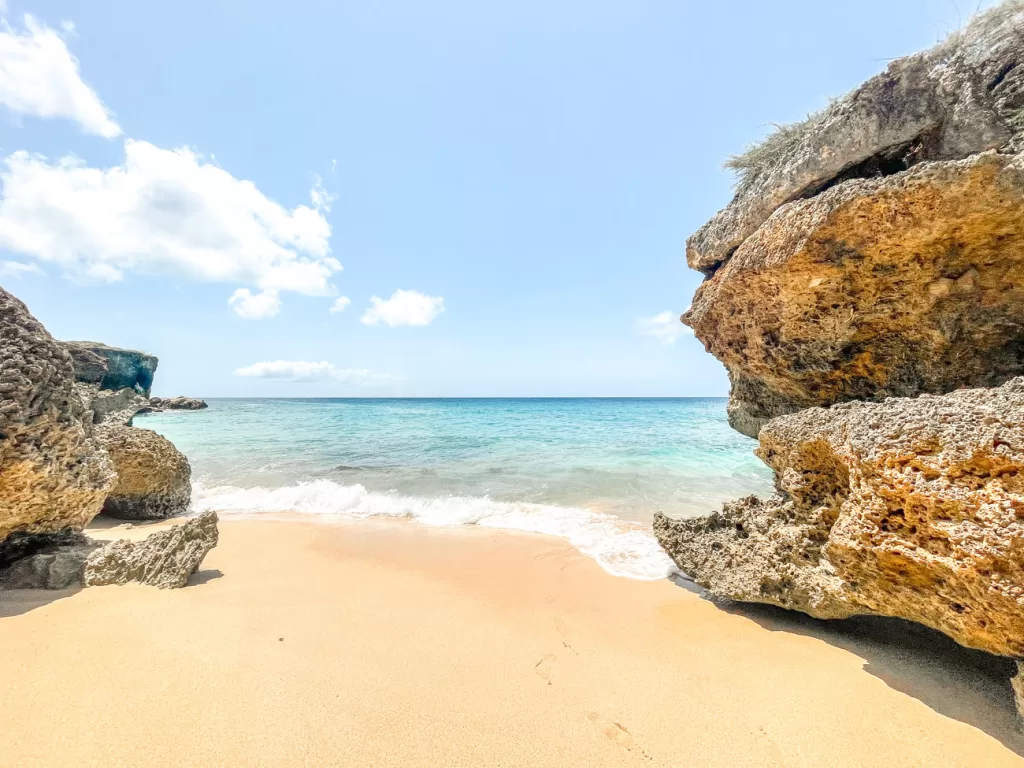
Best Beaches for Snorkeling (Map)
Snorkeling in Curacao is amazing.
If you’re planning to snorkel in Curaçao, the best time to go is between May and November when the water is clearer and the wind is calmer.
Some of the top spots to check out include Tugboat Wreck, where you can explore a sunken tugboat, Playa Lagun for turtle spotting, and Porto Mari for its beautiful coral and fish.
There are so many different snorkeling beaches in Curacao, it can be hard to keep track. Some of them can only be reached with a snorkel boat trip.
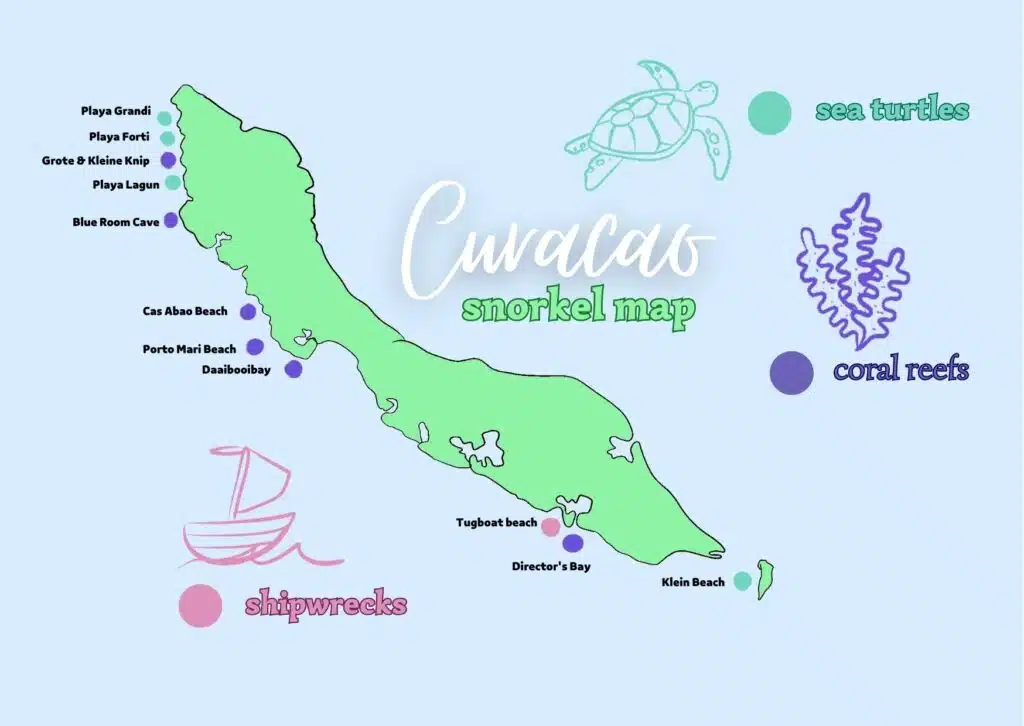
Diving in Curacao
Diving in Curaçao is a dream year-round, but the sweet spot is also between May and November for calmer conditions. Refer to my ultimate Curacao Scuba Diving Guide for more info.
Top diving spots include Mushroom Forest, known for its unique coral formations, and Watamula, where you’ll get a taste of strong currents and diverse marine life.
The Superior Producer, a sunken cargo ship, is a must-visit for wreck diving fans.
When it comes to lodging, Scuba Lodge is a diver’s haven, offering on-site dive shops. Another option is the Sunscape Resort, which caters to both divers and non-divers.
While diving, you’ll be swimming alongside amazing creatures like nurse sharks, moray eels, and even the occasional dolphin if you’re lucky.
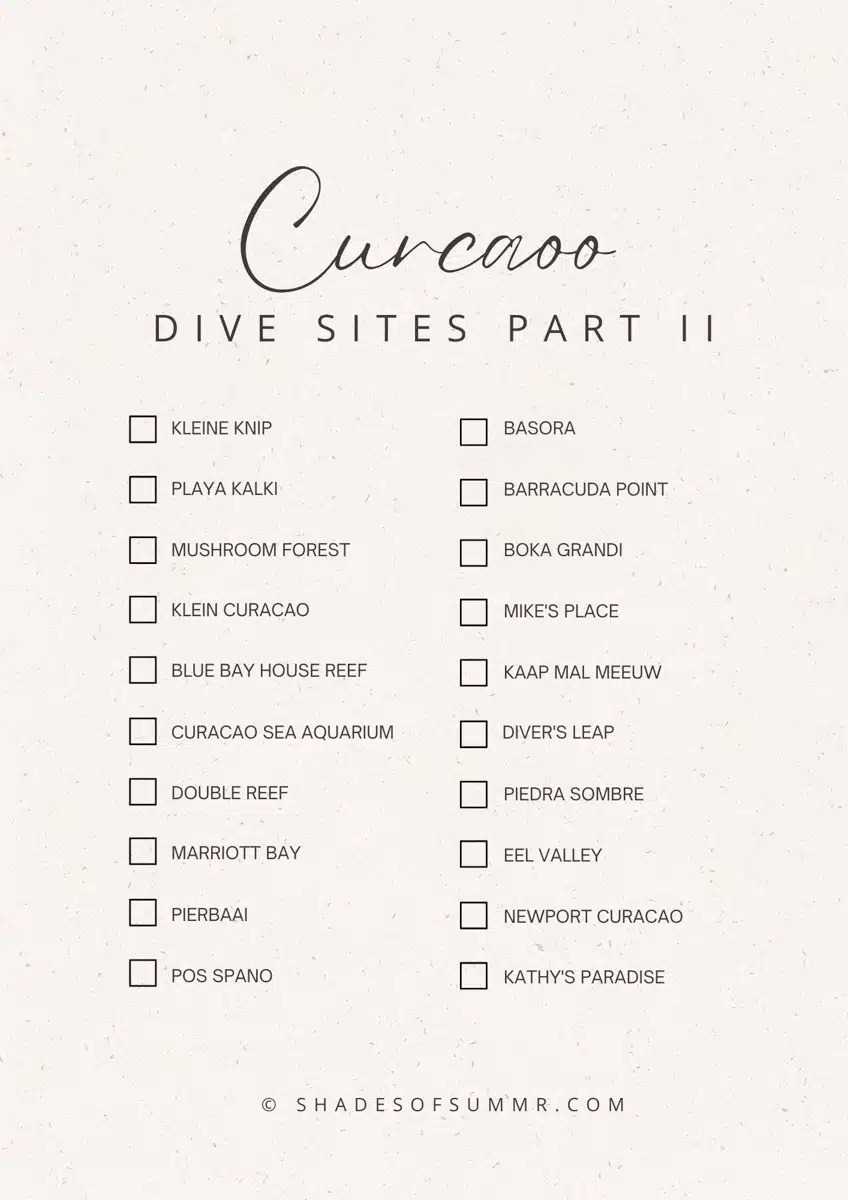
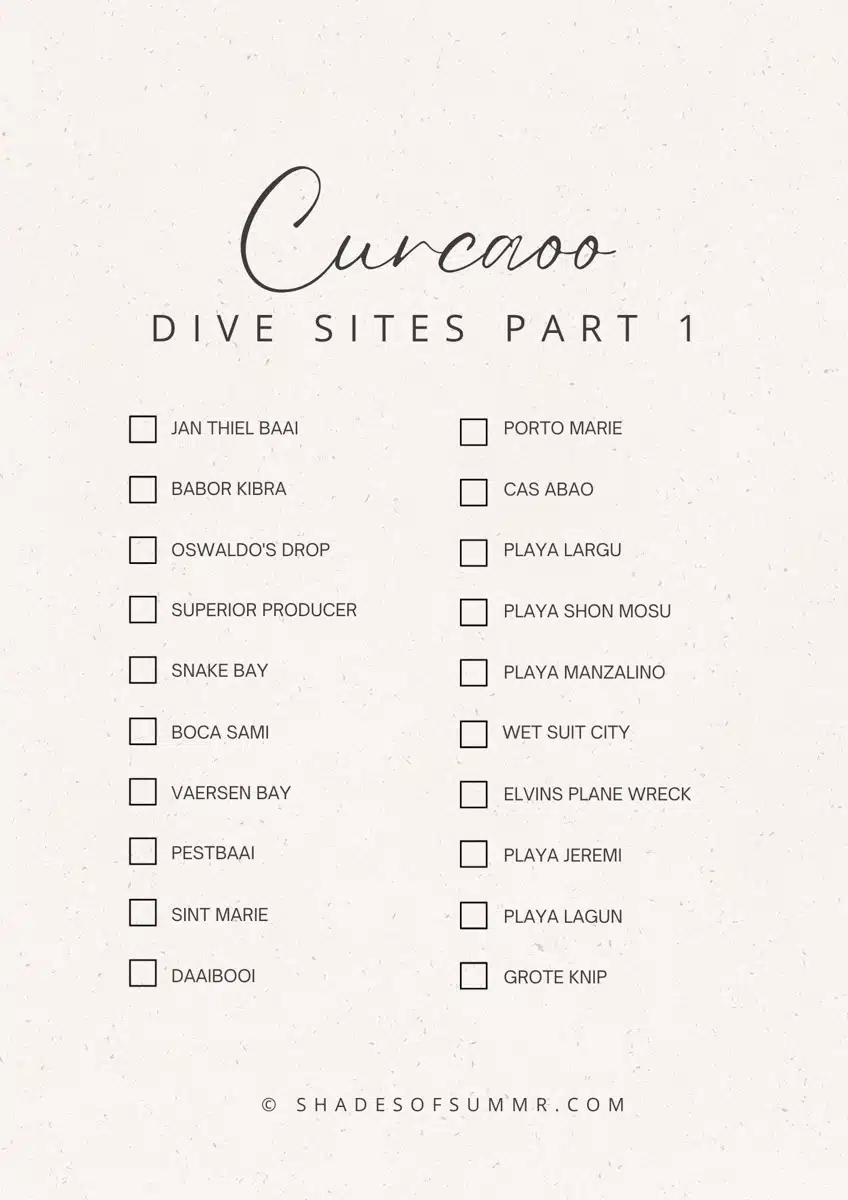
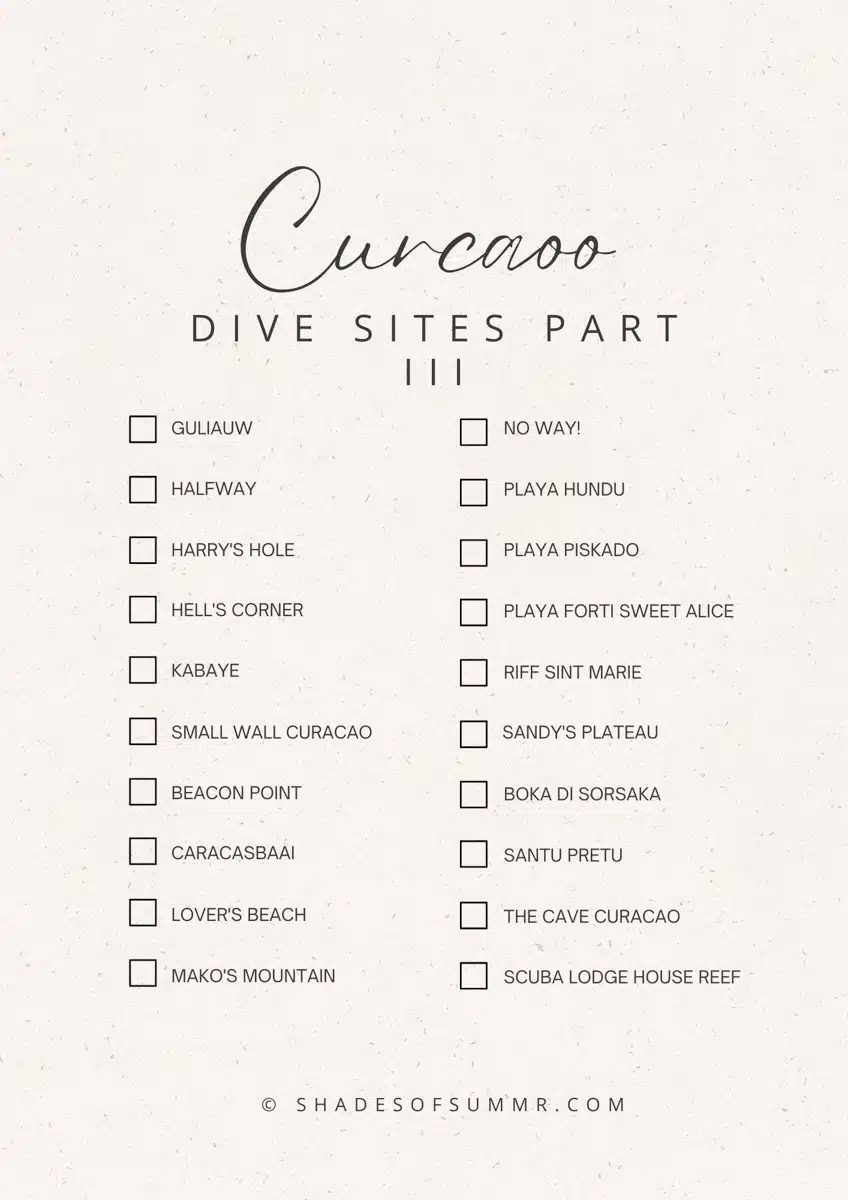
Best Things To Do in Curacao
There are so many different day trips to choose from when you go to Curacao, that it can be hard to find the perfect one.
I have compiled a list of the most romantic and fun things to do in Curacao for this Curacao travel guide, so you don’t have to try all of them!
1. A Day Trip to Klein Curacao
Klein Curacao is a small, uninhabited island off the coast of Curacao. You can reach it with a travel time of roughly one hour. The small island offers some of the most amazing white sandy beaches in the Caribbean.
Because the island is uninhabited, the beauty of its nature is still (mostly) untouched. Klein Curacao makes for an unforgettable trip, especially for snorkelers. We had the luck to see sea turtles on both of our trips to the island.
There are many different providers offering day trips to Klein Curacao. We opted for both times we visited for Miss Ann Boat trips. The provider picks you up in the Santa Barbara Resort with a fancy yacht and transports you to Klein Curacao.
On the island, they have a small hut there that offers shelter from the sun. There are tanning beds for everyone and complimentary breakfast and lunch are served there as well. They offer snorkeling gear and fabulous massages.
Most of the other providers do not have an infrastructure on the island, therefore you have to take meals and spend time on the vessel instead of the island itself.
Make sure to visit the abandoned lighthouse on Klein Curacao. It does not only make for an amazing photo spot but is also of historical importance.
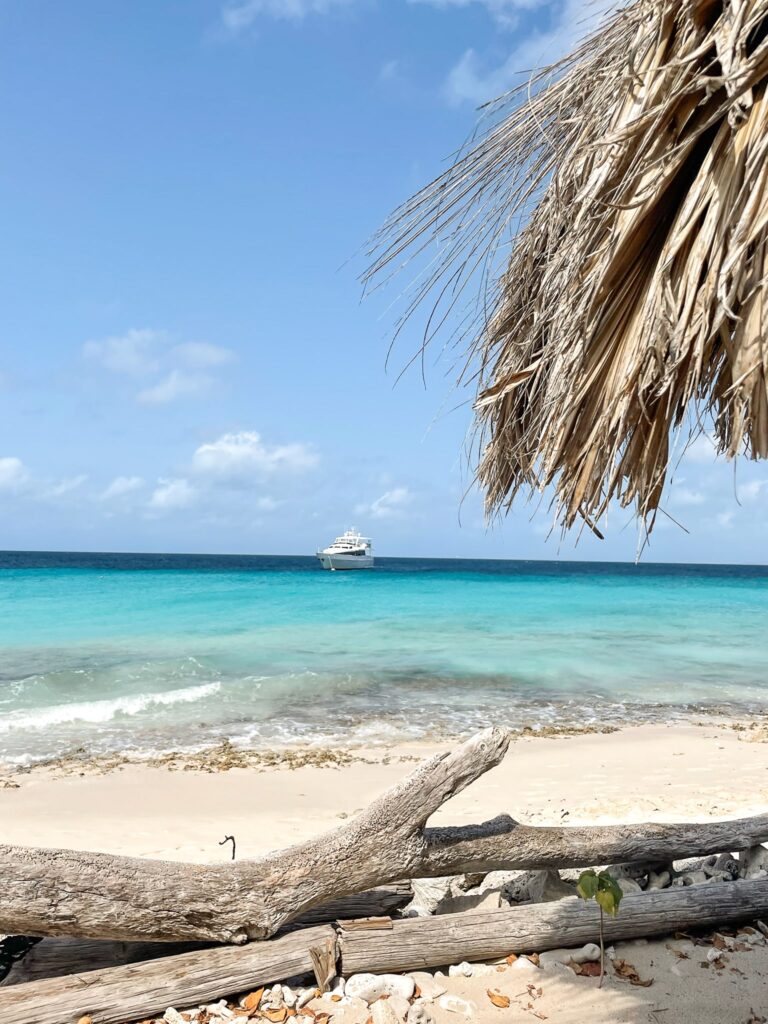
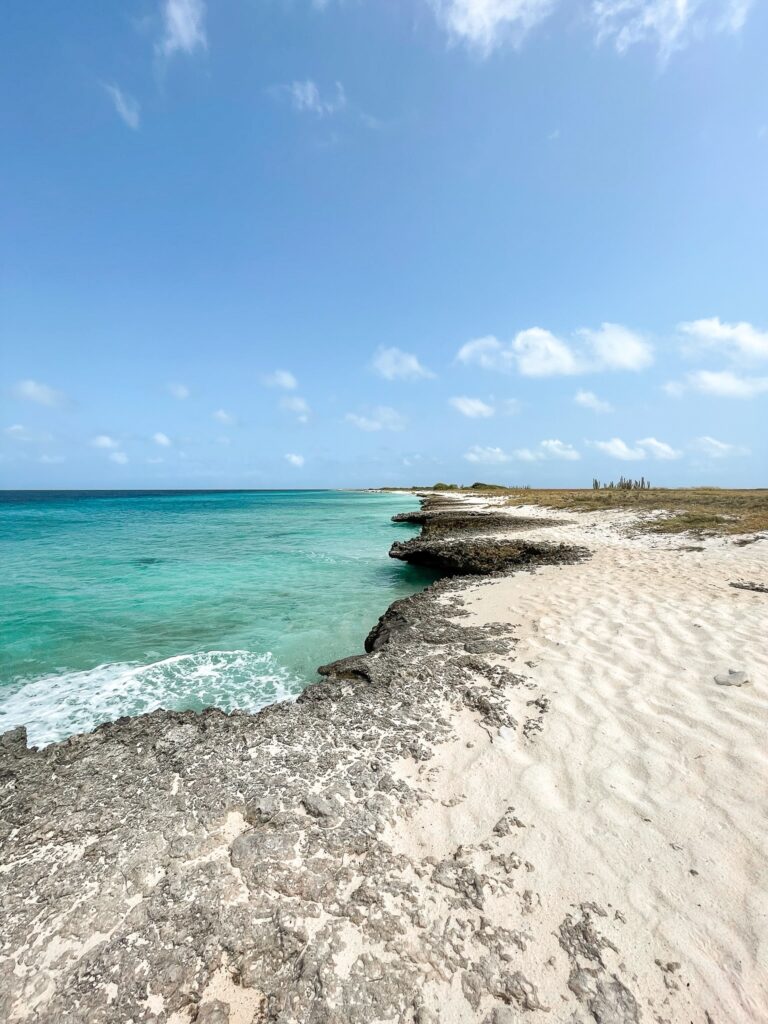
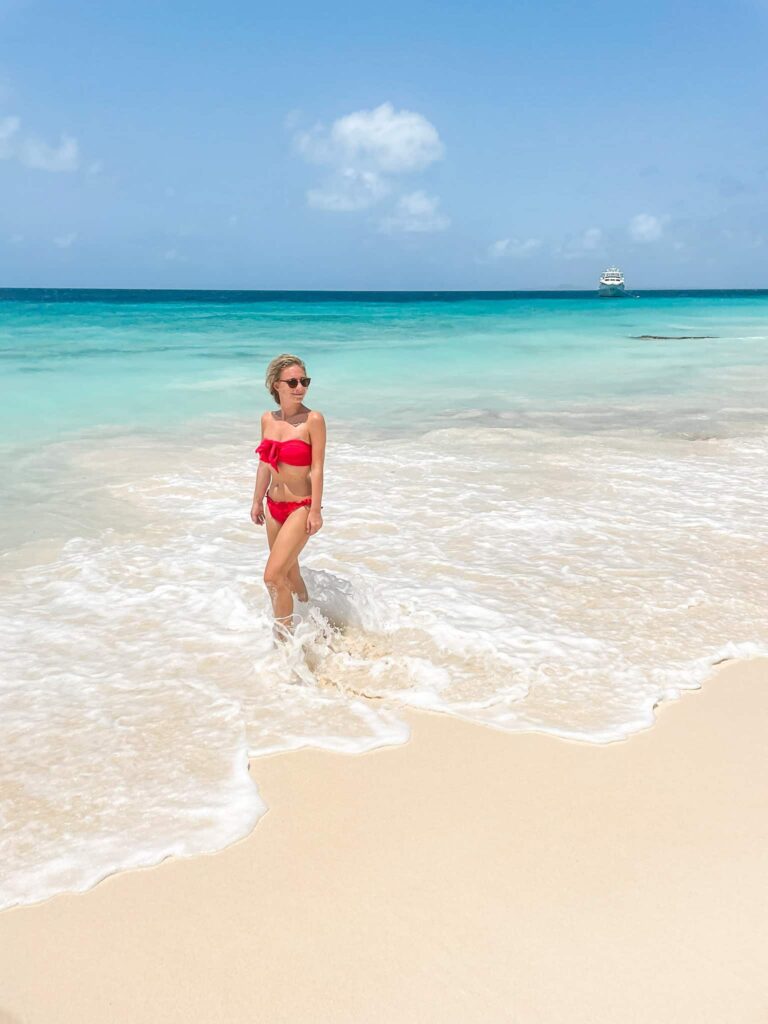
2. Landhuis Chobolobo
The Landhuis Chobolobo is a 19th-century mansion close to Willemstad. Not only is it a great historical building to visit, but it is also the production place of the famous Blue Curacao liquor.
The company offers tours around the production with a small tasting and a free cocktail in a cocktail bar in the garden. You can also participate in a cocktail workshop and buy their products for a reduced price.
The tour guides are super friendly and quite knowledgeable. We thought it was a very fascinating tour and we loved the colorful decor of the mansion. Landhuis Chobolobo is definitely one of the must-see things on the island of Curacao.
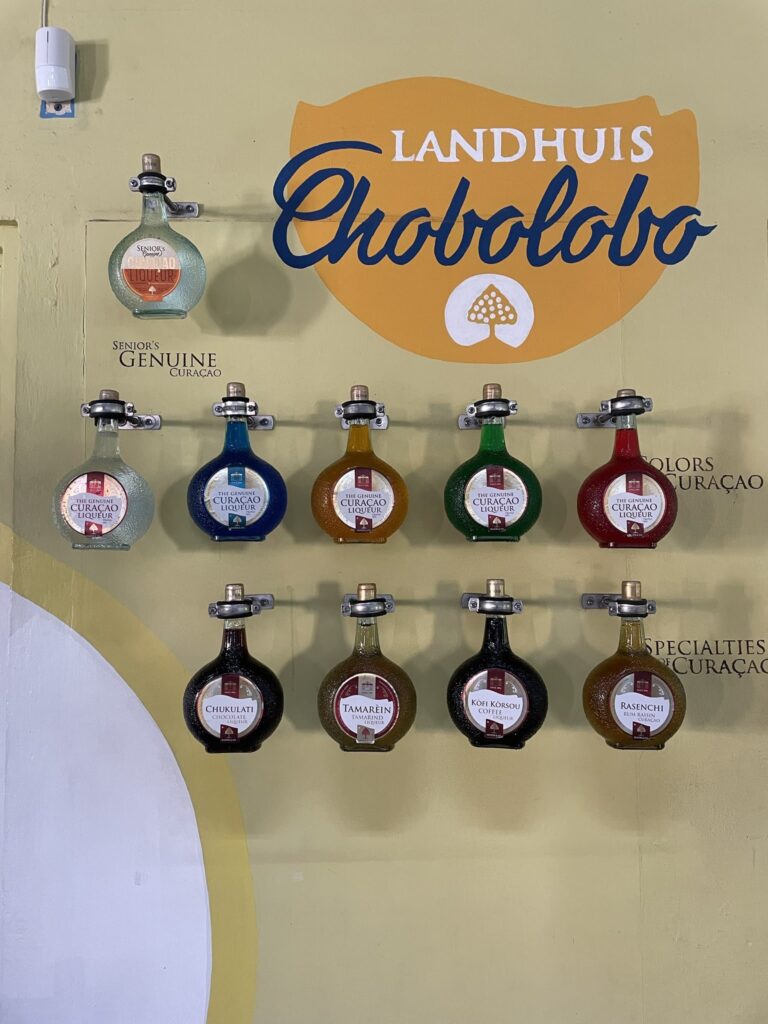
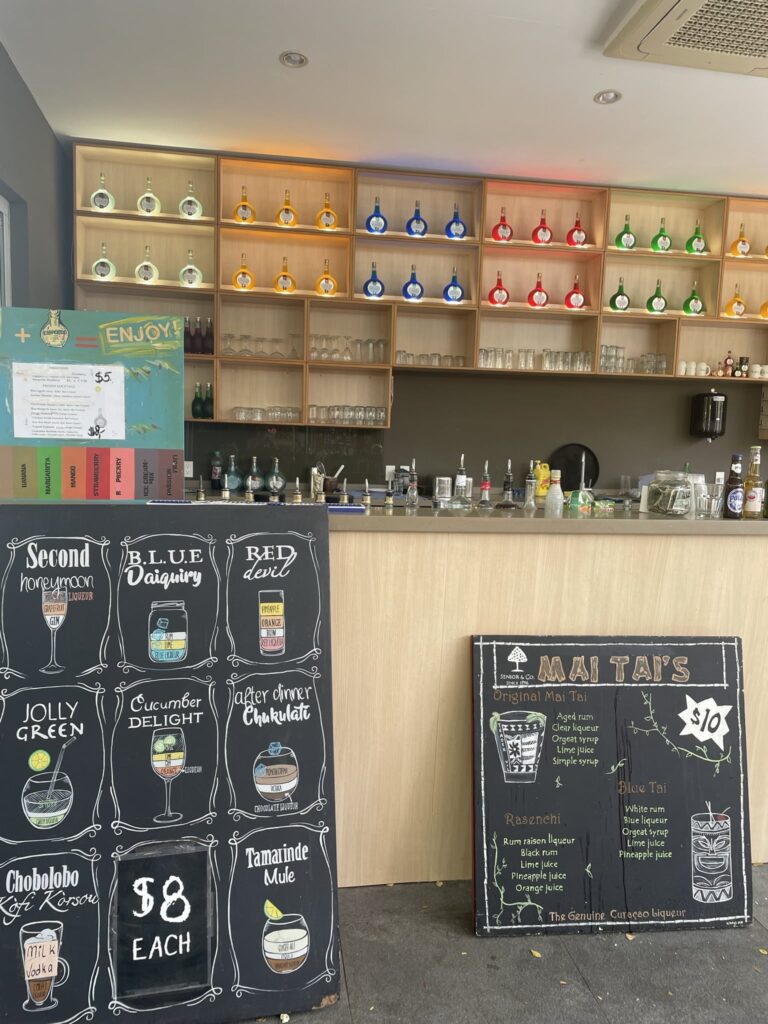
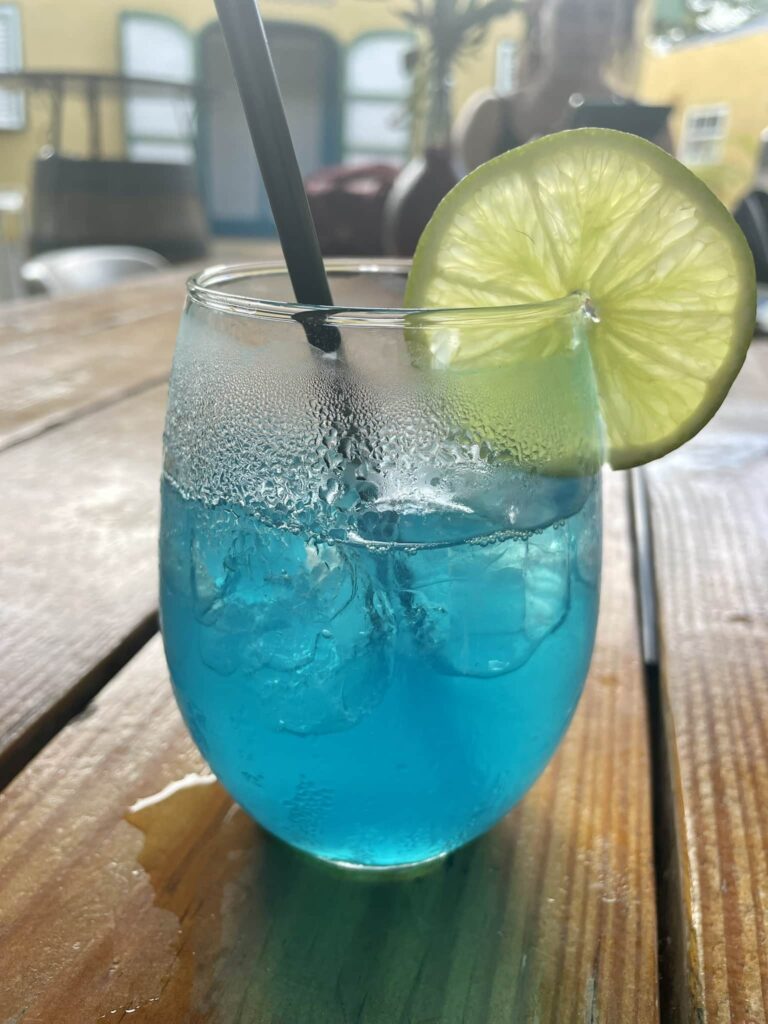
3. Watamula Hole
The Watamula Hole offers some great contrast to the white sandy beaches and calm waters on the other side of the island. It is located in Sabana Westpunt, which is the northernmost tip of the island.
You can easily reach the Watamula Hole via a dirt road. Make sure to bring some good shoes and a bottle of water. The sun can get pretty strong on this exposed path during the daytime.
The hole itself is pretty impressive. You can look down on the crashing waves and get mesmerized by the turquoise waters underneath. Sometimes the waters splash up high enough to make spectators a bit wet – and provide a great photo opportunity.
A couple of steps away from the hole is a huge rock painted with a Curacao flag. This spot is another great instagrammable photo spot in Curacao.
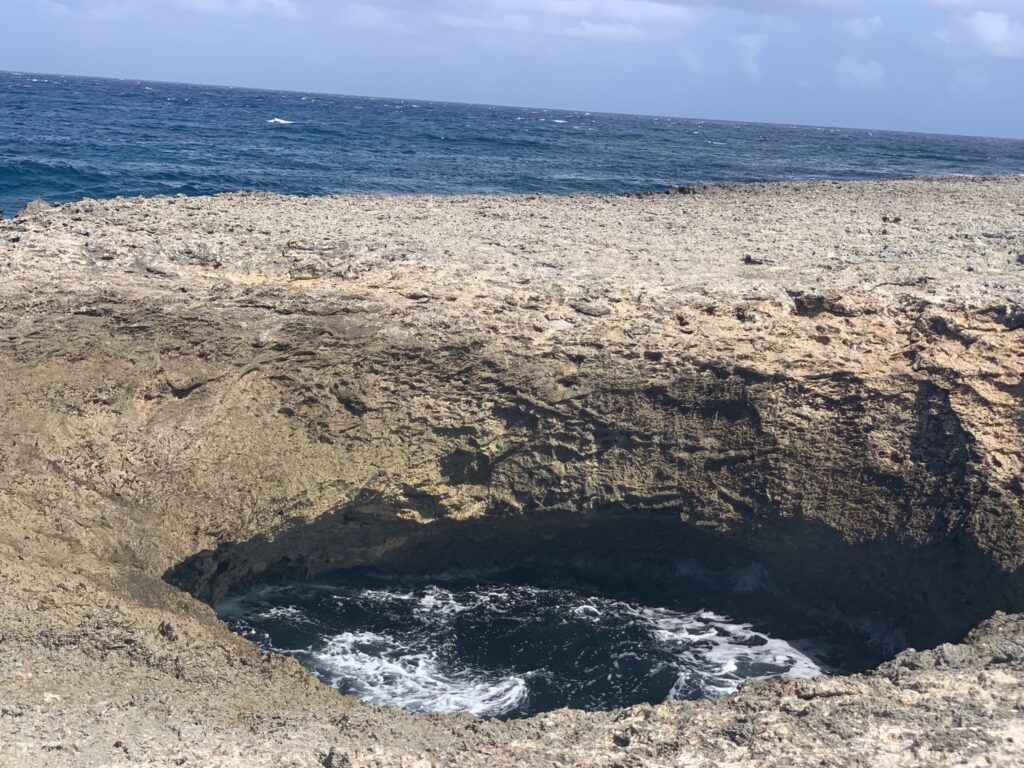
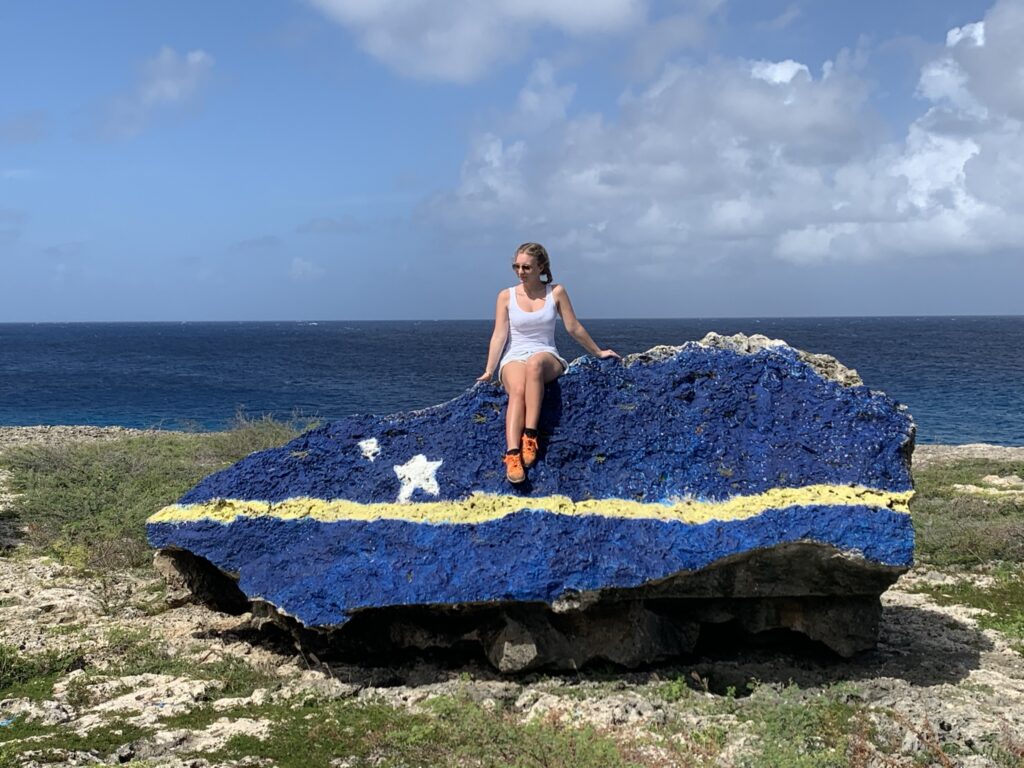
4. Shete Boka National Park
Shete Boka is a big national park that covers almost 10 kilometers worth of cliffs on the north coast of the island. The park has 10 pocket bays from where you can watch stunning waves crashing into the coastline.
The trail leads you to stunning underwater caves (Boka Tabla) as well as a natural bridge (Boka Wandomi) and many more amazing viewpoints.
Make sure to bring good shoes, since you will be walking quite a lot. This was definitely one of the experiences I can recommend the most in this Curacao Travel guide!

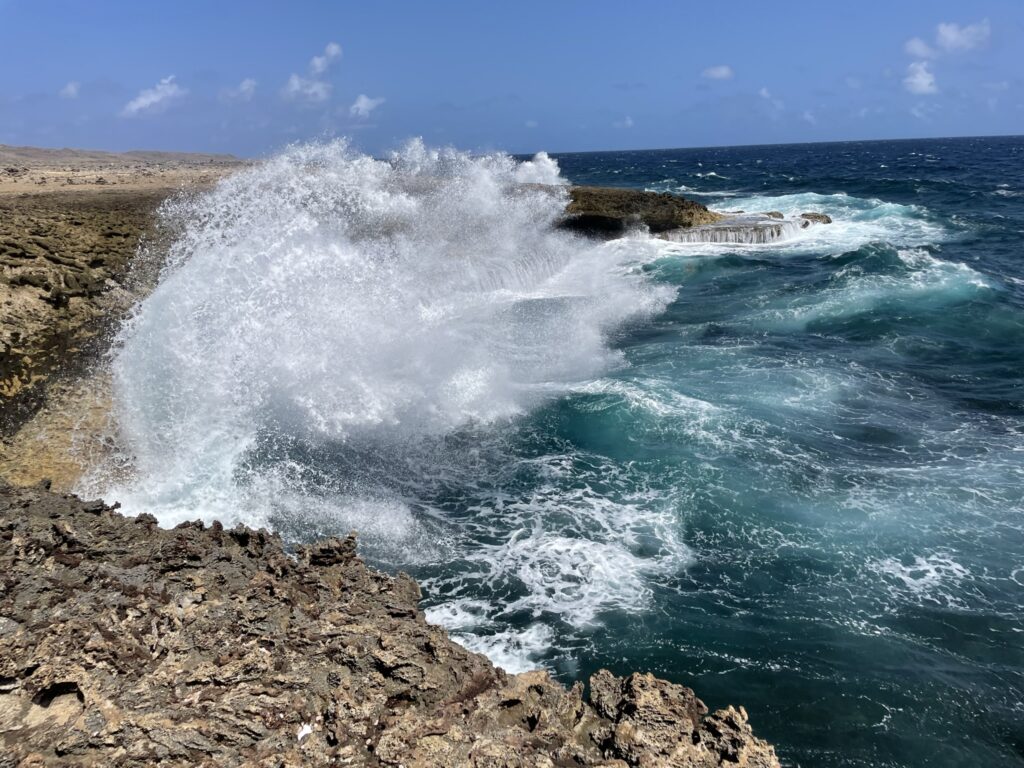
5. Hiking the Christoffel Berg
The Christoffel Berg is with a height of 372 meters (1,220 ft) the highest point in Curacao and lies in the middle of a preserved wildlife area. You can explore the many trails in the wildlife park by car or foot.
If you want to climb the mountain all the way to the top (for experienced hikers only) I suggest getting there as early as possible in the day, since it can get quite hot in the afternoon.
The park opens at 06:00 in the morning, which is when we started our hike. It takes about two hours to reach the top, but it is very much worth it.
If you are more in a climbing mood, you will also enjoy climbing the Tafelberg (Table Mountain). It is located in Santa Barbara and there are marked loops for hikers and climbers.
The Curacao Rif Mangrove Park is an urban nature retreat closer to downtown, with modern boardwalks and bridges through the protective Mangrove forests. This is more suitable for people not willing to climb.
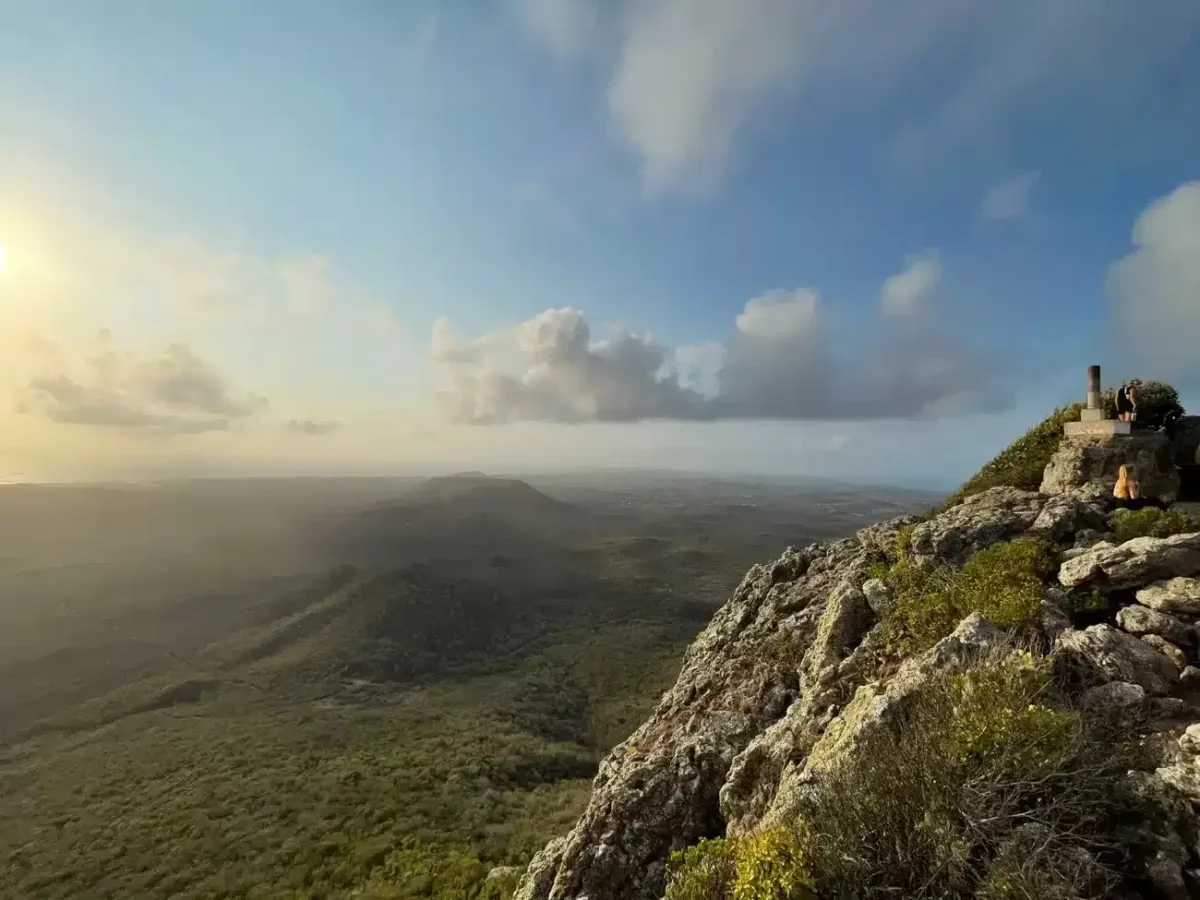
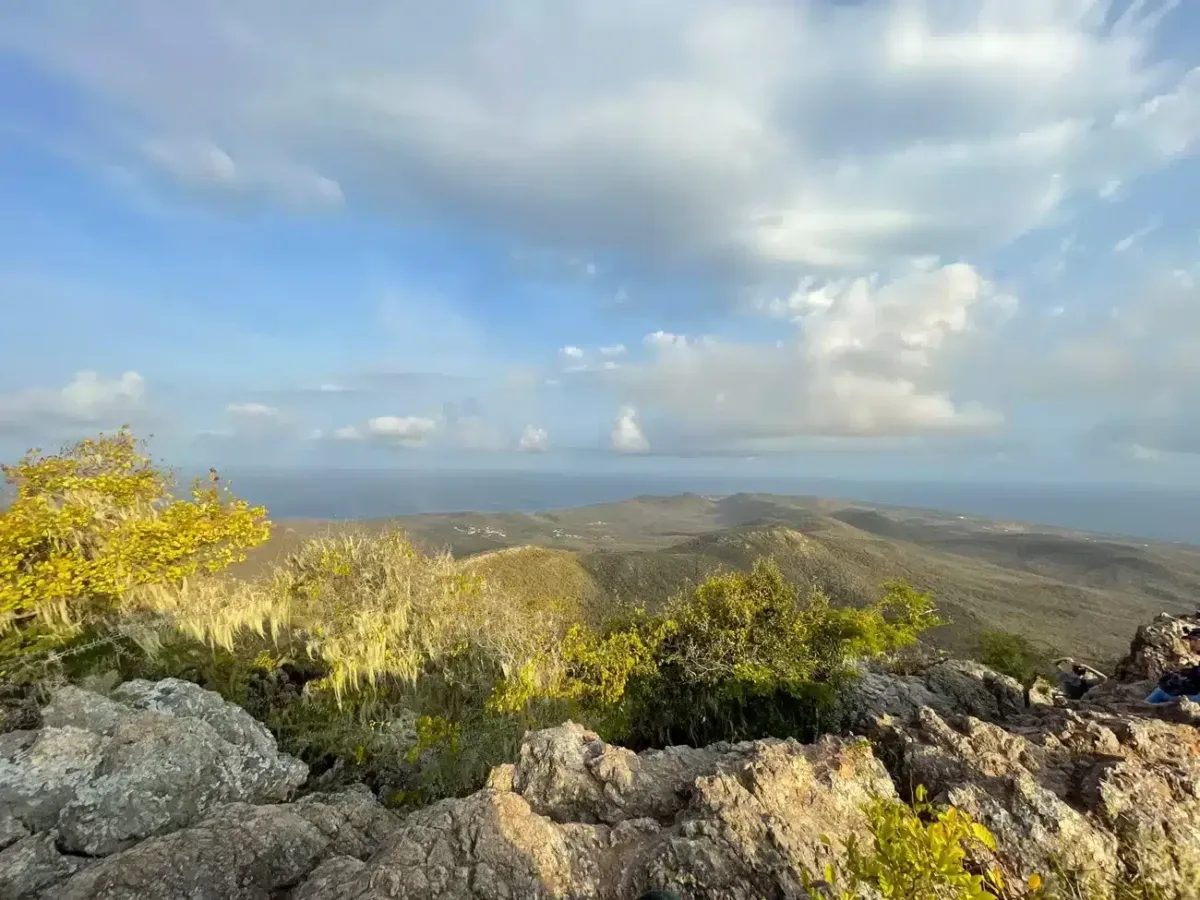
6. Sunset Cruise
One of our favorite experiences in Curacao was the Sunset Catamaran Cruise. We booked our cruise via Viator with Irie Tours. There are also many amazing and romantic Private Tours out there.
Immediately, we could lie or sit down anywhere on the Catamaran. During the two-hour trip, we drank complimentary cocktails, soft drinks and snacks. We saw a beautiful sunset and had so much fun sailing through the wavy waters.
Our tour took us through the Spanish waters and later out on the open sea. We had a stunning view of the island. Afterward, a bus brought us safely back home to our hotel.
If you prefer going during the day, why not book a Snorkel Boat Tour?
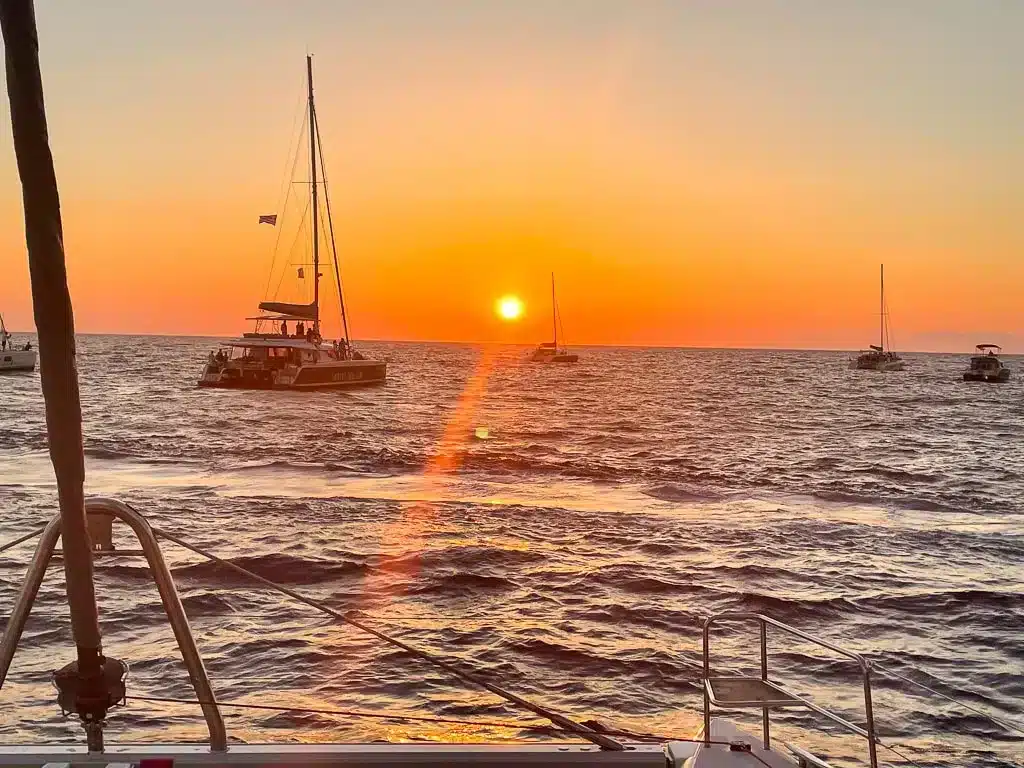
7. Willemstad
Visiting Willemstad is a must for anyone vacationing in Curacao. There are many great restaurants, beautiful colorful alleys, stunning street art, and many great shops. A bit further up in this Curacao Travel Guide you can find my recommendations for great hotels in the Willemstad area.
Both sides of Willemstad; Punda and Otrobanda, are worth the visit. The Sint Anna Bay is separating the districts from each other. You can walk across the Queen Emma Bridge, which is a floating pontoon bridge, and marvel at the pastel-colored houses of the Handelskade.
Make sure to visit the 19th-century castle Rif Fort (now a shopping center) as well as the famous Pietermaai district for some great pictures.
I recommend visiting Willemstad in the morning or the evening since it can get very hot and busy during the day. For evening visits, I highly recommend you to have dinner and drinks in the Pietermaai district (the So-Ho of Willemstad)
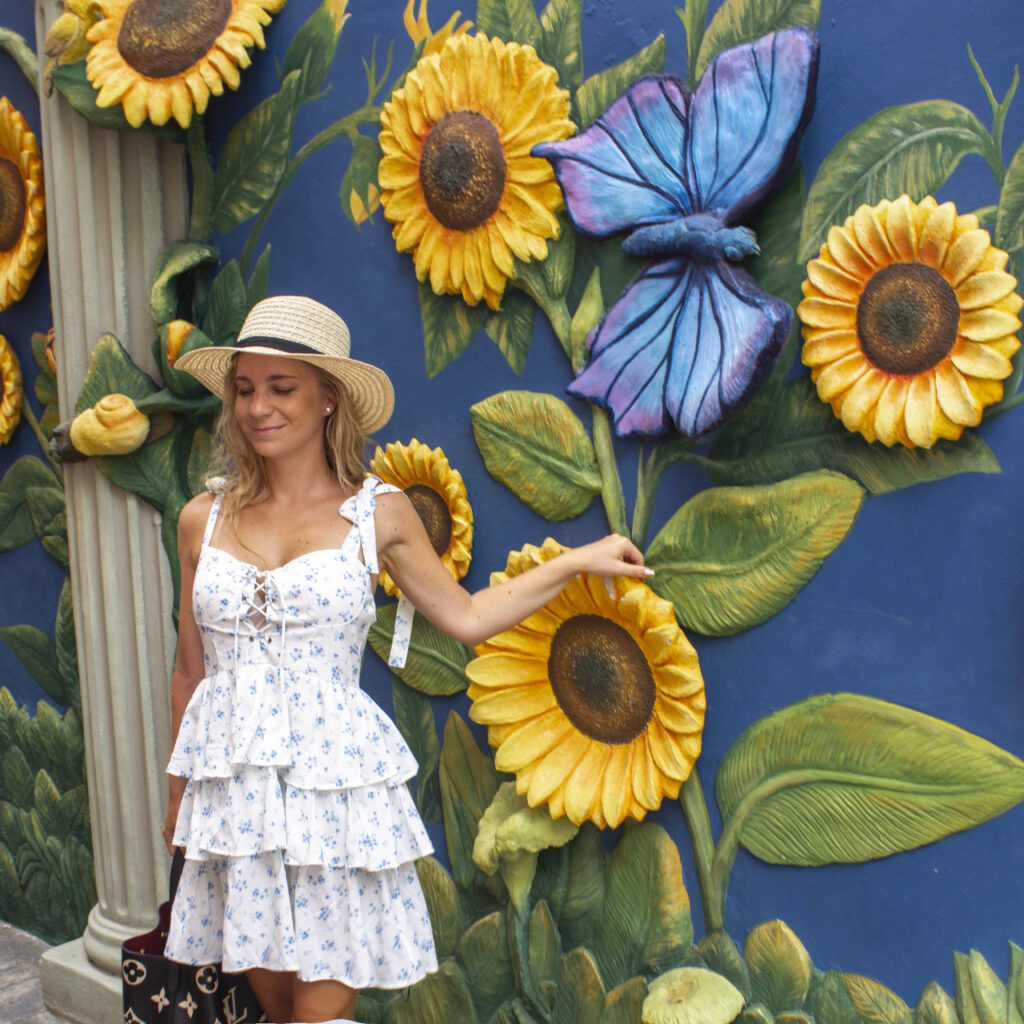
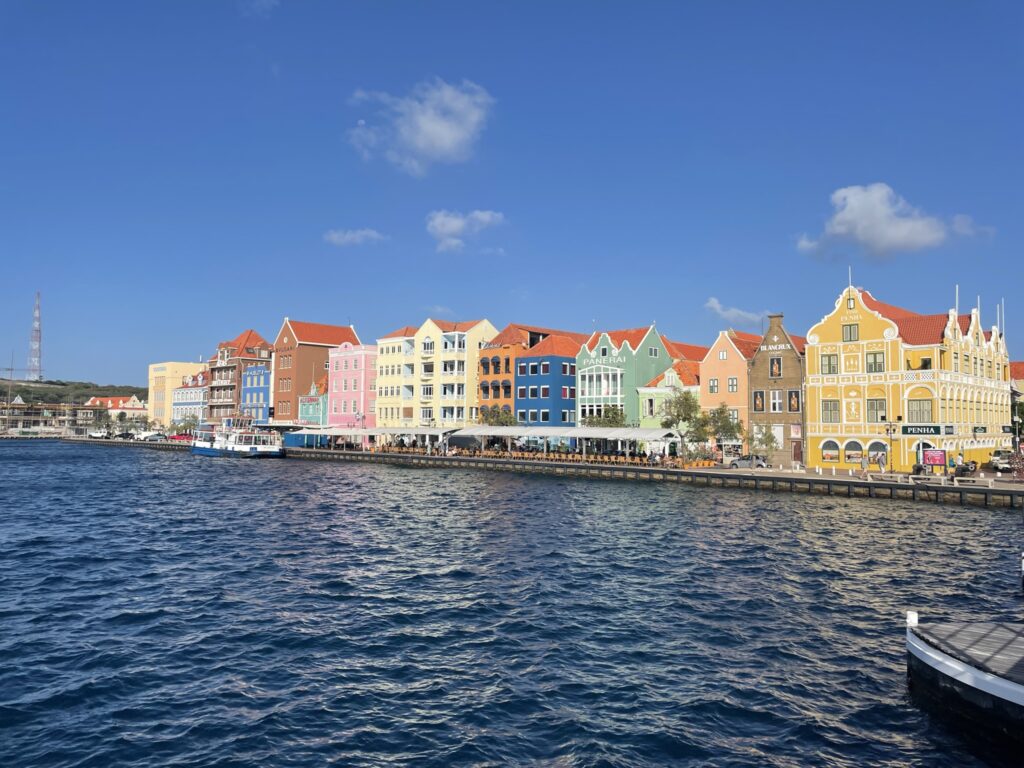
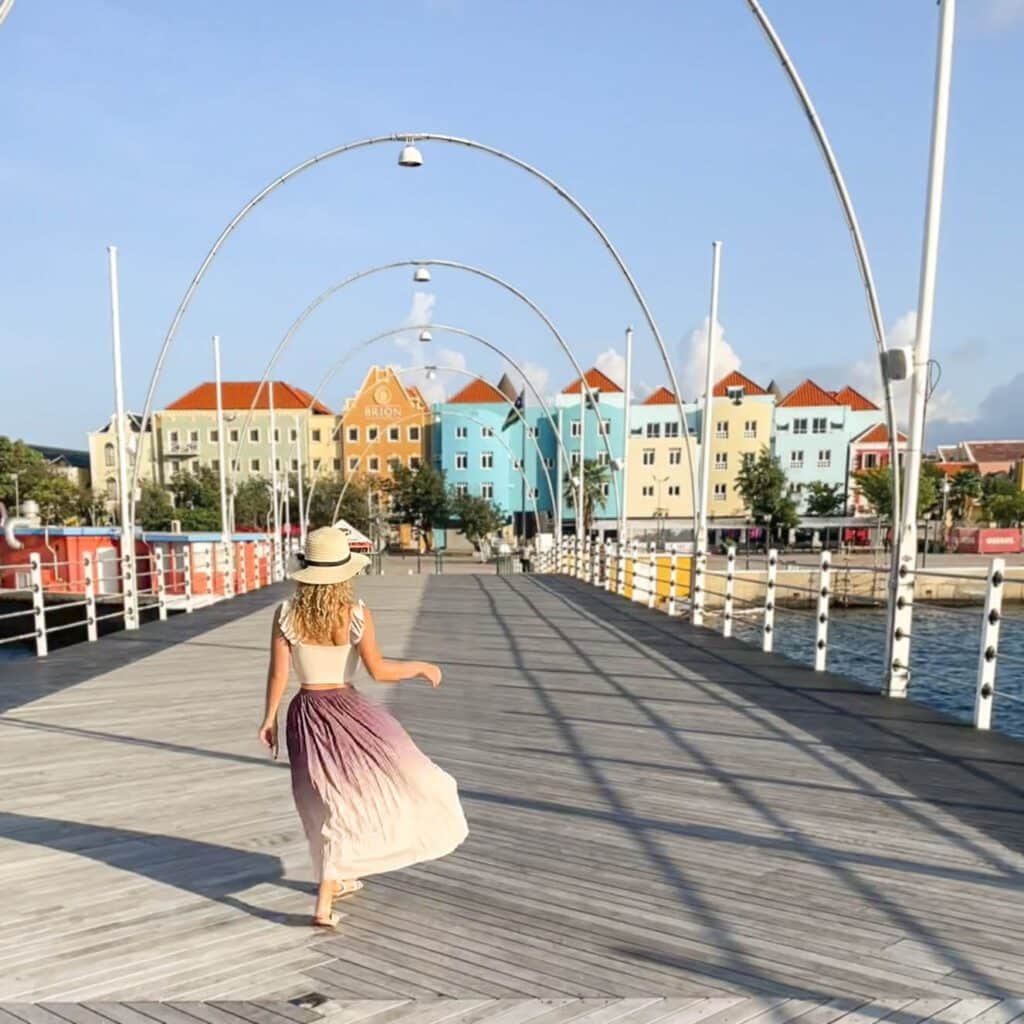
8. Dolphin Academy
Visiting the Dolphin Academy in Curacao has been one of the most touching experiences of our trip. The Dolphin Academy is located near Mambo Beach and offers a great deal of different educational experiences with the dolphins.
Firstly, we do not condone the cruel way dolphins have to live in some sea aquariums around the world. So we do want to emphasize that the Curacao Dolphin Academy is one of the only aquariums in the world that provides nature-friendly care to its animals.
The dolphins reside in lagoons and are so in direct connection with the open ocean. Therefore, the dolphins have a permanent connection to the marine life outside the enclosure. The interaction with the trainers is very lovely to watch since you can see a genuine bond between the animal and the trainer.
We booked an educational Dolphin Encounter, where you get to meet a Dolphin with an instructor who tells you everything you need to know about the species. As a bonus, you get a kiss on the cheek by the Dolphin.

9. Driftwood Painting Workshop
A great bonding experience and something that we HAD to include in our Curacao Travel Guide is the driftwood painting workshop. You get to decorate your own piece of driftwood so you can bring it home as a gift or souvenir.
We did the workshop with a nice local called Gilmar at Playa Porto Mari. We had so much fun painting next to the ocean and we loved the door signs we created.
During painting, we got to talk with the instructor about the history of the island and some current issues the country is facing, which was a great learning experience for us.

10. Private Boat Tour Through the Spanish Waters
For a special occasion, we decided to treat ourselves to something extraordinary.
We booked a 3-hour private boat tour through the Spanish water just for the two of us. We tried some water sports and toured around the island getting some background info from our lovely crew.
Many of the tips we included in this Curacao Travel Guide we have heard from the local guides on tours like this one.
11. Santa Martha Sunset Lookout Point
Overlooking Santa Martha Bay we found an amazing little spot that offers a stunning view of the bay during sunset.
Make sure to get there early for a nice spot to watch the stunning spectacle.
This is definitely one of the nicest spots that I featured in this Curacao Travel Guide.
The Santa Maria Bay View Lookout Point is the best spot to watch the sunset in Curacao. For directions head over here.
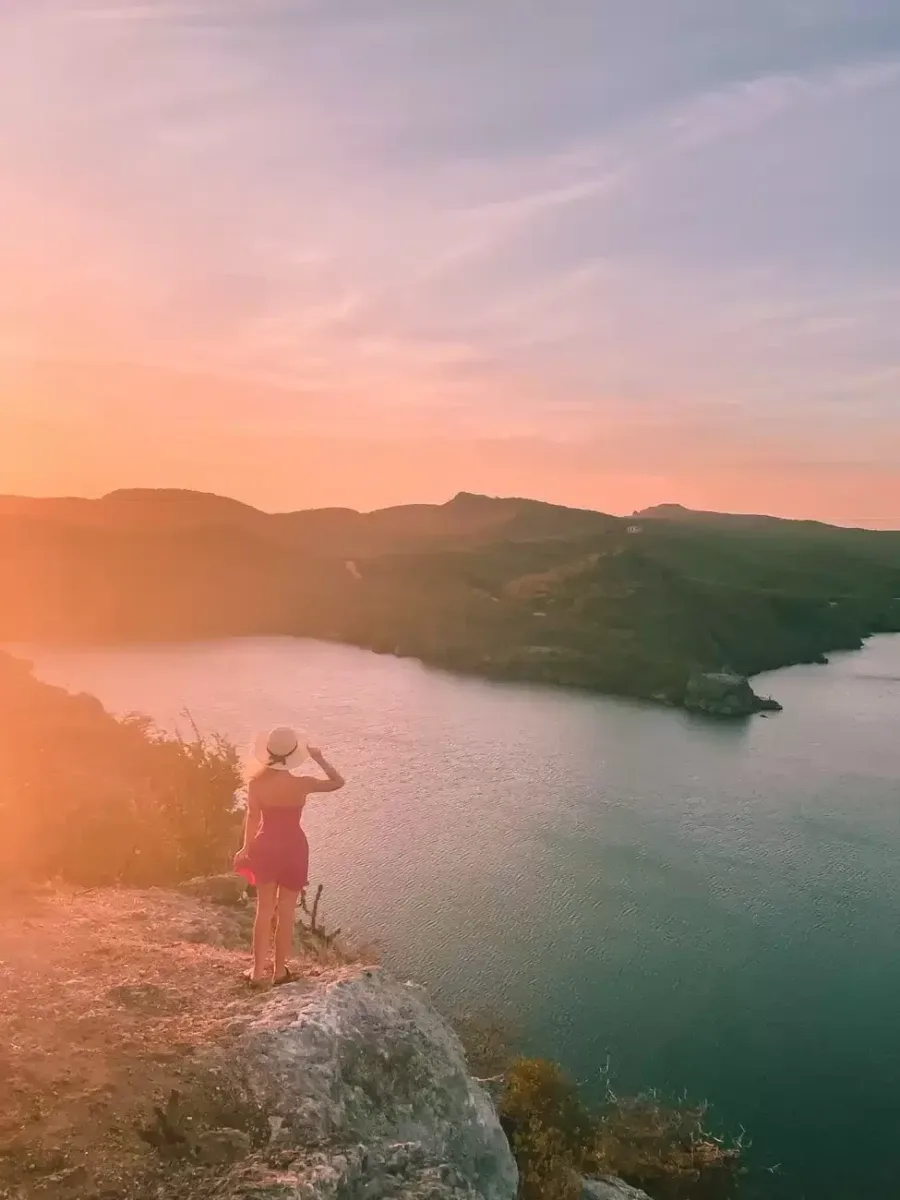
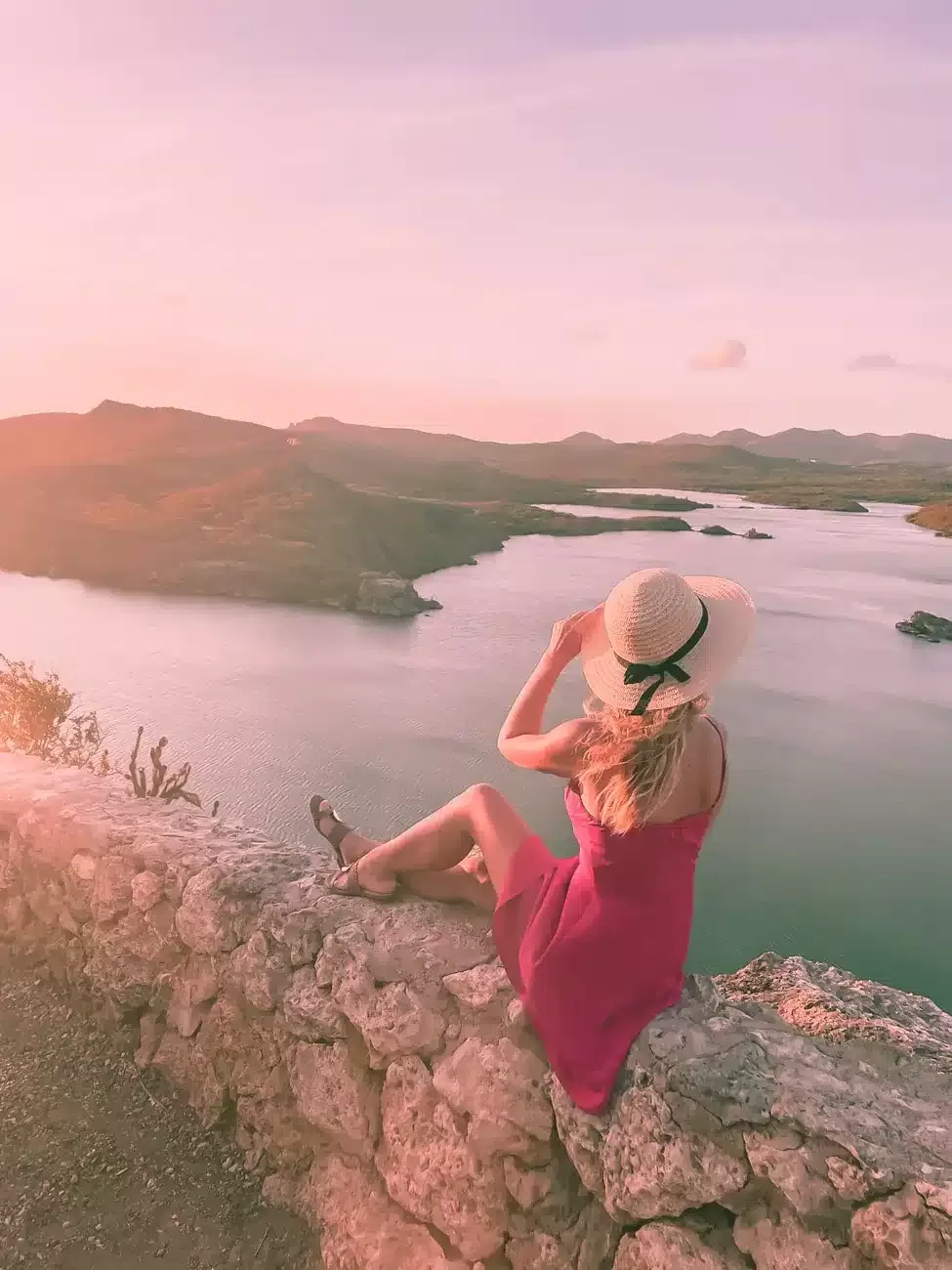
12. Hato Caves
The Hato caves (located close by the airport) are ancient caverns that are over 300.000 years old! You can tour the caves and see impressive stalagmites and stalactites in an amazing labyrinth.
Maybe you will even see some rare bats! One thing is for sure, the secret pool inside the Hato caves is impressive!
Later walk outside and retrace the steps of the Arawaks, the island’s former natives. The trail is called the Indian Trail and it recreated their path on the island.
They left their artwork behind on the island over 1.500 years ago! Another amazing place to visit in the area is the cactus garden, which displays all the fauna and flora of the island.
13. Visit a Museum
Curacao has an absolutely fascination history – and there are many great museums that capture it. There are various museum venues on the island that capture everything from the colonial times to the slavery period on the island.
They are all located in special historic monuments and are scattered around the island.
The Savonet Museum is at the entrance of the Christoffel Berg National Park. It is a former plantation house that was built in 1662 and is now an important cultural site.
You can learn about the social evolution in Curacao, from the first inhabitants to the plantation owners and the enslaved people. Different exhibits show different periods. Something interesting to see! For more info head over here.
The Mongui Maduro Museum is located in the Landhuis Rooi Catootje and shows the events of the Levy Maduro family. Learn about the influences of a renowned family that owned the plantation house – and see genuine artifacts from the 1850s.
The Jewish Cultural Historical Museum is located in the Mikve Israel-Emanuel Synagogue, built in 1732. The sanctuary and the museum are open to visitors and show about 375 years of Jewish life on the island. It starts in the year 1643 when the first Jews came to Curacao.
My favorite museum is the Curacao Maritime Museum. Curacao has one of the oldest harbors in the Caribbean, and the Curacao Maritime Museum in Scharloo will show you all 500 years of harbor history.
It starts with the arrival of the indigenous people called Caquetios. Followed by the Dutch and Spanish explorers, slave traders, and modern travelers! You can check out ship models, nautical cards, and other equipment. It also tells the story of the Royal Dutch Navy, which is protecting the island to this day.
The Aloe Vera Farm is a nice venue to visit and see the miracle plant grow. It is used for cosmetics and health products because of its anti-inflammatory properties. You can do a guided tour of the farm and learn how the plant is harvested.
If you are more into animals than plants – learn all about the cute Ostriches on the Curacao Ostrich farm. You can feed them and even stand on an egg – maybe it will be sturdy enough to hold your weight (:
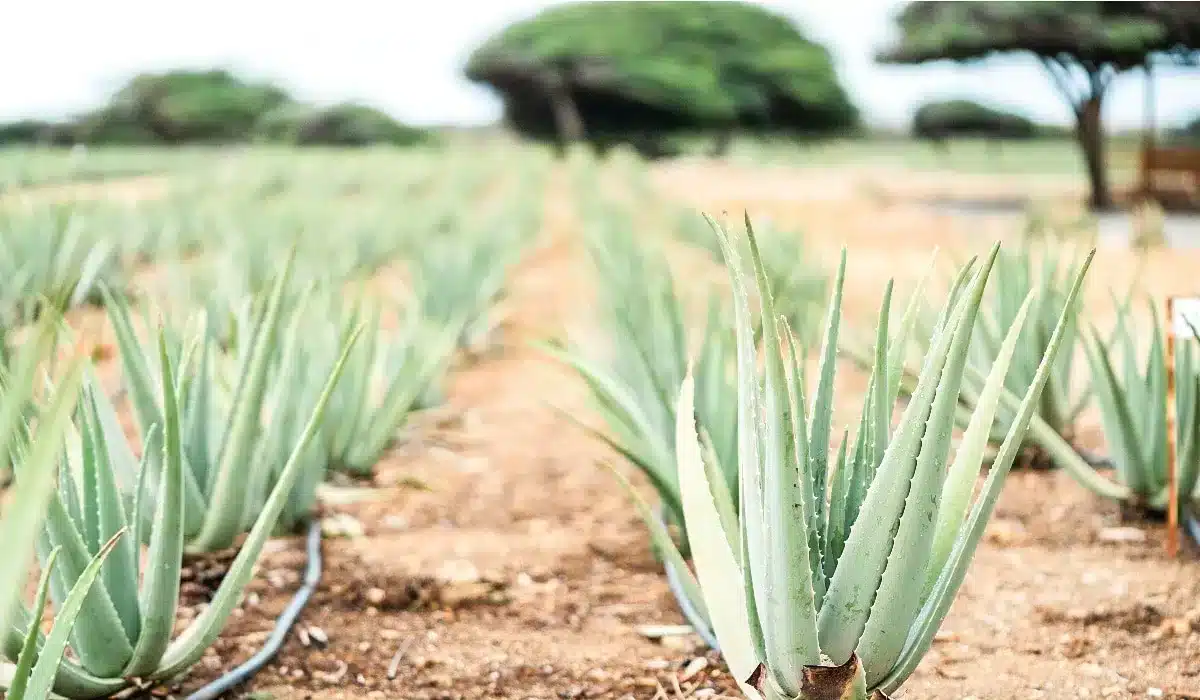
14. Eat Local Curacao Food
The cuisine of Curacao is as diverse as the island itself. Because of the many different cultural influences, the food is a mixture of South American, African, Dutch, and Spanish.
Make sure to head to one of my favorite Curacao Restaurants for authentic food.
Here are the most common foods from local cuisine that you need to try in Curacao:
A popular local dish is Kabritu, it is a hearty dish made from tender goat meat with herbs in it. You can try it out on Playa Porto Mari, in the restaurant called Willywood!
Stoba is an Antillean stew, made from beef. It is also super delicious and you should definitely try it.
Bolo Pretu is a super yummy black cake. It is made from liquor, dried fruits, and nuts! However, this is mostly being eaten at weddings and celebrations. Another delicious dessert is Arepa di Pampuna, a sort of sweet pumpkin pancake. Some people eat it as dessert, some others between meals. A great place to try local dishes is Jaanchie’s – the oldest restaurant in Curacao.
My favorite Caribbean food is spicy Caribbean rice (try it at the Buurvrouw restaurant) and fried Plantain (fried bananas).
Other things you should try in the Caribbean are Pastechi (deep-fried dough with fillings) and Trukí Pans (a sort of street food). Funchi is a yummy corn dish that is eaten as a side dish.
Drink some Awa di Lamunchi, Montana Beer, or Blue Curacao Liquor with your food!
Where to Eat in Curacao
A Curacao Travel Guide would not be comprehensive without a guide through Curacao’s food scene! The cuisine there is amazingly diverse and absolutely yummy!
I have created a more in-depth Curacao Restaurant Guide for more inspiration. But find some of my favorites below.
Karakter
Our favorite restaurant for a romantic dinner on the beach is definitely Karakter at the Koraal Estate. The service and the food were amazing and we had a stunning view of the sunset while enjoying some great cocktails.
Fort Nassau
Fort Nassau is a restaurant in Willemstad located on a small hill, from where you can see the entire city. Make sure to book a table in advance, so you can get one of the four special tables on a small terrace with the perfect sunset view. The food is superb and the service is amazing!
Mosa Cana
Mosa Cana is a tapas-style restaurant in Willemstad. It is great for a romantic dinner in an upbeat atmosphere since you will be sharing all the dishes. The food tastes amazing and there is something for everyone on the menu.
Bahia Lagun
Bahia Lagun is a small restaurant located right above the famous Playa Lagun beach. The restaurant has an amazing view of the sunset and the food is not only great but also relatively cheap in comparison to the rest of the island. During the day, you might see an iguana or a chicken storming the restaurant, which is always a blast!
De Buurvrouw
De Buurvrouw is a bit off the beaten path in Curacao. It is located on the Weg naar Westpunt. The restaurant serves amazing steaks and fish as well as fine wine.
It is built like a huge hut and decorated with cute fairy lights on the outside. The staff is super friendly and the food tastes great.
Mood Beach
Mood Beach is a bohemian-style restaurant located right on Mambo Beach. The decor of the restaurant is chic and the food has a taste of luxury. The food and the drinks were quite pricey in comparison to other places, but the romantic atmosphere made it still worth the visit.
Saint Tropez Ocean Club
One of our favorite lunch restaurants is the Saint Tropez Ocean Club in Willemstad. You can sit right by the water and enjoy great food in a nice luxurious atmosphere. However, we only recommend this place for breakfast and lunch. During the evening, many party-goers visit and make the place a bit too lively for our taste.
Playa Forti
For authentic seafood, our favorite restaurant was Playa Fort in Playa Forti. We ate some great seafood stew and enjoyed a marvelous view of the ocean in the background.
Bij Blauw
Bij Blauw is another one of my favorite restaurants in Willemstad. It is also located right on the water and decorated in boho style. They serve exquisite food all day and the staff is super friendly.
Origami
Origami is our favorite Sushi-restaurant on the island. Mondays and Thursdays you can enjoy all-you-can-eat sushi. Upon request, they will fill you up an entire wooden boat with special rolls for an amazing price.
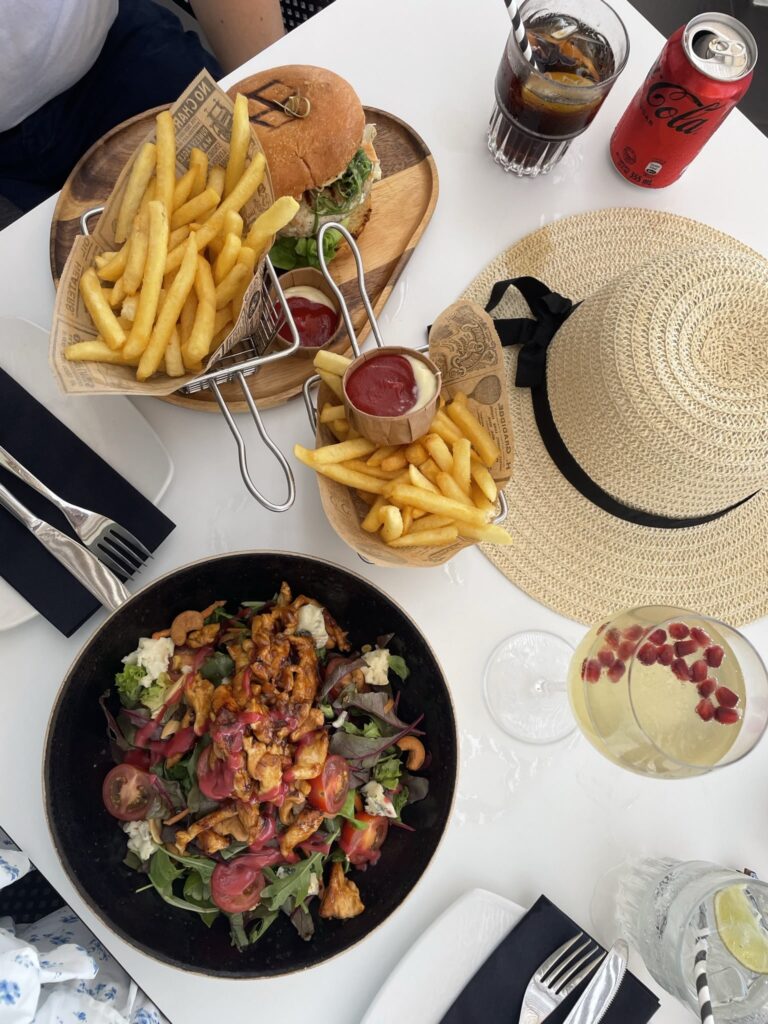
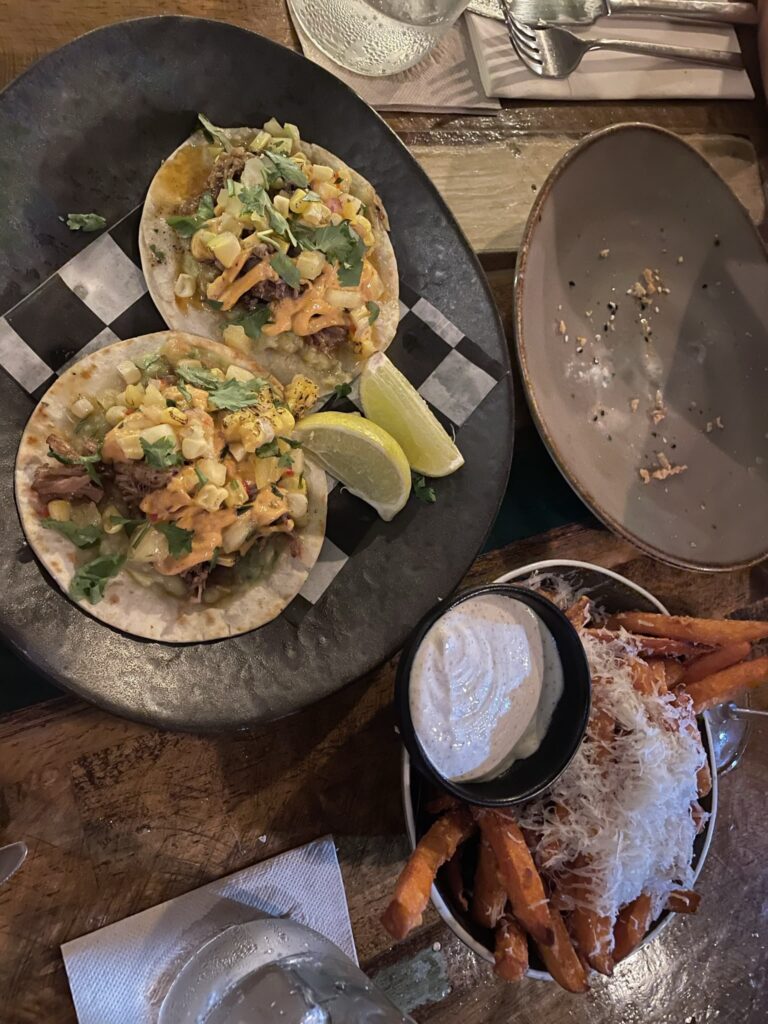
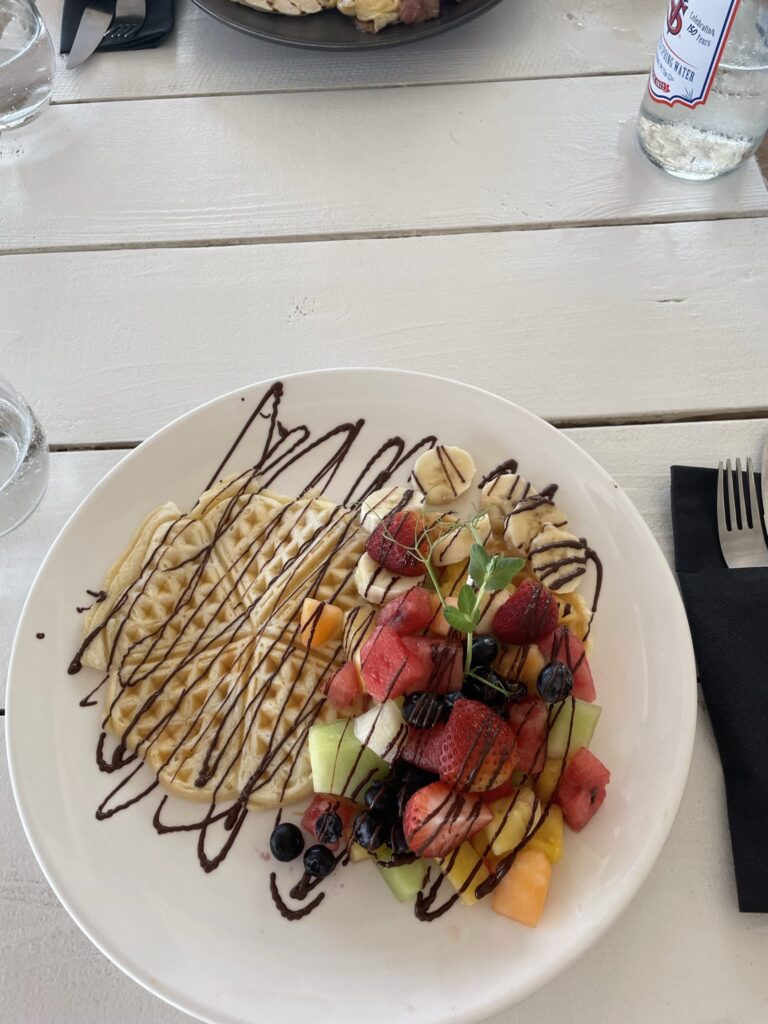
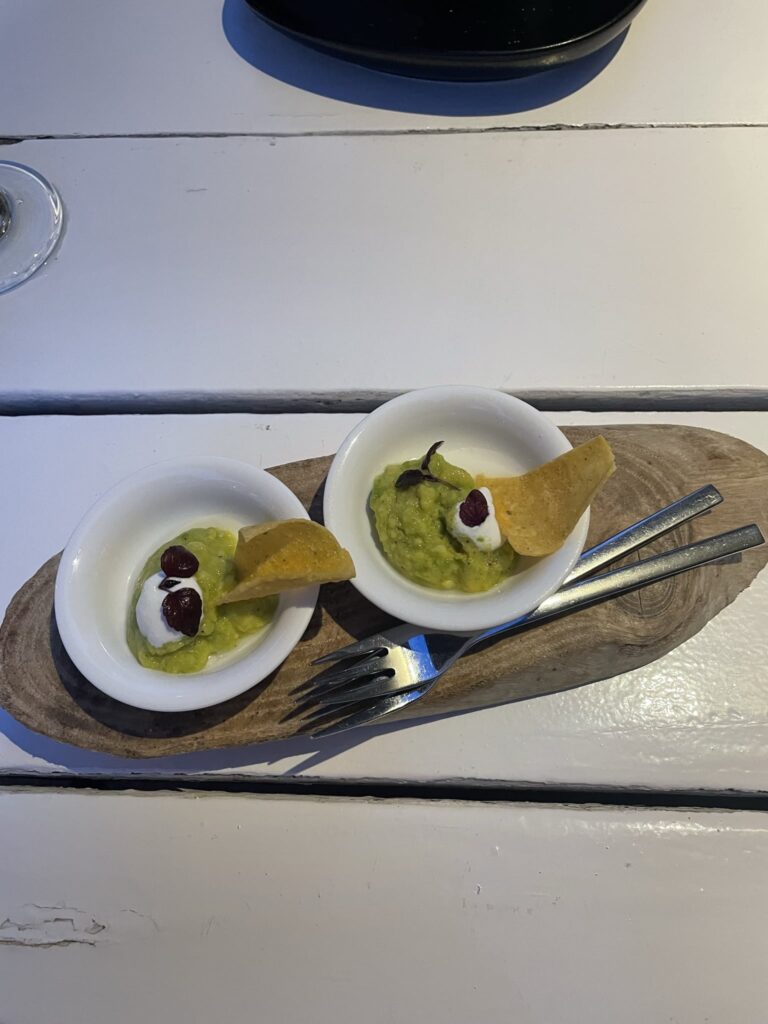
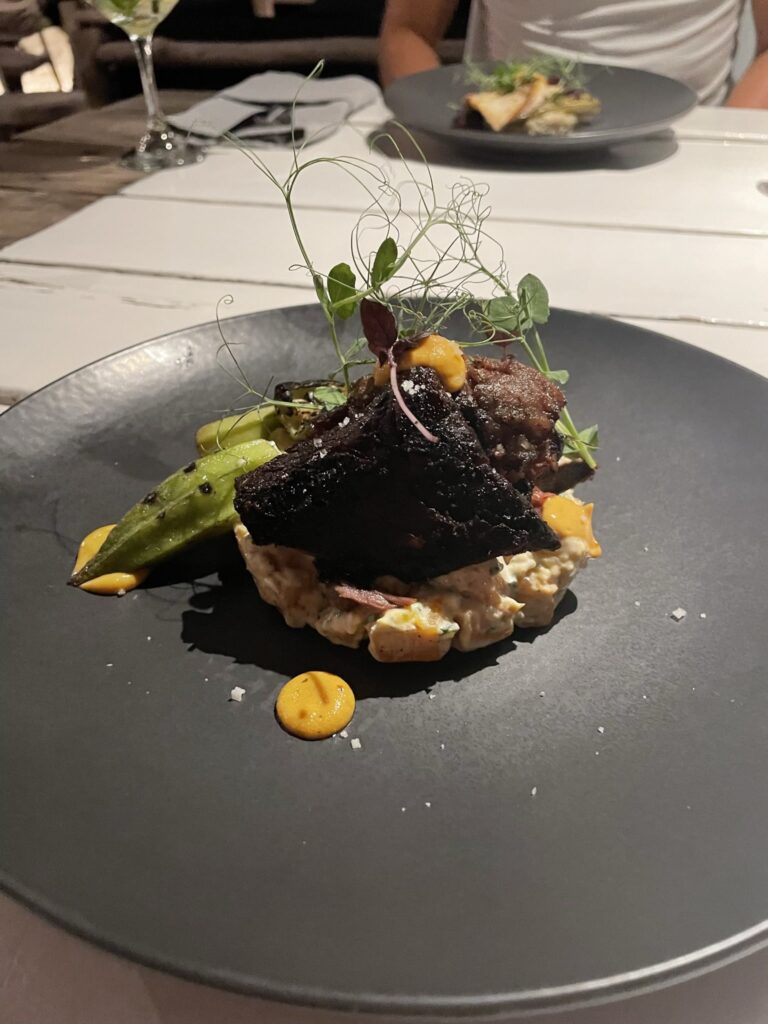
Is Curacao a Safe Place to Travel?
Many people ask me this question lots of times. I would rate it as a pretty safe place to visit, however, you do need to proceed with some caution.
Especially when compared to some other Caribbean islands, crime rates are relatively low.
I would not recommend wandering around alone at night or leaving your things unattended.
Certain areas on the island are very much haunted by criminality and you should therefore avoid them (e.g. Kooral Specht or Grote Berg).
Sadly, Curacao has an issue with stray dogs. They are usually harmless.
Most tourist areas are in my opinion safe to visit and I have not ever felt unsafe during my travels. Curacao is safe for American tourists.
Curacao is safe for solo female travelers, as long as they don’t visit non-touristic areas at night.
Do you need travel insurance in Curacao? Yes, travel insurance in Curacao is highly recommended. Unsafe roads, water sports accidents, and food poisoning are only a few examples of when travel insurance could come in handy. EKTA offers worldwide travel insurance with 24/7 service and no hidden fees or restrictions.
Where is Curacao Located in the Caribbean?
Curacao is one of the Caribbean islands that are part of the Kingdom of the Netherlands.
It’s about 40 miles north of the Venezuelan coast. The closest other islands to Curacao are Aruba and Bonaire.
As you can see on the map below, Curacao, Aruba, and Bonaire are right next to Venezuela (South America).
Curacao is the biggest of the ABC islands. It’s about 171 square miles. Aruba is a bit smaller, around 70 square miles, and Bonaire is the smallest, at roughly 111 square miles. So if you’re looking for more ground to cover and explore, Curacao’s got the edge
Geologically speaking, Curacao isn’t part of South America. It actually sits on the Caribbean Plate, not the South American Plate. Curacao is considered a Caribbean island through and through.
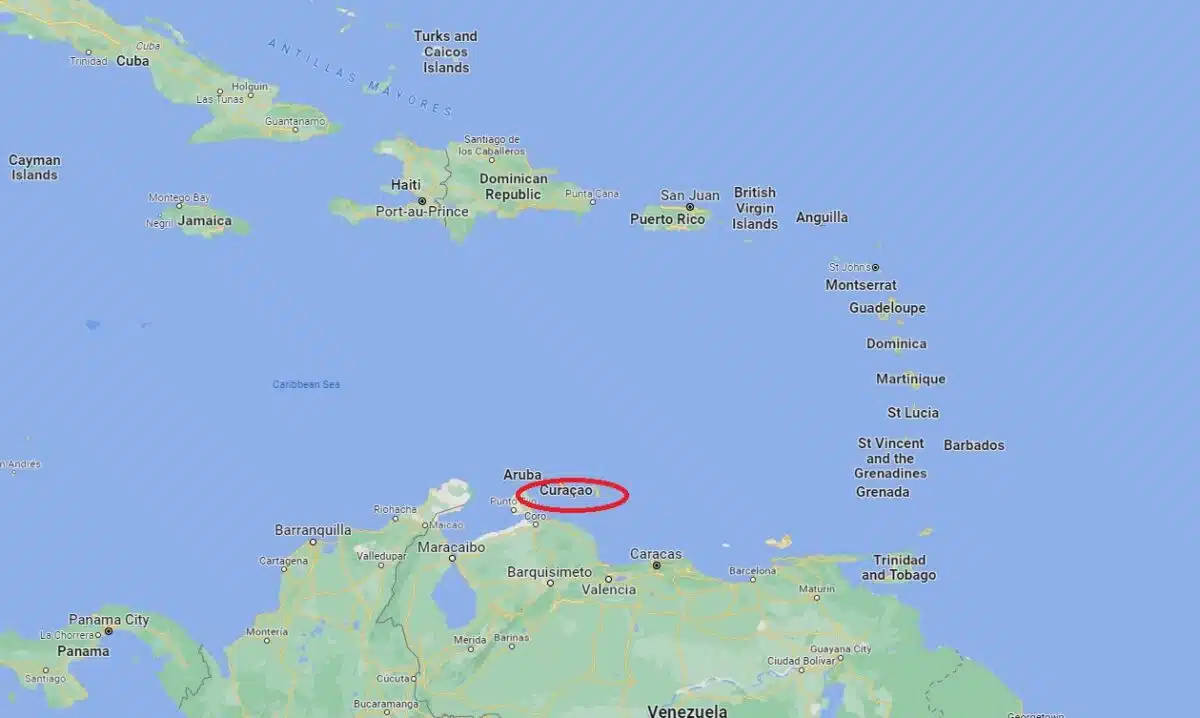
The History of Curacao Island
Before the Europeans even arrived on the small island of Curacao, it had already been inhabited for hundreds of years by the Awarak people, who came from the South American mainland.
In the year 1499, the first European, a Spaniard to be precise, arrived in Curacao. In the following 20 years, most of the original inhabitants had been enslaved and transferred to the island of Hispaniola.
From the year 1527, the Spanish settled on the island and imported most of their livestock and plants. After a while, the number of Spaniards living on the island steadily declined, while at the same time, many indigenous people returned.
In 1634, the island was invaded by the Dutch and their West India Company, who had recently separated themselves from the Spanish. Whilst the Spanish tried to take the island back many times, all of their attempts failed.
For most parts of the 17th and 18th centuries, the island of Curacao was mainly used as a trading hub for slaves between Africa and their end destination. After the bankruptcy of the Dutch West India Company, Curacao became an official colony of the Kingdom of the Netherlands.
During the beginning of the 19th century, the island was invaded by other countries, such as England, multiple times. In 1815 however, the island of Curacao was formally awarded to the Dutch.
Slavery was abolished in 1863 at last and Curacao lived on trade and agriculture. Shortly after, great oil reserves were discovered in Venezuela, and Shell built its presence in the form of a refinery in Curacao.
After prosperous times for Shell, the indigenous people grew rapidly more dissatisfied with the uneven distribution of wealth. After a big revolt, Shell left the island in 1980.
During the Second World War, the island of Curacao changed ownership many times, before finally gaining political autonomy in 1954. In 2010, Curacao won its autonomous status and, therefore is no longer part of the European Union and the Netherlands.
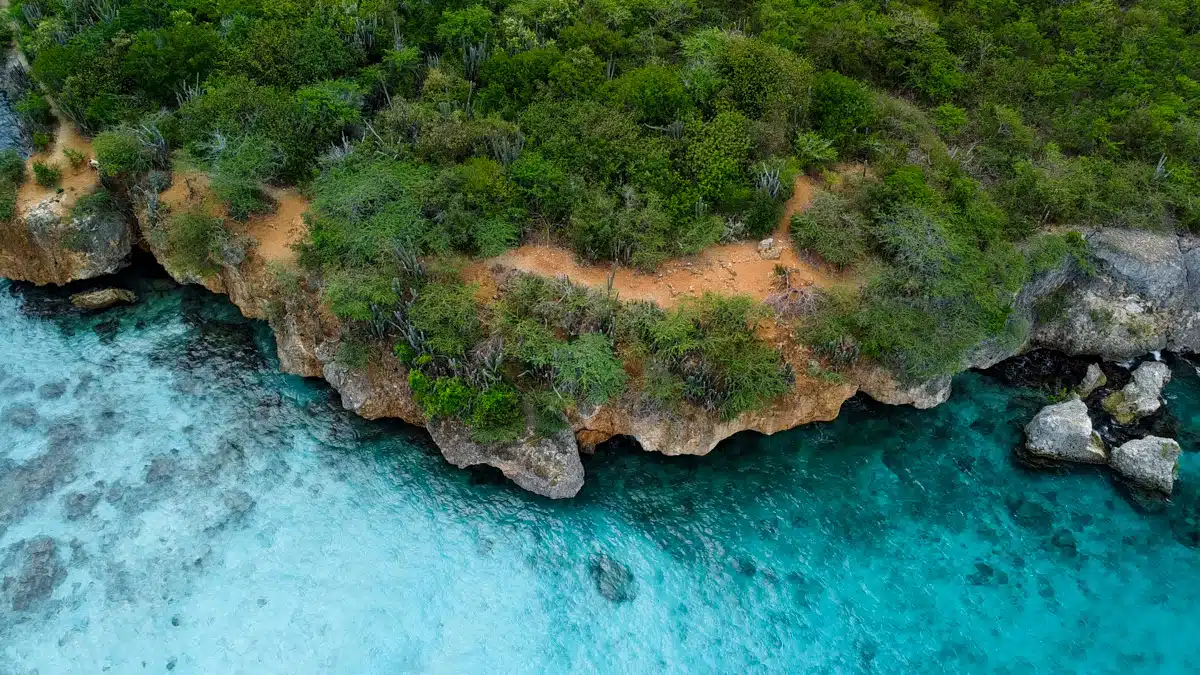
Is Curacao Worth Visiting?
Yes, Curacao is definitely worth visiting. As you can see in many articles in my Curacao Travel Blog, the diversity of the island is insane.
If you’re into diving, snorkeling, or just chilling on beautiful beaches, Curacao is a gem.
The island has a vibrant mix of cultures and a cool European vibe thanks to its Dutch influence. Food, language, and architecture are totally interesting and unique.
Plus, Willemstad’s colorful buildings make for awesome pics.
History and culture? They’ve got that too.
Lastly, nature is incredible: impressive national parks, stunning cliffs, and cute animals, wherever you look!
So, yeah, Curacao is totally worth adding to your travel bucket list! To sum it up: Curacao is known for colorful houses, impressive beaches nestled in between cliffs, great marine life, and a unique cultural blend.
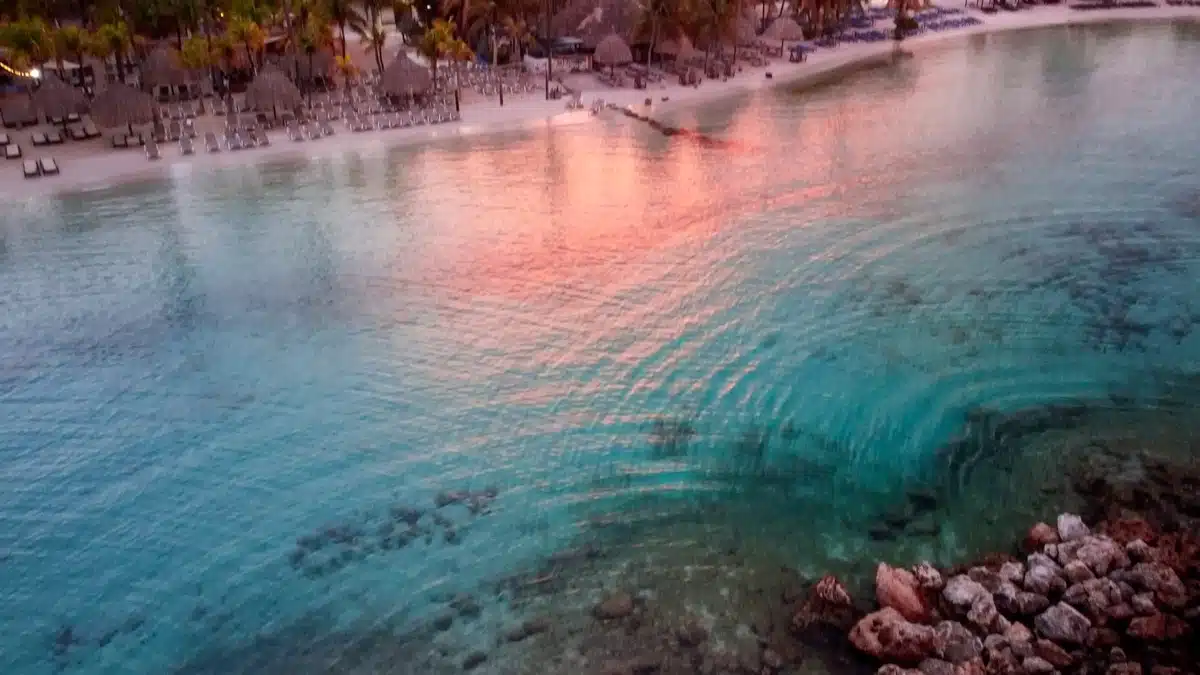
Is Curacao Expensive?
Curacao can be a bit pricey, but it’s not as expensive as some other Caribbean spots. Curacao is a lot cheaper than Aruba, but slightly more expensive than Bonaire.
Food and activities like diving can add up, but you can find good deals if you plan ahead. Accommodation ranges from fancy resorts to more budget-friendly options.
Here are some examples of what we spent in Curacao:
💰 Accommodation Luxury Hotel: 220 USD – 350 USD per person per night (All Inclusive)
💰 AirBnB House Playa Lagun: 150 USD per night
💰 Dinner Karakter: 150 USD for two people, starter, main dish, and dessert each + 2 cocktails pp
💰 Dinner Bahia: 65 USD for two people, starter shared, 2 cocktails, main dish each
💰 Breakfast BijBlauw: 45 USD for two people, each a main plate and coffee, juice
💰 Day Trip Klein Curacao: 150 USD p.p.
💰 Private Boat Trip Spanish Waters: 350 USD for 3 hours
💰 Groceries for 1 Week: Lunch & Breakfast: 150 USD
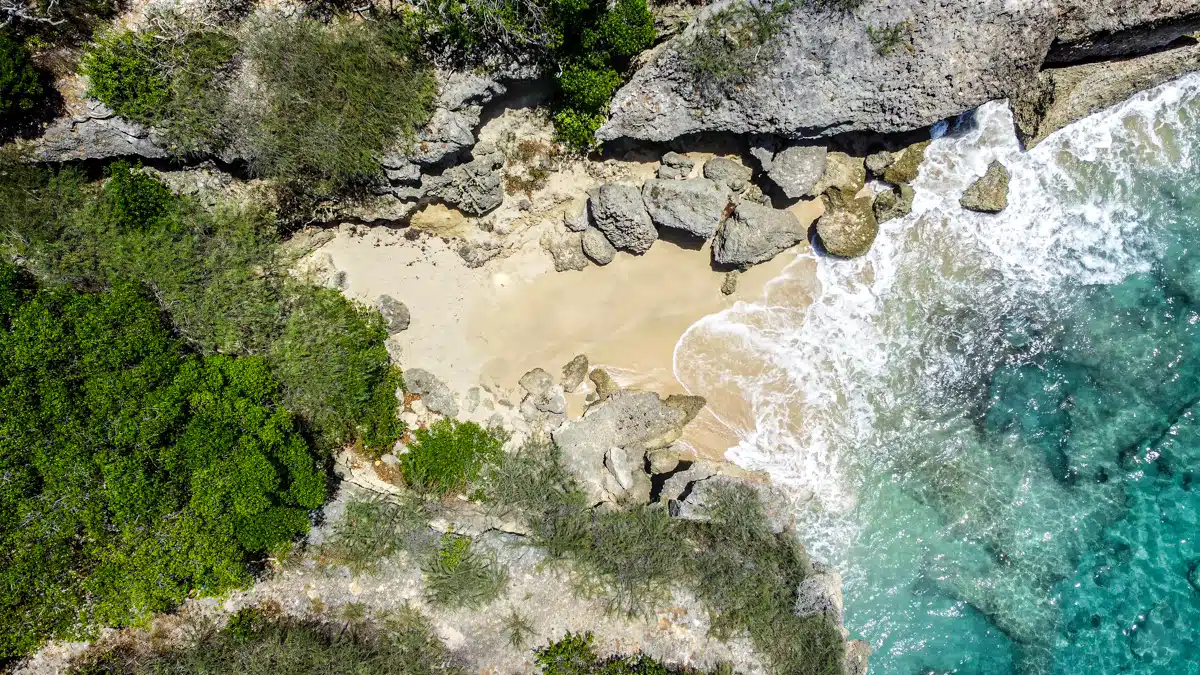
How Many Days in Curacao?
How many days you spend in Curacao kinda depends on what you wanna do. I suggest staying at least 2 weeks in Curacao to see all of the islands.
Of course, you can also make the most out of a shorter stay:
- 1 Day: Great for Cruise Ship Passengers, enough to see Willemstad or go to the beach
- 3-4 Days: If you’re short on time, you can still see some beaches, visit Willemstad, and maybe do a day of snorkeling or diving. Makes sense when you plan on going island hopping to Curacao’s neighboring countries Bonaire and Aruba
- 1 Week: A week gives you time to explore more beaches, dive at different sites, and take in some cultural spots like museums or plantations. You can even venture to the west side of the island, which is more remote and less touristy
- 10 Days or More: With this much time, you can really dive (pun intended!) into all Curacao offers. Check out multiple diving spots, go hiking, and maybe even take a boat trip to Klein Curacao, a nearby uninhabited island
Is Curacao a Country?
The question of whether or not Curacao is a country is not easily answered. Curacao is a bit of a unique case. It’s not fully its own country, but it’s not just a territory either.
It’s an autonomous country within the Kingdom of the Netherlands. So, it takes care of its own affairs like education and governance. But Curacao relies on the Netherlands for defense and foreign policy.
Kinda like a country, but with some backup!
So who owns Curacao island? The answer is nobody!
What Not to Do in Curacao?
😞 Be disrespectful to locals, don’t accept local customs
😞 harm the animals or the environment, leave trash out, etc.
😞 wander around alone at night outside tourist areas
😞 buy or take drugs
😞 ignoring water safety
😞 forget your sunscreen
😞 touching the corals
😞 take sand or seashells home
😞 try to import animal products to Curacao
Curacao Bucket List
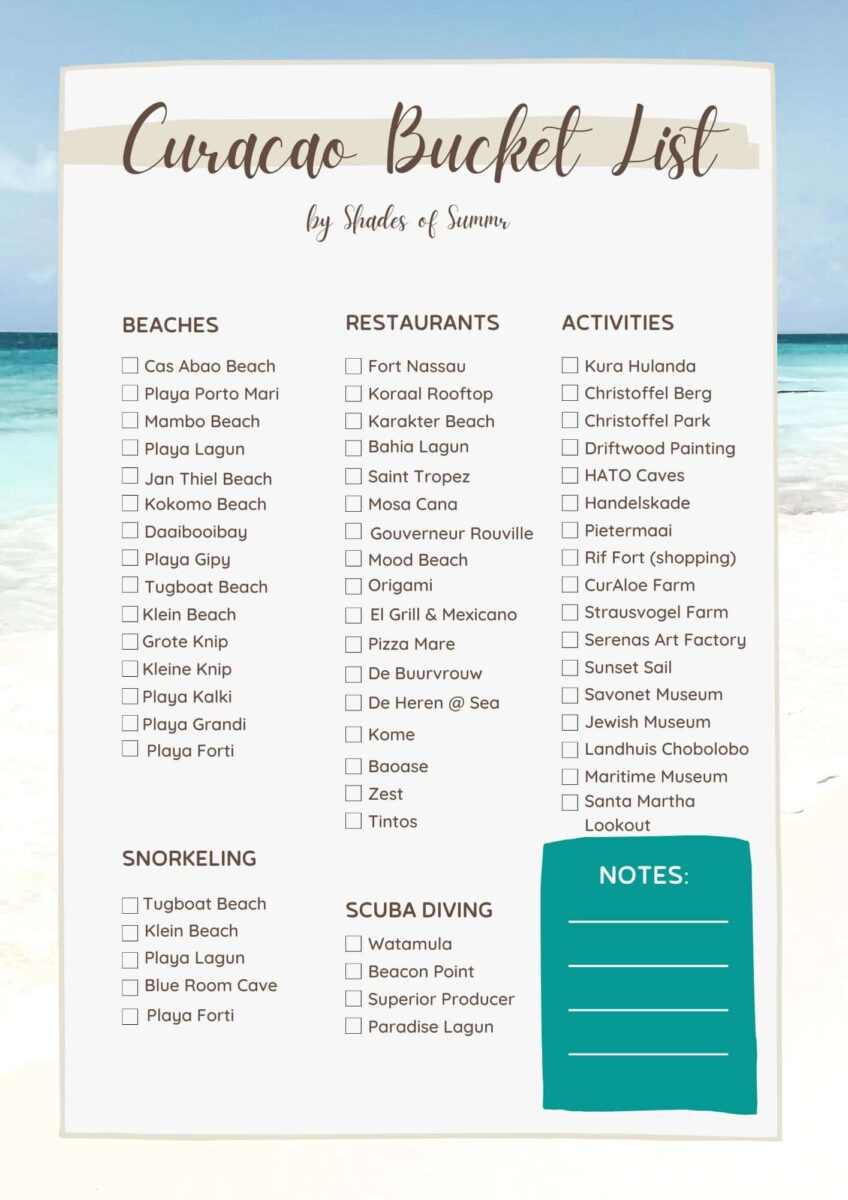
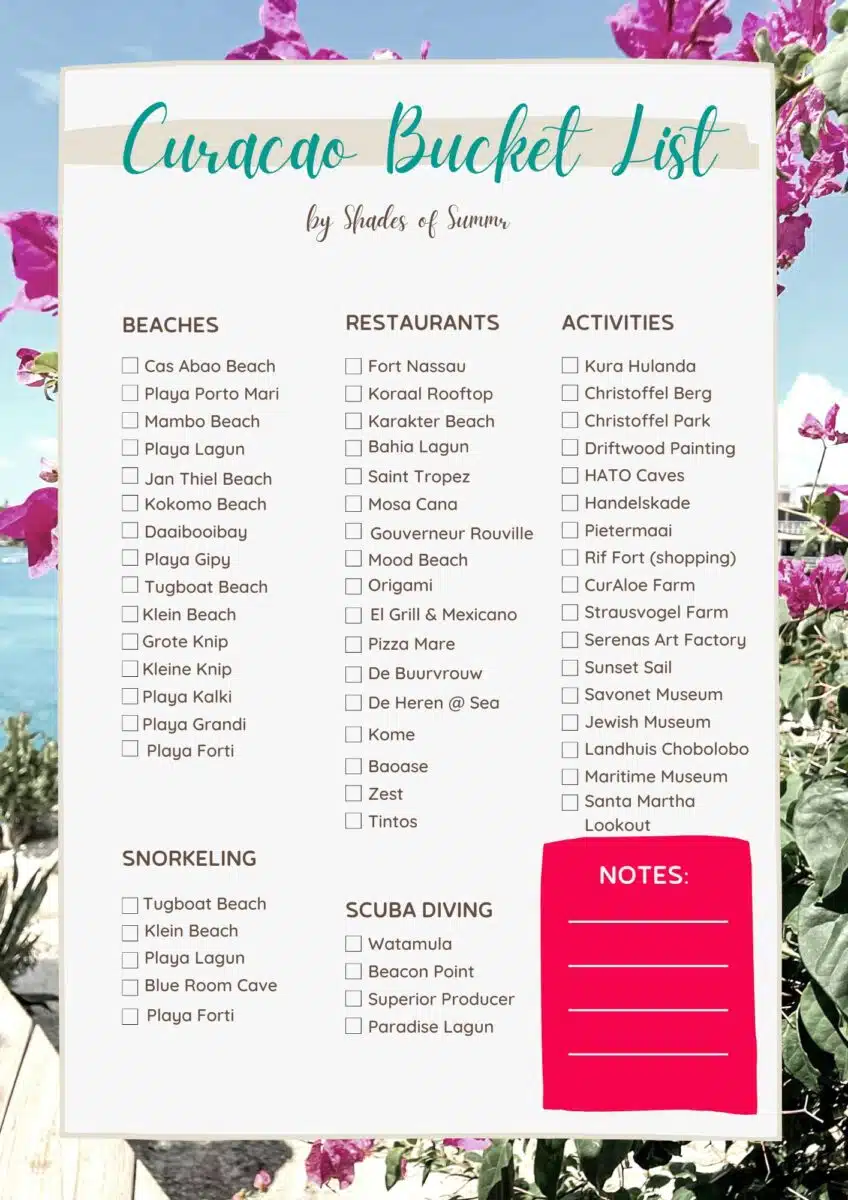
Curacao Packing List – What to Bring to Curacao
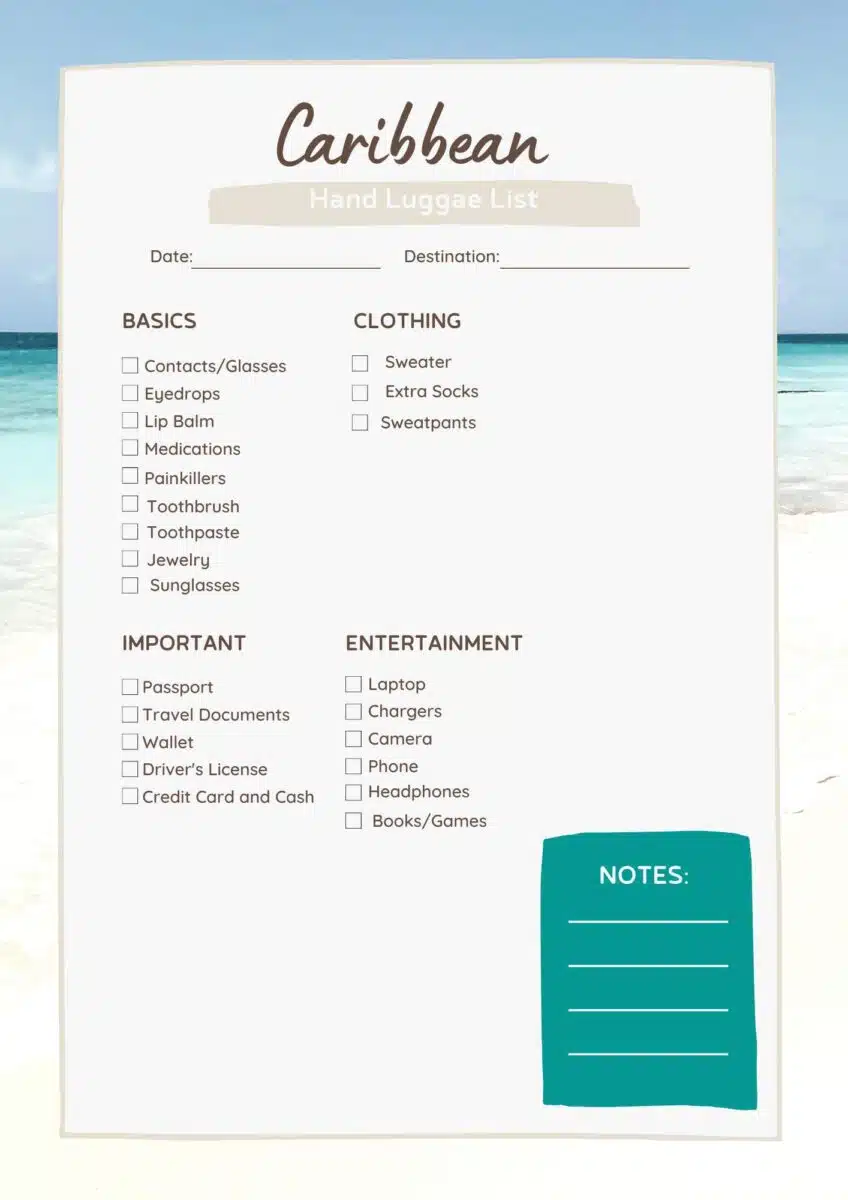
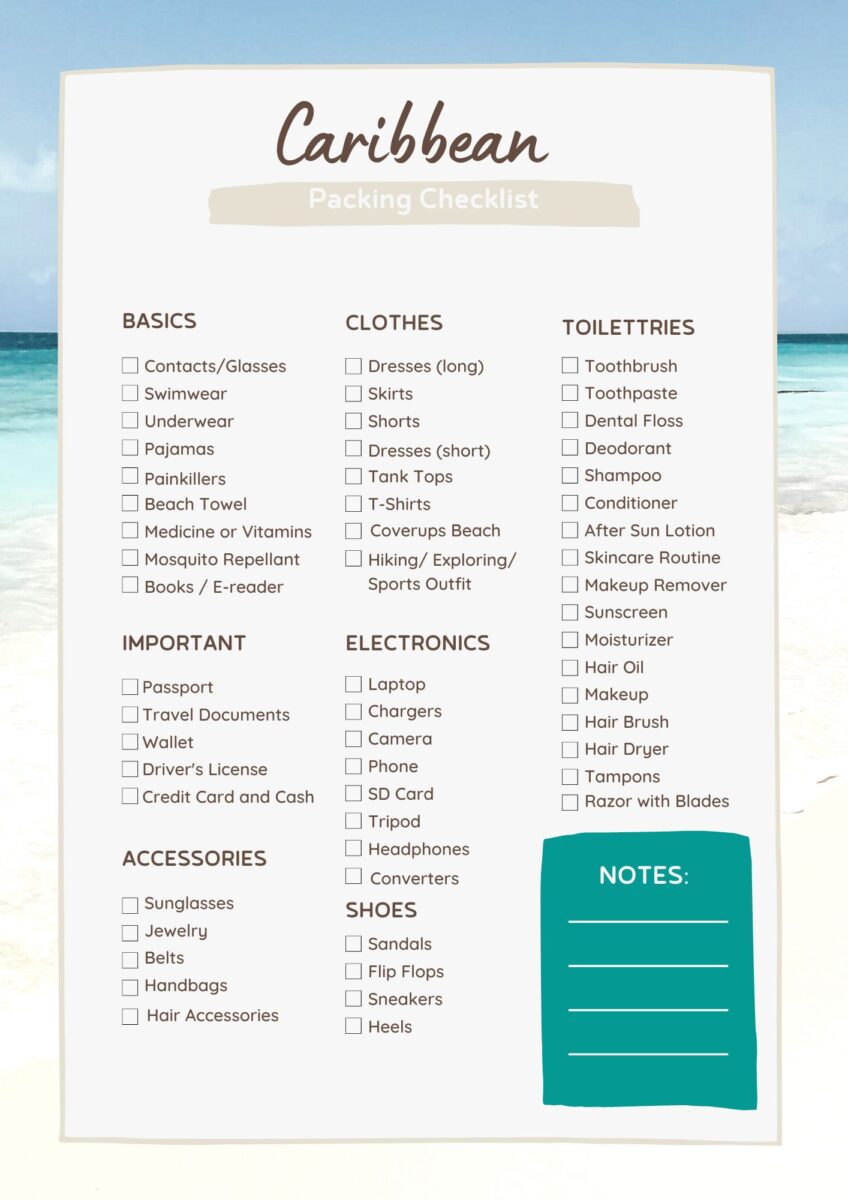
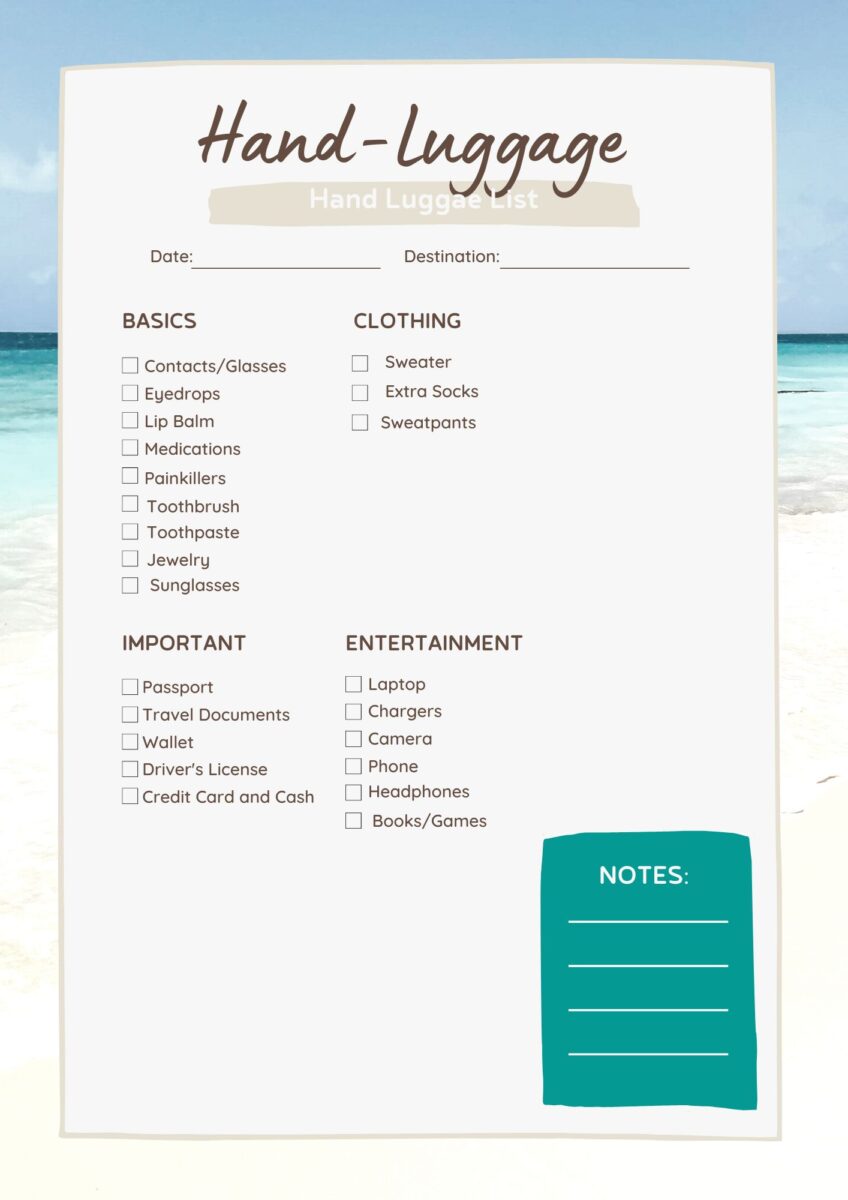
Shopping in Curacao
If you are planning on going shopping in Curacao, Willemstad, the capital, is your go-to.
Head to the Punda district for local crafts and boutiques, also designer stores and tax-free shops are located there. Go to the famous Curacao colorful houses to find all the shops you need.
Otrobanda, across the bridge, has a modern mall called Renaissance Mall. It has plenty of great stores and some amazing restaurants for a quick bite.
For a local vibe, try the floating market. It’s not just for food; you’ll find handmade goods too.
On the Mambo Beach Boulevard, you can also find some great shopping. They have dive stores, souvenir shops, and shops that sell decorations and swimwear.
The Sambil Shopping Center is great for groceries and other smaller stuff. They also have a movie theater there and some food courts. Keep in mind that grocery shopping in Curacao is a little more expensive if you want to get good-quality things.
Conclusion: Curacao Travel Guide
Now we have reached the end of this comprehensive Curacao Visitors Guide – and I hope I could answer any question that you might have had. All of my Curacao travel tips come from personal experience.
The island of Curacao is incredibly diverse, which is one of the big reasons why I love it so much. Not only the food, but the entire culture and the landscape are full of surprises.
Many spots in Curacao are true hidden gems just waiting to be discovered by you. Whether you are looking for the most romantic things to do in Curacao or where to stay in Curacao, this Curacao guide has got you covered!
If you are not sure yet if Curacao is the perfect spot for you, check out my comparison with Aruba and Bonaire.
Check all destinations for more travel info.
FAQ: Curacao Travel Tips
Before traveling to Curaçao, it’s important to know that the island has a unique blend of Dutch and Caribbean cultures. The official languages are Dutch and Papiamento, but English and Spanish are widely spoken. The local currency is the Netherlands Antillean guilder (ANG), but U.S. dollars are accepted in many places. The tap water is safe to drink, and the island offers stunning beaches, excellent diving spots, and a vibrant nightlife scene.
Yes, it is safe to travel to Curacao. Curaçao is generally considered a safe travel destination. The island has a lower crime rate compared to some other Caribbean destinations. However, it’s always important to take standard safety precautions and be aware of your surroundings, particularly in urban areas.
I suggest staying at least for a week in Curacao. 10 days or two weeks is the perfect amount of time to spend in Curacao. You can see everything the island has to offer without having to rush.
Curacao is neither very cheap nor expensive. Prices in the more touristic areas are slightly elevated, especially fine dining, and alcohol has its price. Luxury accommodations are very pricey as well. However, it is possible to travel Curacao on a budget.
No, you can’t go to Curacao without a passport. Upon arrival you need to fill out an online registration and bring your passport. Both will be checked at the airport.
No, Curacao does not have Uber. But they have a similar app, called Curacao 247. You can book car rides the exact same way as with Uber.
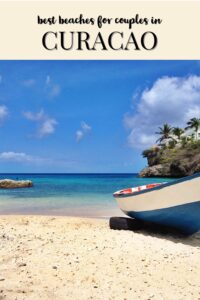
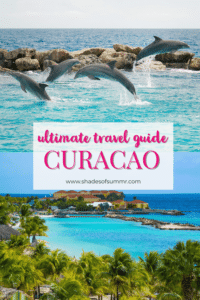
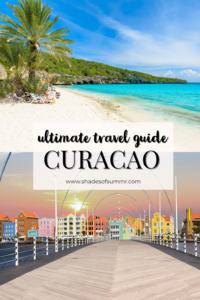
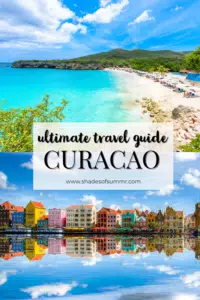
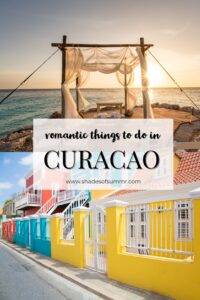
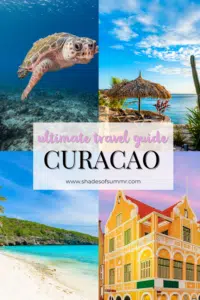
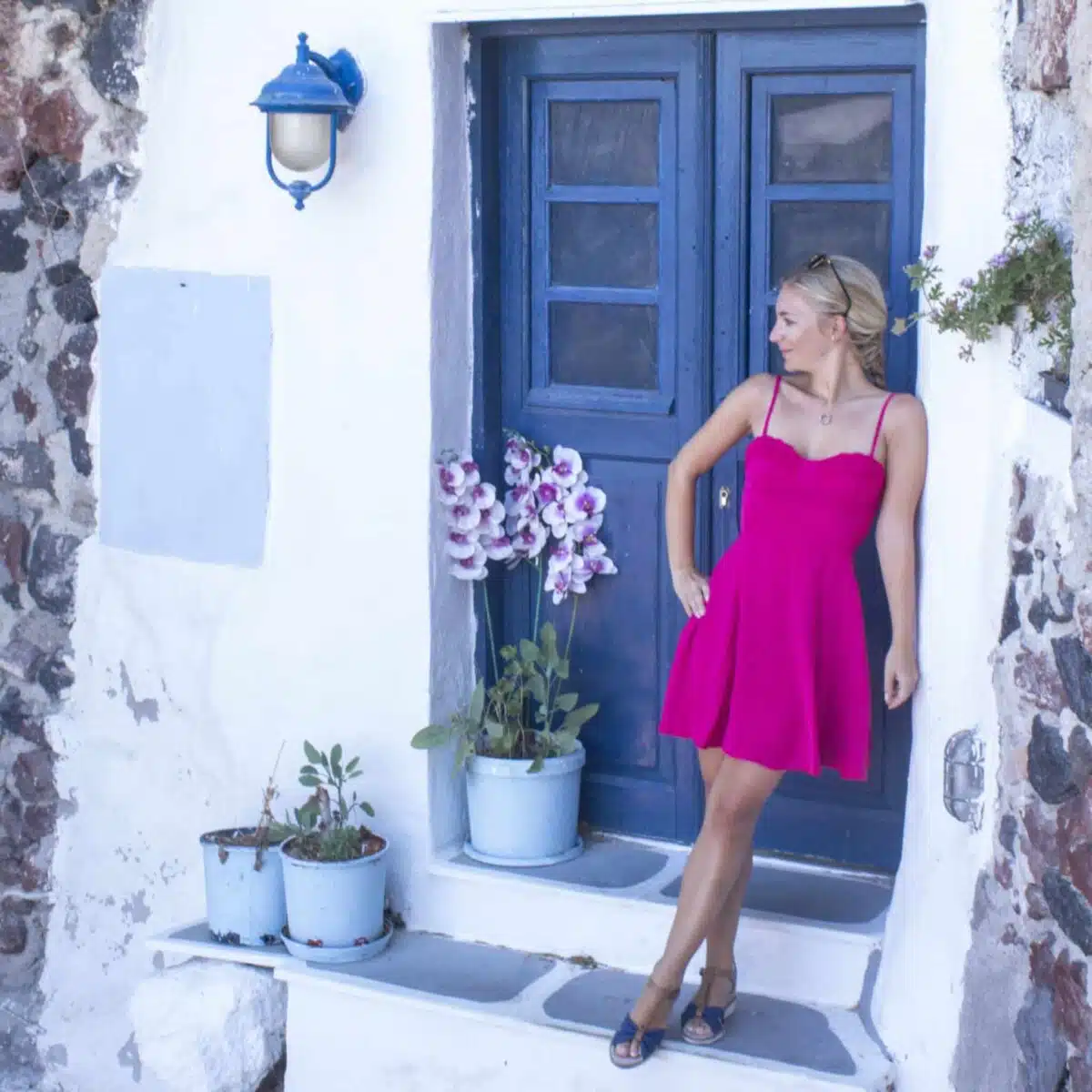
About the Author
Sabrina is a passionate travel blogger and content creator, based in the Netherlands. She spends most parts of the year abroad at various destinations with her husband.
She provides slow-paced itineraries that focus on quality over quantity. Sabrina wants to help her readers to get more out of their travel experiences – while doing less. Read more.


